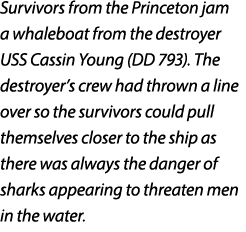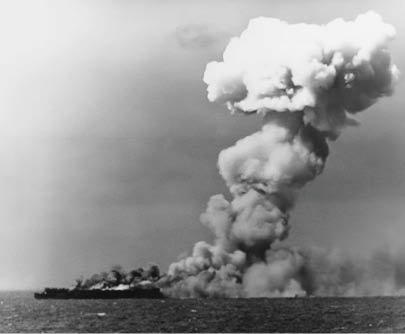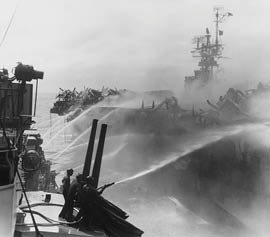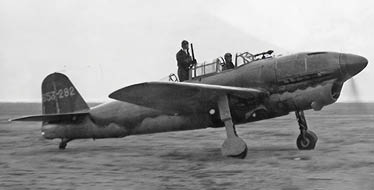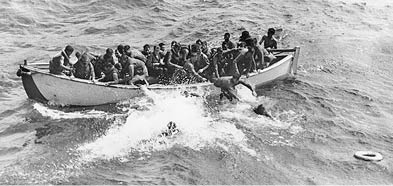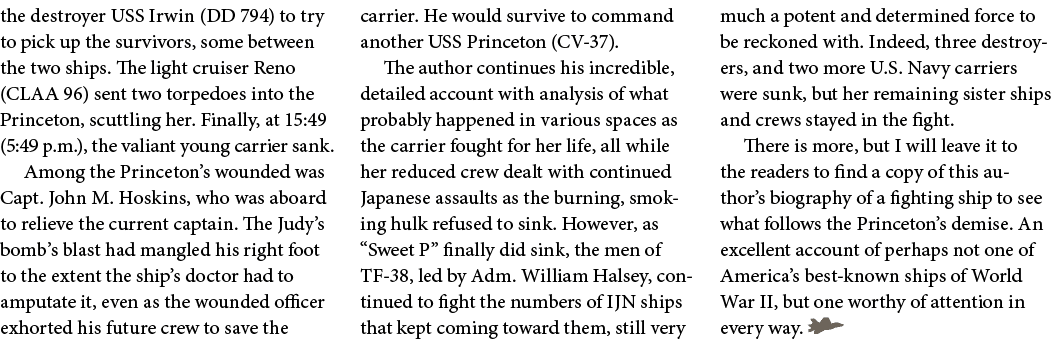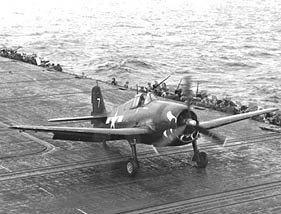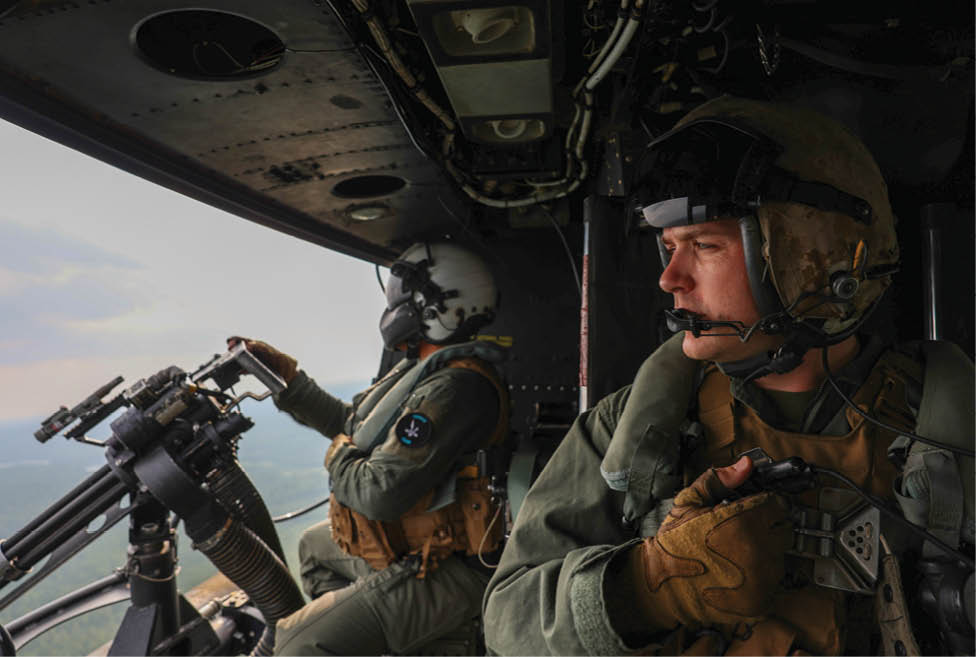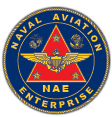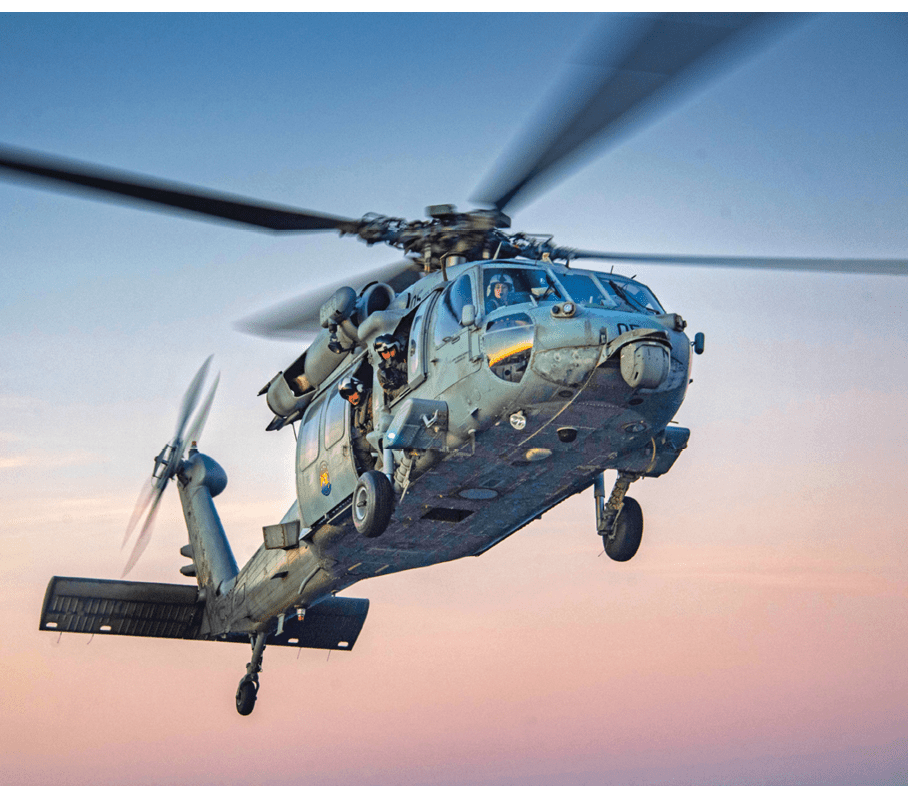

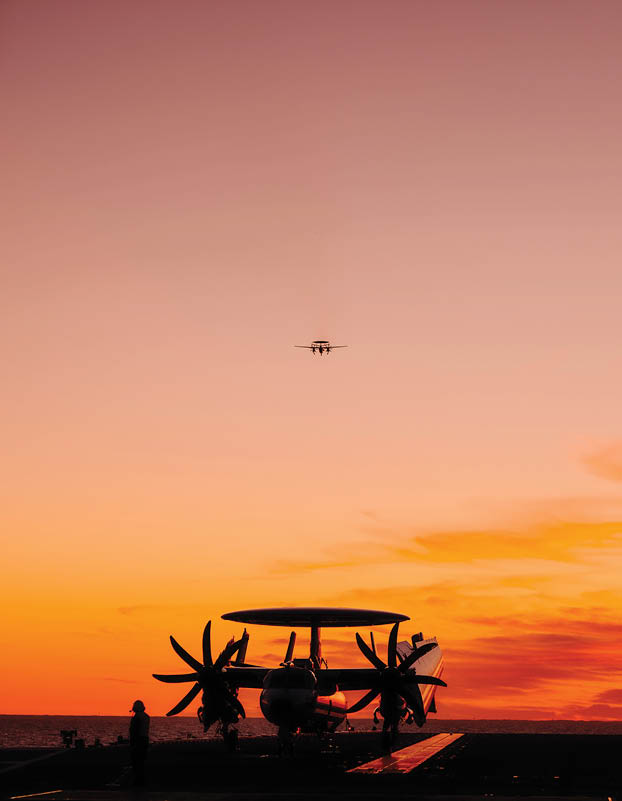

![[YOUR IMAGE HERE]](assets/images/item_11783.jpg)



![[YOUR IMAGE HERE]](assets/images/item_11328.png)




![[YOUR IMAGE HERE]](assets/images/item_11871.jpg)



![[YOUR IMAGE HERE]](assets/images/item_11338.png)


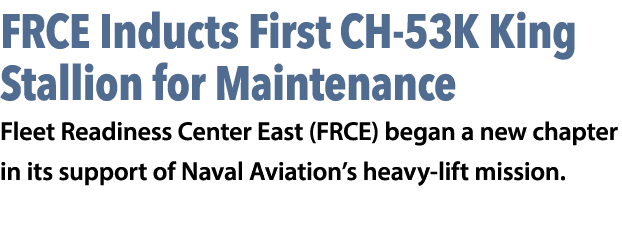
![[YOUR IMAGE HERE]](assets/images/item_11929.jpg)





![[YOUR IMAGE HERE]](assets/images/item_11494.png)

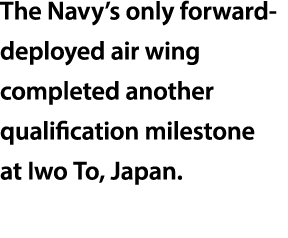
![[YOUR IMAGE HERE]](assets/images/item_11900.png)



![[YOUR IMAGE HERE]](assets/images/item_11346.png)



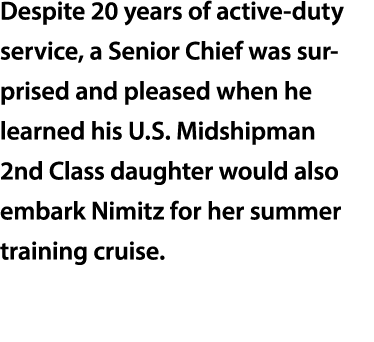
![[YOUR IMAGE HERE]](assets/images/item_11753.jpg)



![[YOUR IMAGE HERE]](assets/images/item_11319.png)

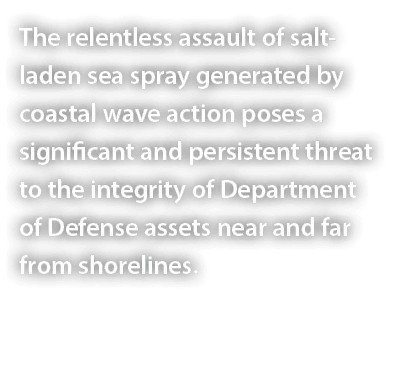


![[YOUR IMAGE HERE]](assets/images/item_11957.jpg)



![[YOUR IMAGE HERE]](assets/images/item_11274.png)










Navy’s T-54A Ushers in New Era of Pilot Training
PATUXENT RIVER, Md.—The Navy declared Initial Operational Capability (IOC) for the T-54A Marlin II training aircraft in May, giving future naval aviators a modern platform to prepare them for the advanced aircraft they will fly in the fleet.
“Achieving IOC reflects our commitment to provide student naval aviators with the most realistic, effective training aircraft to equip them for today’s complex battlespace,” said Capt. Duane Whitmer, Naval Undergraduate Flight Training Systems Program Office program manager. “We know what’s at stake for our nation’s sons and daughters. The T-54 team’s tireless dedication and hard work are making an impact on the next generation of pilots.”
The T-54A multi-engine training system is replacing the aging T-44C Pegasus aircraft at Naval Air Station Corpus Christi, Texas, which the Navy has begun to retire. The T-54A incorporates the latest avionics and navigational updates, including a pressurized, state-of-the-art cockpit with side-by-side seating and a jump seat. The platform provides advanced instrument and asymmetric engine handling training to student naval aviators selected for multi-engine and tilt-rotor fleet communities.
The aircraft’s technology also captures data that allows for conditioned-based maintenance plus, a capability that helps the Navy trend aircraft health over time to facilitate improved maintenance planning and efficiency.
The Navy has received 15 T-54A aircraft and plans to procure up to 64 aircraft per the contract it awarded to Textron in 2023. The T-54A meets training requirements for the Navy, Marine Corps, Coast Guard and select U.S. allies through 2055.
As part of Program Executive Office for Tactical Aircraft Programs, the Naval Undergraduate Flight Training Systems Program Office manages the T-54A, T-44C and other training aircraft. The program office develops and oversees diverse and carrier-capable naval flight training systems in which student pilots and undergraduate military flight officers acquire mission-critical aviation skills to carry out current and future missions.
From the Naval Undergraduate Flight Training Systems Program Office. 

SCHRIEVER SPACE FORCE BASE, Colo.—Navy Lt. Cmdr. Matthew Dring, National Space Defense Center operations integrations chief, was selected to attend the weapons instructor course at the U.S. Air Force Weapons School’s 328th Weapons Squadron.
The 328th Weapons Squadron, based at Nellis Air Force Base, Nevada, is part of Space Training and Readiness Command’s Space Delta 1. As the weapons school for the U.S. Space Force, it offers the Space Superiority Weapons Instructor Course and the Space Warfighter Advanced Instructor Course. Students undergo five to six months of rigorous training before becoming weapons officers—experts in tactical and operational space integration.
Dring’s selection for the course marks a significant step forward in joint force education and operational space integration. As one of the first Navy officers to attend, he’s forging a new path for interoperability between services, bridging the gap between space asset owners and users.
“When you look at the space domain, the 328th Weapons Squadron represents the pinnacle of space excellence,” Dring said. “For me, it was natural to want to go to the best school.”
Dring highlighted the importance of joint training and said attending a sister service program will allow him and his fellow Navy selectee to approach challenges from unique operational perspectives.
He credits his Navy training, especially in flight school and information warfare, as strong preparation for the rigorous program. Despite pre-course jitters, he remains focused on adapting his naval expertise to meet Space Force expectations.
“My hope is that we are not the only, but the first, to go through this program. It’s an incredible opportunity to train side by side with other services,” Dring said. “Not only will we be able to learn the same way, but ultimately, we’ll be able to integrate better on the battlefield.”
His participation signals a growing emphasis on interservice cooperation as space operations become increasingly integral to national security. Dring hopes his selection will pave the way for future Navy officers to attend the course, strengthening collaboration and battlefield integration across domains.
Written by Bridget Bonnette with the National Space Defense Center. 


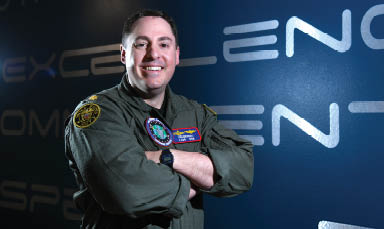










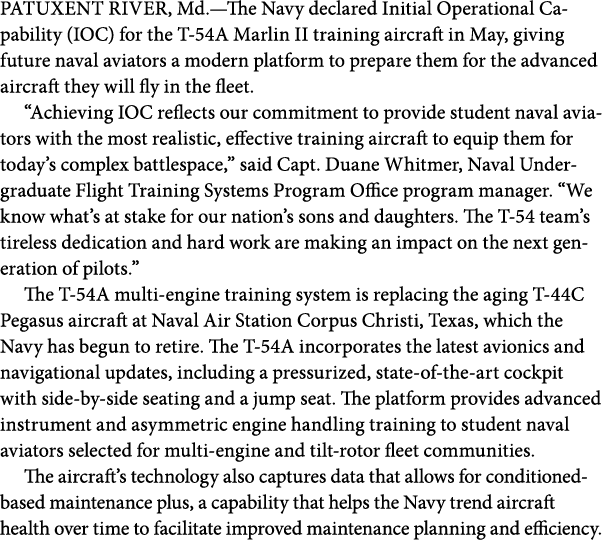


Director, Air Warfare
Editor in Chief
Editorial Board
Naval Aviation News Staff
Contributing Editor
Columnist
Cmdr. Peter B. Mersky, USNR (Ret.), Book Review Editor
Submission Guidelines
Commands may send news and announcements such as awards, rescues, milestones and other achievements to navy_nannews@navy.mil. Approved photos of Naval Aviation-oriented activities are always welcome. For longer feature articles, contact the editor in advance. Military contributors should forward articles about their commands only after internal security review and with command approval. For more information, contact us at navy_nannews@navy.mil.
Naval Aviation News (USPS 323-310; ISSN 0028-1417) is published quarterly for the Chief of Naval Operations by the Naval Air Systems Command. The Secretary of the Navy has determined that this publication is necessary in the transaction of business required by law. The use of a name of any specific manufacturer, commercial product, commodity or service in this publication does not imply endorsement by the Navy. Any opinions herein are those of the authors, and do not necessarily represent the views of Naval Aviation News, the Department of the Navy or the Department of Defense.
Please visit our website at:
https://navalaviationnews.navy.mil to view our current issue and download archived copies of the publication.
Approved for public release: SPR No. 2025-0553
NAVAIR Public Release Distribution Statement A—
“Approved for public release; distribution is unlimited”
Send your feedback to: navy_nannews@us.navy.mil

Navy’s T-54A Ushers in New Era of Pilot Training
PATUXENT RIVER, Md.—The Navy declared Initial Operational Capability (IOC) for the T-54A Marlin II training aircraft in May, giving future naval aviators a modern platform to prepare them for the advanced aircraft they will fly in the fleet.
“Achieving IOC reflects our commitment to provide student naval aviators with the most realistic, effective training aircraft to equip them for today’s complex battlespace,” said Capt. Duane Whitmer, Naval Undergraduate Flight Training Systems Program Office program manager. “We know what’s at stake for our nation’s sons and daughters. The T-54 team’s tireless dedication and hard work are making an impact on the next generation of pilots.”
The T-54A multi-engine training system is replacing the aging T-44C Pegasus aircraft at Naval Air Station Corpus Christi, Texas, which the Navy has begun to retire. The T-54A incorporates the latest avionics and navigational updates, including a pressurized, state-of-the-art cockpit with side-by-side seating and a jump seat. The platform provides advanced instrument and asymmetric engine handling training to student naval aviators selected for multi-engine and tilt-rotor fleet communities.
The aircraft’s technology also captures data that allows for conditioned-based maintenance plus, a capability that helps the Navy trend aircraft health over time to facilitate improved maintenance planning and efficiency.
The Navy has received 15 T-54A aircraft and plans to procure up to 64 aircraft per the contract it awarded to Textron in 2023. The T-54A meets training requirements for the Navy, Marine Corps, Coast Guard and select U.S. allies through 2055.
As part of Program Executive Office for Tactical Aircraft Programs, the Naval Undergraduate Flight Training Systems Program Office manages the T-54A, T-44C and other training aircraft. The program office develops and oversees diverse and carrier-capable naval flight training systems in which student pilots and undergraduate military flight officers acquire mission-critical aviation skills to carry out current and future missions.
From the Naval Undergraduate Flight Training Systems Program Office. 

SCHRIEVER SPACE FORCE BASE, Colo.—Navy Lt. Cmdr. Matthew Dring, National Space Defense Center operations integrations chief, was selected to attend the weapons instructor course at the U.S. Air Force Weapons School’s 328th Weapons Squadron.
The 328th Weapons Squadron, based at Nellis Air Force Base, Nevada, is part of Space Training and Readiness Command’s Space Delta 1. As the weapons school for the U.S. Space Force, it offers the Space Superiority Weapons Instructor Course and the Space Warfighter Advanced Instructor Course. Students undergo five to six months of rigorous training before becoming weapons officers—experts in tactical and operational space integration.
Dring’s selection for the course marks a significant step forward in joint force education and operational space integration. As one of the first Navy officers to attend, he’s forging a new path for interoperability between services, bridging the gap between space asset owners and users.
“When you look at the space domain, the 328th Weapons Squadron represents the pinnacle of space excellence,” Dring said. “For me, it was natural to want to go to the best school.”
Dring highlighted the importance of joint training and said attending a sister service program will allow him and his fellow Navy selectee to approach challenges from unique operational perspectives.
He credits his Navy training, especially in flight school and information warfare, as strong preparation for the rigorous program. Despite pre-course jitters, he remains focused on adapting his naval expertise to meet Space Force expectations.
“My hope is that we are not the only, but the first, to go through this program. It’s an incredible opportunity to train side by side with other services,” Dring said. “Not only will we be able to learn the same way, but ultimately, we’ll be able to integrate better on the battlefield.”
His participation signals a growing emphasis on interservice cooperation as space operations become increasingly integral to national security. Dring hopes his selection will pave the way for future Navy officers to attend the course, strengthening collaboration and battlefield integration across domains.
Written by Bridget Bonnette with the National Space Defense Center. 









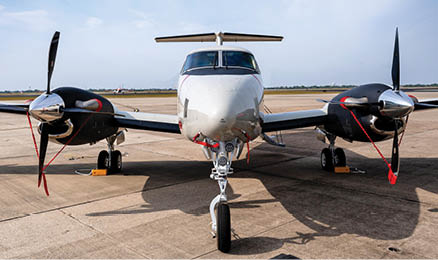









Director, Air Warfare
Editor in Chief
Editorial Board
Naval Aviation News Staff
Contributing Editor
Columnist
Cmdr. Peter B. Mersky, USNR (Ret.), Book Review Editor
Submission Guidelines
Commands may send news and announcements such as awards, rescues, milestones and other achievements to navy_nannews@navy.mil. Approved photos of Naval Aviation-oriented activities are always welcome. For longer feature articles, contact the editor in advance. Military contributors should forward articles about their commands only after internal security review and with command approval. For more information, contact us at navy_nannews@navy.mil.
Naval Aviation News (USPS 323-310; ISSN 0028-1417) is published quarterly for the Chief of Naval Operations by the Naval Air Systems Command. The Secretary of the Navy has determined that this publication is necessary in the transaction of business required by law. The use of a name of any specific manufacturer, commercial product, commodity or service in this publication does not imply endorsement by the Navy. Any opinions herein are those of the authors, and do not necessarily represent the views of Naval Aviation News, the Department of the Navy or the Department of Defense.
Please visit our website at:
https://navalaviationnews.navy.mil to view our current issue and download archived copies of the publication.
Approved for public release: SPR No. 2025-0553
NAVAIR Public Release Distribution Statement A—
“Approved for public release; distribution is unlimited”
Send your feedback to: navy_nannews@us.navy.mil





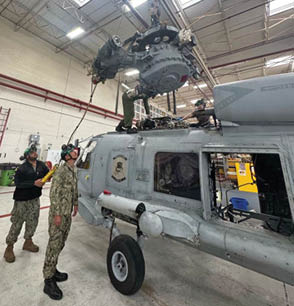


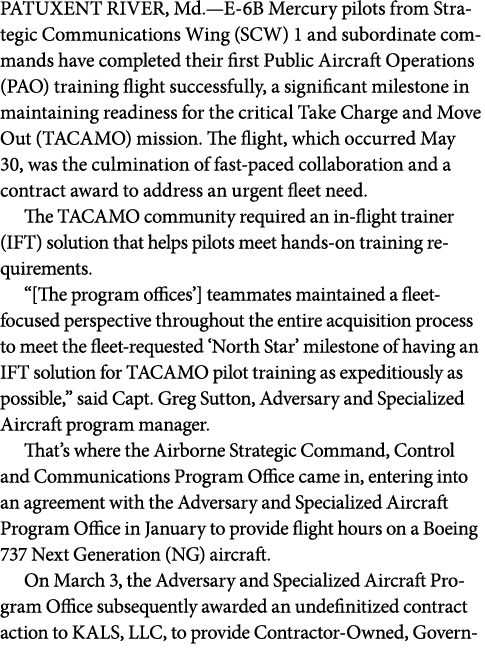
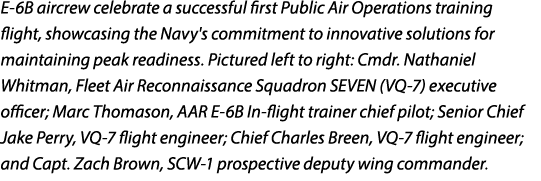
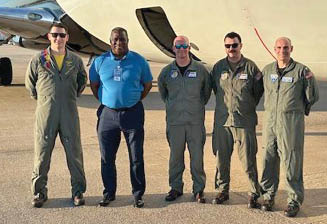




CNATTU North Island, HSM-35 Partner to Build Safer, More Prepared Fleet
SAN DIEGO—A unique collaboration between the Center for Naval Aviation Technical Training Unit (CNATTU) North Island and Helicopter Maritime Strike Squadron (HSM) 35 is proving to be a win-win initiative that strengthens fleet readiness, enhances safety and prepares the next generation of aircraft maintainers through hands-on experience.
The partnership began in December 2023, when HSM-35 Executive Officer Cmdr. Donald Safford met CNATTU North Island Commanding Officer Cmdr. Robert Kersey during the Prospective Commanding Officer training pipeline. Their discussion about common manning and training challenges laid the groundwork for establishing a program that would send CNATTU students on hold to HSM-35 for real-world fleet exposure.
“HSM-35 had an unscheduled deployment and was short on personnel,” Safford said. “Bringing in CNATTU students not only helped ease the workload but [also] gave our team leadership and instructor opportunities—training students in areas like flight line safety, corrosion control and ‘by the book’ maintenance.”
For the students, the experience has been equally valuable. Several sailors shared they gained a better understanding of their rating, saw broader applications of what they learned, and felt more prepared mentally for their first fleet assignments.
Aviation Machinist’s Mate Elijah Taa said, “I really did enjoy going to HSM-35. I made some friends and gained a lot of knowledge.”
Aviation Structural Mechanic Air Recruit Matthew Ward said the experience gave him a better picture of what to expect in the fleet, while Aviation Electrician’s Mate Airman Apprentice Nathan O’Meara emphasized despite being new and underprepared, he immediately felt like a valued member of the team.
Safford underscored the collaboration directly supports the Commander, Naval Air Forces, or “Air Boss’s,” initiative to reduce Class C aviation ground mishaps (AGMs) by 50 percent.
“Safety and maintenance are not theoretical here—they must be practiced and demonstrated,” Safford said. “Our sailors teach CNATTU students procedural compliance and reinforce safe, by-the-book maintenance, which benefits everyone.”
Feedback from the HSM-35 team has also been overwhelmingly positive.
“One of our E-5s told me, ‘They’re [students] so nice to have. It’s going to be sad to see them go,’” Safford said. “And when I see a new face in a cranial, I assume it’s a new check-in—that’s how integrated they’ve become.”
Areas for improvement include expanding opportunities for more hands-on involvement and having CNATTU instructors teach at the squadron during major maintenance periods. But the foundation that has been built is strong.
“Now, when we know we’ll be pulling a gearbox or replacing a rotor head, we notify CNATTU so students can observe,” Safford said. “It’s more efficient and relevant.”
This partnership exemplifies the Navy’s commitment to warfighting readiness, safety and sailor development.
“We’re investing in our people,” Safford said. “This is how we build a more adaptable, mission-ready force.”
Written by Chief Petty Officer Edna Rodriguez with the Center for Naval Aviation Technical Training, North Island, California. 

Collaboration, New Training Asset Boost E-6B Pilot Readiness
PATUXENT RIVER, Md.—E-6B Mercury pilots from Strategic Communications Wing (SCW) 1 and subordinate commands have completed their first Public Aircraft Operations (PAO) training flight successfully, a significant milestone in maintaining readiness for the critical Take Charge and Move Out (TACAMO) mission. The flight, which occurred May 30, was the culmination of fast-paced collaboration and a contract award to address an urgent fleet need.
The TACAMO community required an in-flight trainer (IFT) solution that helps pilots meet hands-on training requirements.
“[The program offices’] teammates maintained a fleet-focused perspective throughout the entire acquisition process to meet the fleet-requested ‘North Star’ milestone of having an IFT solution for TACAMO pilot training as expeditiously as possible,” said Capt. Greg Sutton, Adversary and Specialized Aircraft program manager.
That’s where the Airborne Strategic Command, Control and Communications Program Office came in, entering into an agreement with the Adversary and Specialized Aircraft Program Office in January to provide flight hours on a Boeing 737 Next Generation (NG) aircraft.
On March 3, the Adversary and Specialized Aircraft Program Office subsequently awarded an undefinitized contract action to KALS, LLC, to provide Contractor-Owned, Government-Operated (COGO) Contracted Air Services (CAS) under a PAO framework.
Adversary and Specialized Aircraft Program Office CAS executed its first COGO contract, working daily with KALS, to continuously review documentation and flight clearance requirements. The Adversary and Specialized Aircraft Program Office, the Airborne Strategic Command, Control and Communications Program Office, and SCW-1 also met weekly to ensure they achieved all identified requirements and deadlines. This collaboration helped transition from contract award to training flight operations in less than three months.
“This first PAO training flight demonstrates the Navy’s commitment to finding innovative solutions to maintain the readiness of our E-6B pilots,” said Capt. Roger Davis, Airborne Strategic Command, Control and Communications Program Office program manager. “This collaborative effort, from contract award to first flight, reflects the dedication and ingenuity of the entire team.”
“The phenomenal speed of contract award and execution of the first flight is very much appreciated,” said Capt. Britt Windeler, SCW-1 commander. “My utmost thanks go out to the entire team behind this effort.”
This new training program represents a significant step forward in Airborne Strategic Command, Control and Communications Program Office’s ongoing commitment to deliver a timely, affordable and effective IFT for the E-6B. In June 2021, the Navy purchased an E-3D aircraft from the Royal Air Force for $15 million, planning to convert it into a TE-6B IFT. However, a subsequent assessment determined the cost of converting the E-3D and restoring its airworthiness no longer provided a positive return on investment. The Navy issued a stop-work order on the contract with Northrop Grumman Corp. in November 2023. The aircraft is slated for parts harvesting and disposal by Northrop Grumman, where valuable parts—with an estimated value exceeding the initial $15 million purchase price—will be recovered and can be inducted into the supply system for the current E-6B fleet to use.
“I’m excited and looking forward to the bright future of continuing to train E-6B pilots as we start improving the flight experience in the community,” said Capt. Zach Brown, SCW-1 prospective deputy wing commander and primary SCW-1 lead for this effort.
Airborne Strategic Command, Control and Communications Program Office is headquartered at Naval Air Station Patuxent River, Maryland. Its mission is to deliver and support survivable, reliable and endurable airborne command, control and communications for the president, secretary of defense and U.S. Strategic Command.
Adversary and Specialized Aircraft Program Office is responsible for life cycle cradle-to-grave management of several legacy and out-of-inventory aircraft and engines, assigned by NAVAIR and contracted air services. Assigned platforms and services include: adversary aircraft (F-5, F-16); contracted aircraft services; U.S. Naval Test Pilot School/Naval Postgraduate School (T-38, H-72, X-26, U-6, NU-1B, O-2, OH-58C); and foreign military sales out of active Navy inventory aircraft (T-2, H-2, H-3 and A-4).
From the Airborne Strategic Command, Control and Communications Program Office. 






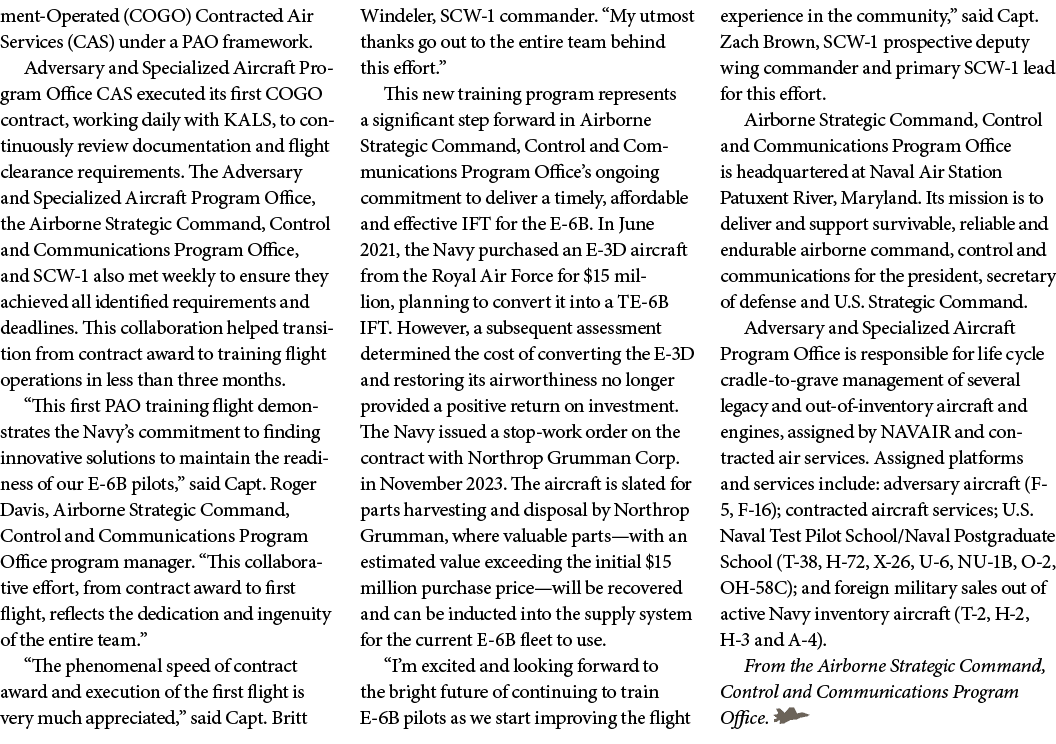
![Feedback from the HSM 35 team has also been overwhelmingly positive. “One of our E 5s told me, ‘They’re [students] so...](assets/images/item_13395.png)



CNATTU North Island, HSM-35 Partner to Build Safer, More Prepared Fleet
SAN DIEGO—A unique collaboration between the Center for Naval Aviation Technical Training Unit (CNATTU) North Island and Helicopter Maritime Strike Squadron (HSM) 35 is proving to be a win-win initiative that strengthens fleet readiness, enhances safety and prepares the next generation of aircraft maintainers through hands-on experience.
The partnership began in December 2023, when HSM-35 Executive Officer Cmdr. Donald Safford met CNATTU North Island Commanding Officer Cmdr. Robert Kersey during the Prospective Commanding Officer training pipeline. Their discussion about common manning and training challenges laid the groundwork for establishing a program that would send CNATTU students on hold to HSM-35 for real-world fleet exposure.
“HSM-35 had an unscheduled deployment and was short on personnel,” Safford said. “Bringing in CNATTU students not only helped ease the workload but [also] gave our team leadership and instructor opportunities—training students in areas like flight line safety, corrosion control and ‘by the book’ maintenance.”
For the students, the experience has been equally valuable. Several sailors shared they gained a better understanding of their rating, saw broader applications of what they learned, and felt more prepared mentally for their first fleet assignments.
Aviation Machinist’s Mate Elijah Taa said, “I really did enjoy going to HSM-35. I made some friends and gained a lot of knowledge.”
Aviation Structural Mechanic Air Recruit Matthew Ward said the experience gave him a better picture of what to expect in the fleet, while Aviation Electrician’s Mate Airman Apprentice Nathan O’Meara emphasized despite being new and underprepared, he immediately felt like a valued member of the team.
Safford underscored the collaboration directly supports the Commander, Naval Air Forces, or “Air Boss’s,” initiative to reduce Class C aviation ground mishaps (AGMs) by 50 percent.
“Safety and maintenance are not theoretical here—they must be practiced and demonstrated,” Safford said. “Our sailors teach CNATTU students procedural compliance and reinforce safe, by-the-book maintenance, which benefits everyone.”
Feedback from the HSM-35 team has also been overwhelmingly positive.
“One of our E-5s told me, ‘They’re [students] so nice to have. It’s going to be sad to see them go,’” Safford said. “And when I see a new face in a cranial, I assume it’s a new check-in—that’s how integrated they’ve become.”
Areas for improvement include expanding opportunities for more hands-on involvement and having CNATTU instructors teach at the squadron during major maintenance periods. But the foundation that has been built is strong.
“Now, when we know we’ll be pulling a gearbox or replacing a rotor head, we notify CNATTU so students can observe,” Safford said. “It’s more efficient and relevant.”
This partnership exemplifies the Navy’s commitment to warfighting readiness, safety and sailor development.
“We’re investing in our people,” Safford said. “This is how we build a more adaptable, mission-ready force.”
Written by Chief Petty Officer Edna Rodriguez with the Center for Naval Aviation Technical Training, North Island, California. 

Collaboration, New Training Asset Boost E-6B Pilot Readiness
PATUXENT RIVER, Md.—E-6B Mercury pilots from Strategic Communications Wing (SCW) 1 and subordinate commands have completed their first Public Aircraft Operations (PAO) training flight successfully, a significant milestone in maintaining readiness for the critical Take Charge and Move Out (TACAMO) mission. The flight, which occurred May 30, was the culmination of fast-paced collaboration and a contract award to address an urgent fleet need.
The TACAMO community required an in-flight trainer (IFT) solution that helps pilots meet hands-on training requirements.
“[The program offices’] teammates maintained a fleet-focused perspective throughout the entire acquisition process to meet the fleet-requested ‘North Star’ milestone of having an IFT solution for TACAMO pilot training as expeditiously as possible,” said Capt. Greg Sutton, Adversary and Specialized Aircraft program manager.
That’s where the Airborne Strategic Command, Control and Communications Program Office came in, entering into an agreement with the Adversary and Specialized Aircraft Program Office in January to provide flight hours on a Boeing 737 Next Generation (NG) aircraft.
On March 3, the Adversary and Specialized Aircraft Program Office subsequently awarded an undefinitized contract action to KALS, LLC, to provide Contractor-Owned, Government-Operated (COGO) Contracted Air Services (CAS) under a PAO framework.
Adversary and Specialized Aircraft Program Office CAS executed its first COGO contract, working daily with KALS, to continuously review documentation and flight clearance requirements. The Adversary and Specialized Aircraft Program Office, the Airborne Strategic Command, Control and Communications Program Office, and SCW-1 also met weekly to ensure they achieved all identified requirements and deadlines. This collaboration helped transition from contract award to training flight operations in less than three months.
“This first PAO training flight demonstrates the Navy’s commitment to finding innovative solutions to maintain the readiness of our E-6B pilots,” said Capt. Roger Davis, Airborne Strategic Command, Control and Communications Program Office program manager. “This collaborative effort, from contract award to first flight, reflects the dedication and ingenuity of the entire team.”
“The phenomenal speed of contract award and execution of the first flight is very much appreciated,” said Capt. Britt Windeler, SCW-1 commander. “My utmost thanks go out to the entire team behind this effort.”
This new training program represents a significant step forward in Airborne Strategic Command, Control and Communications Program Office’s ongoing commitment to deliver a timely, affordable and effective IFT for the E-6B. In June 2021, the Navy purchased an E-3D aircraft from the Royal Air Force for $15 million, planning to convert it into a TE-6B IFT. However, a subsequent assessment determined the cost of converting the E-3D and restoring its airworthiness no longer provided a positive return on investment. The Navy issued a stop-work order on the contract with Northrop Grumman Corp. in November 2023. The aircraft is slated for parts harvesting and disposal by Northrop Grumman, where valuable parts—with an estimated value exceeding the initial $15 million purchase price—will be recovered and can be inducted into the supply system for the current E-6B fleet to use.
“I’m excited and looking forward to the bright future of continuing to train E-6B pilots as we start improving the flight experience in the community,” said Capt. Zach Brown, SCW-1 prospective deputy wing commander and primary SCW-1 lead for this effort.
Airborne Strategic Command, Control and Communications Program Office is headquartered at Naval Air Station Patuxent River, Maryland. Its mission is to deliver and support survivable, reliable and endurable airborne command, control and communications for the president, secretary of defense and U.S. Strategic Command.
Adversary and Specialized Aircraft Program Office is responsible for life cycle cradle-to-grave management of several legacy and out-of-inventory aircraft and engines, assigned by NAVAIR and contracted air services. Assigned platforms and services include: adversary aircraft (F-5, F-16); contracted aircraft services; U.S. Naval Test Pilot School/Naval Postgraduate School (T-38, H-72, X-26, U-6, NU-1B, O-2, OH-58C); and foreign military sales out of active Navy inventory aircraft (T-2, H-2, H-3 and A-4).
From the Airborne Strategic Command, Control and Communications Program Office. 

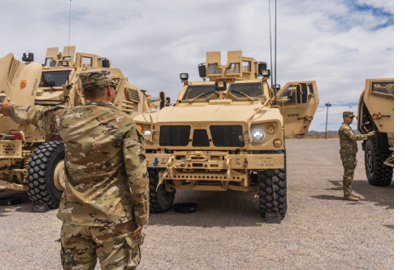



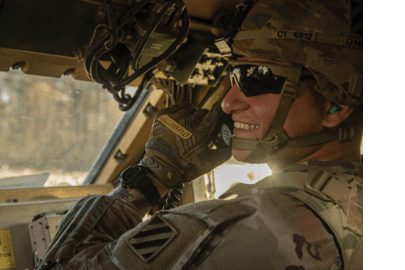



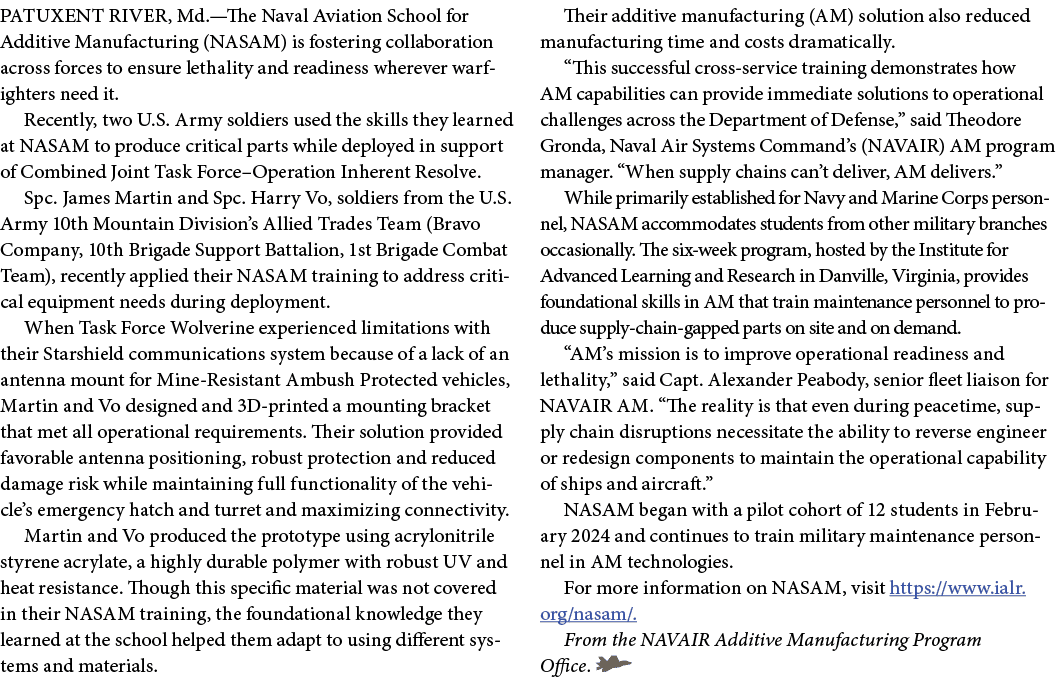




Carrier Air Wing 5 Operates at Iwo To
IWO TO, Japan—Aircrew from the Navy’s only forward-deployed air wing completed another qualification milestone with Field Carrier Landing Practices (FCLPs) at Iwo To, Japan, May 19 through 31.
FCLP is a required flight training for pilot qualification and proficiency that precedes aircraft carrier landing operations, ensuring warfighting readiness in support of regional security and stability in the U.S. Indo-Pacific region.
“[This is the training] that is required for Air Wing 5 air crews to get ready to go to sea,” said Capt. William Fallon, assistant chief of staff for Commander, U.S. Naval Forces Japan/Navy Region Japan. “[There is a great] amount of effort in the practice and the professionalism that goes into learning how to do this. [The] carrier environment is very challenging to work in—whether it’s daytime or nighttime. A large carrier suddenly feels very small when you do it, so it’s incumbent on us to practice realistically as we found right here, which is the benefit of Iwo To. It’s very dark at night, so it feels similar to our carrier environment.”
The routine training is required for all pilots of fixed-wing aircraft assigned to the Nimitz-class aircraft carrier USS George Washington (CVN 73). The types of aircraft that participate in FCLP are F-35C Lightning IIs, F/A-18E/F Super Hornets, EA-18G Growlers and E-2D Hawkeyes.
FCLPs also provide valuable training to Air Wing 5’s landing signal officers (LSO). LSOs, or “paddles,” are naval aviators trained specifically to guide and ensure the safe recovery of aircraft aboard aircraft carriers.
“Today, specifically, the ‘paddles’ are training on the manually operated visual landing aid system (MOVLAS),” said Lt. Cmdr. Tory West, an LSO attached to CVW-5. “The pilots have to respond to the MOVLAS system differently, so if the ship is moving differently, the pilots can adjust and land safely.”
Although Iwo To offers an invaluable training opportunity for fixed-wing pilots and aircrew, it does come with its challenges. Iwo To is not suitable as a permanent FCLP site because of the difficulty in maintaining its remote facilities and its lack of optional airfields for use during inclement weather or other emergency situations. The U.S. government reserves the right to conduct FCLP at alternate mainland facilities when required.
“If there is an issue on the field, whereas if we had an area to conduct FCLPs much closer to land, it would provide much bigger safety margins for us to operate and train,” Fallon said.
Air Wing 5 includes the EA-18 Growlers of Electronic Attack Squadron (VAQ) 141, the E-2 Hawkeyes of Airborne Command and Control Squadron (VAW) 125, the MH-60S Seahawk helicopters of Helicopter Sea Combat Squadron (HSC) 12, the F-35 Lightning IIs of Strike Fighter Squadron (VFA) 147 and the F/A-18F and F/A-18E Super Hornets of VFA-102.
Air Wing 5 became America’s first permanently forward-deployed air wing in 1973, when it embarked with the first-in-class aircraft carrier, USS Midway (CV 41), in Japan.
Written by Petty Officer 1st Class Brian Reynolds with Commander, Naval Forces Japan. 


PATUXENT RIVER, Md.—The Naval Aviation School for Additive Manufacturing (NASAM) is fostering collaboration across forces to ensure lethality and readiness wherever warfighters need it.
Recently, two U.S. Army soldiers used the skills they learned at NASAM to produce critical parts while deployed in support of Combined Joint Task Force–Operation Inherent Resolve.
Spc. James Martin and Spc. Harry Vo, soldiers from the U.S. Army 10th Mountain Division’s Allied Trades Team (Bravo Company, 10th Brigade Support Battalion, 1st Brigade Combat Team), recently applied their NASAM training to address critical equipment needs during deployment.
When Task Force Wolverine experienced limitations with their Starshield communications system because of a lack of an antenna mount for Mine-Resistant Ambush Protected vehicles, Martin and Vo designed and 3D-printed a mounting bracket that met all operational requirements. Their solution provided favorable antenna positioning, robust protection and reduced damage risk while maintaining full functionality of the vehicle’s emergency hatch and turret and maximizing connectivity.
Martin and Vo produced the prototype using acrylonitrile styrene acrylate, a highly durable polymer with robust UV and heat resistance. Though this specific material was not covered in their NASAM training, the foundational knowledge they learned at the school helped them adapt to using different systems and materials.
Their additive manufacturing (AM) solution also reduced manufacturing time and costs dramatically.
“This successful cross-service training demonstrates how AM capabilities can provide immediate solutions to operational challenges across the Department of Defense,” said Theodore Gronda, Naval Air Systems Command’s (NAVAIR) AM program manager. “When supply chains can’t deliver, AM delivers.”
While primarily established for Navy and Marine Corps personnel, NASAM accommodates students from other military branches occasionally. The six-week program, hosted by the Institute for Advanced Learning and Research in Danville, Virginia, provides foundational skills in AM that train maintenance personnel to produce supply-chain-gapped parts on site and on demand.
“AM’s mission is to improve operational readiness and lethality,” said Capt. Alexander Peabody, senior fleet liaison for NAVAIR AM. “The reality is that even during peacetime, supply chain disruptions necessitate the ability to reverse engineer or redesign components to maintain the operational capability of ships and aircraft.”
NASAM began with a pilot cohort of 12 students in February 2024 and continues to train military maintenance personnel in AM technologies.
For more information on NASAM, visit https://www.ialr.org/nasam/.
From the NAVAIR Additive Manufacturing Program
Office. 


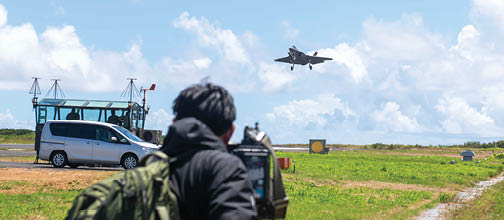




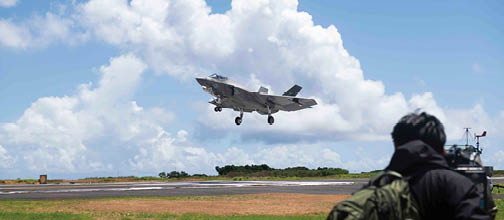
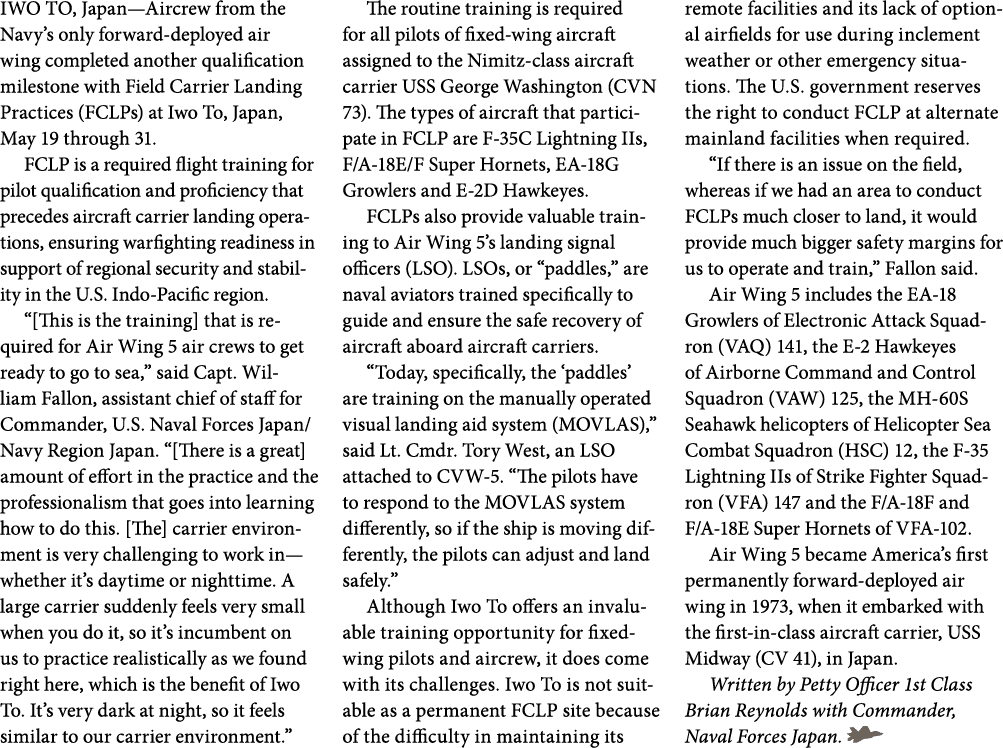
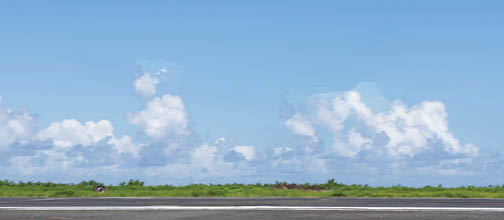




Carrier Air Wing 5 Operates at Iwo To
IWO TO, Japan—Aircrew from the Navy’s only forward-deployed air wing completed another qualification milestone with Field Carrier Landing Practices (FCLPs) at Iwo To, Japan, May 19 through 31.
FCLP is a required flight training for pilot qualification and proficiency that precedes aircraft carrier landing operations, ensuring warfighting readiness in support of regional security and stability in the U.S. Indo-Pacific region.
“[This is the training] that is required for Air Wing 5 air crews to get ready to go to sea,” said Capt. William Fallon, assistant chief of staff for Commander, U.S. Naval Forces Japan/Navy Region Japan. “[There is a great] amount of effort in the practice and the professionalism that goes into learning how to do this. [The] carrier environment is very challenging to work in—whether it’s daytime or nighttime. A large carrier suddenly feels very small when you do it, so it’s incumbent on us to practice realistically as we found right here, which is the benefit of Iwo To. It’s very dark at night, so it feels similar to our carrier environment.”
The routine training is required for all pilots of fixed-wing aircraft assigned to the Nimitz-class aircraft carrier USS George Washington (CVN 73). The types of aircraft that participate in FCLP are F-35C Lightning IIs, F/A-18E/F Super Hornets, EA-18G Growlers and E-2D Hawkeyes.
FCLPs also provide valuable training to Air Wing 5’s landing signal officers (LSO). LSOs, or “paddles,” are naval aviators trained specifically to guide and ensure the safe recovery of aircraft aboard aircraft carriers.
“Today, specifically, the ‘paddles’ are training on the manually operated visual landing aid system (MOVLAS),” said Lt. Cmdr. Tory West, an LSO attached to CVW-5. “The pilots have to respond to the MOVLAS system differently, so if the ship is moving differently, the pilots can adjust and land safely.”
Although Iwo To offers an invaluable training opportunity for fixed-wing pilots and aircrew, it does come with its challenges. Iwo To is not suitable as a permanent FCLP site because of the difficulty in maintaining its remote facilities and its lack of optional airfields for use during inclement weather or other emergency situations. The U.S. government reserves the right to conduct FCLP at alternate mainland facilities when required.
“If there is an issue on the field, whereas if we had an area to conduct FCLPs much closer to land, it would provide much bigger safety margins for us to operate and train,” Fallon said.
Air Wing 5 includes the EA-18 Growlers of Electronic Attack Squadron (VAQ) 141, the E-2 Hawkeyes of Airborne Command and Control Squadron (VAW) 125, the MH-60S Seahawk helicopters of Helicopter Sea Combat Squadron (HSC) 12, the F-35 Lightning IIs of Strike Fighter Squadron (VFA) 147 and the F/A-18F and F/A-18E Super Hornets of VFA-102.
Air Wing 5 became America’s first permanently forward-deployed air wing in 1973, when it embarked with the first-in-class aircraft carrier, USS Midway (CV 41), in Japan.
Written by Petty Officer 1st Class Brian Reynolds with Commander, Naval Forces Japan. 


PATUXENT RIVER, Md.—The Naval Aviation School for Additive Manufacturing (NASAM) is fostering collaboration across forces to ensure lethality and readiness wherever warfighters need it.
Recently, two U.S. Army soldiers used the skills they learned at NASAM to produce critical parts while deployed in support of Combined Joint Task Force–Operation Inherent Resolve.
Spc. James Martin and Spc. Harry Vo, soldiers from the U.S. Army 10th Mountain Division’s Allied Trades Team (Bravo Company, 10th Brigade Support Battalion, 1st Brigade Combat Team), recently applied their NASAM training to address critical equipment needs during deployment.
When Task Force Wolverine experienced limitations with their Starshield communications system because of a lack of an antenna mount for Mine-Resistant Ambush Protected vehicles, Martin and Vo designed and 3D-printed a mounting bracket that met all operational requirements. Their solution provided favorable antenna positioning, robust protection and reduced damage risk while maintaining full functionality of the vehicle’s emergency hatch and turret and maximizing connectivity.
Martin and Vo produced the prototype using acrylonitrile styrene acrylate, a highly durable polymer with robust UV and heat resistance. Though this specific material was not covered in their NASAM training, the foundational knowledge they learned at the school helped them adapt to using different systems and materials.
Their additive manufacturing (AM) solution also reduced manufacturing time and costs dramatically.
“This successful cross-service training demonstrates how AM capabilities can provide immediate solutions to operational challenges across the Department of Defense,” said Theodore Gronda, Naval Air Systems Command’s (NAVAIR) AM program manager. “When supply chains can’t deliver, AM delivers.”
While primarily established for Navy and Marine Corps personnel, NASAM accommodates students from other military branches occasionally. The six-week program, hosted by the Institute for Advanced Learning and Research in Danville, Virginia, provides foundational skills in AM that train maintenance personnel to produce supply-chain-gapped parts on site and on demand.
“AM’s mission is to improve operational readiness and lethality,” said Capt. Alexander Peabody, senior fleet liaison for NAVAIR AM. “The reality is that even during peacetime, supply chain disruptions necessitate the ability to reverse engineer or redesign components to maintain the operational capability of ships and aircraft.”
NASAM began with a pilot cohort of 12 students in February 2024 and continues to train military maintenance personnel in AM technologies.
For more information on NASAM, visit https://www.ialr.org/nasam/.
From the NAVAIR Additive Manufacturing Program
Office. 




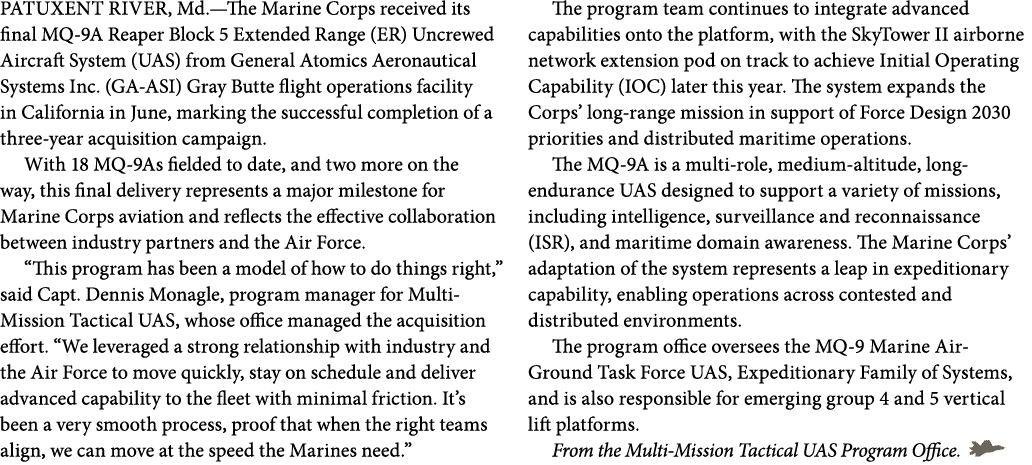

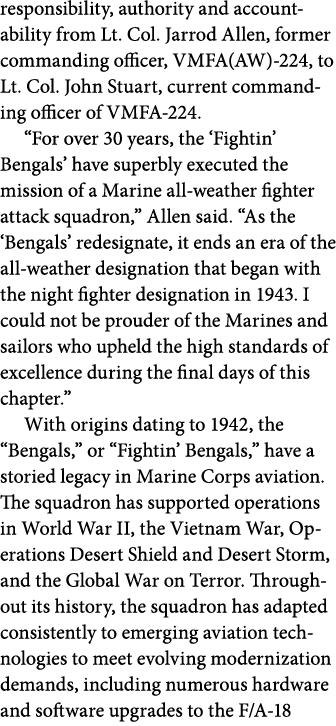
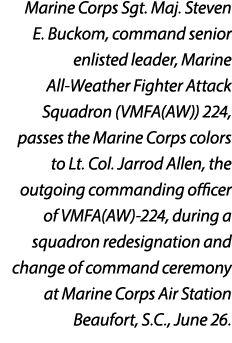
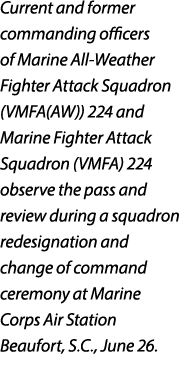
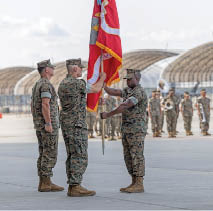

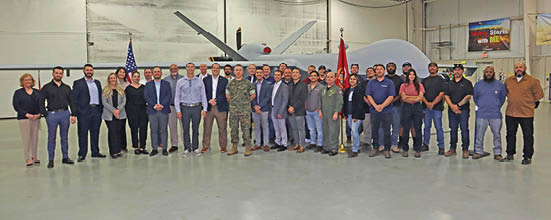



Marine Corps Receives Final MQ-9A Reaper, Concluding Rapid Delivery Effort
PATUXENT RIVER, Md.—The Marine Corps received its final MQ-9A Reaper Block 5 Extended Range (ER) Uncrewed Aircraft System (UAS) from General Atomics Aeronautical Systems Inc. (GA-ASI) Gray Butte flight operations facility in California in June, marking the successful completion of a three-year acquisition campaign.
With 18 MQ-9As fielded to date, and two more on the way, this final delivery represents a major milestone for Marine Corps aviation and reflects the effective collaboration between industry partners and the Air Force.
“This program has been a model of how to do things right,” said Capt. Dennis Monagle, program manager for Multi-Mission Tactical UAS, whose office managed the acquisition effort. “We leveraged a strong relationship with industry and the Air Force to move quickly, stay on schedule and deliver advanced capability to the fleet with minimal friction. It’s been a very smooth process, proof that when the right teams align, we can move at the speed the Marines need.”
The program team continues to integrate advanced capabilities onto the platform, with the SkyTower II airborne network extension pod on track to achieve Initial Operating Capability (IOC) later this year. The system expands the Corps’ long-range mission in support of Force Design 2030 priorities and distributed maritime operations.
The MQ-9A is a multi-role, medium-altitude, long-endurance UAS designed to support a variety of missions, including intelligence, surveillance and reconnaissance (ISR), and maritime domain awareness. The Marine Corps’ adaptation of the system represents a leap in expeditionary capability, enabling operations across contested and distributed environments.
The program office oversees the MQ-9 Marine Air-Ground Task Force UAS, Expeditionary Family of Systems, and is also responsible for emerging group 4 and 5 vertical lift platforms.
From the Multi-Mission Tactical UAS Program Office. 

VMFA-224 Redesignated as Marine Corps’
Newest F-35B Squadron
MARINE CORPS AIR STATION BEAUFORT, S.C.—Marine All-Weather Fighter Attack Squadron (VMFA(AW)) 224 redesignated to Marine Fighter Attack Squadron (VMFA) 224 during a change of command and redesignation ceremony here June 26.
The event marked the squadron’s historic transition from operating the F/A-18D Hornet to becoming an F-35B Lightning II Joint Strike Fighter squadron, concluding more than 32 years as a Hornet squadron and as a Marine all-weather fighter attack squadron.
In addition to the redesignation, the ceremony also served as a change of command, representing a transfer of responsibility, authority and accountability from Lt. Col. Jarrod Allen, former commanding officer, VMFA(AW)-224, to Lt. Col. John Stuart, current commanding officer of VMFA-224.
“For over 30 years, the ‘Fightin’ Bengals’ have superbly executed the mission of a Marine all-weather fighter attack squadron,” Allen said. “As the ‘Bengals’ redesignate, it ends an era of the all-weather designation that began with the night fighter designation in 1943. I could not be prouder of the Marines and sailors who upheld the high standards of excellence during the final days of this chapter.”
With origins dating to 1942, the “Bengals,” or “Fightin’ Bengals,” have a storied legacy in Marine Corps aviation. The squadron has supported operations in World War II, the Vietnam War, Operations Desert Shield and Desert Storm, and the Global War on Terror. Throughout its history, the squadron has adapted consistently to emerging aviation technologies to meet evolving modernization demands, including numerous hardware and software upgrades to the F/A-18 Hornet. After conducting its final F/A-18 flight April 28, the “Bengals” now look ahead as they transition to the F-35B.
The F-35 is a fifth-generation fighter jet with advanced stealth, agility and maneuverability, sensor and information fusion, that provide pilots with real-time access to battlespace information. It is designed to meet an advanced threat while improving lethality, survivability and supportability. The F-35B Lightning II is the short-takeoff and vertical-landing (STOVL) F-35 variant. This capability allows the aircraft to operate from amphibious assault ships and expeditionary airstrips fewer than 2,000 feet long.
Stuart also reflected on the squadron’s legacy as it steps into a new chapter.
“The newly unfurled battle colors of VMFA-224 are adorned with streamers that represent the unit’s history, accomplishments and the legacy left by those who came before,” Stuart said. “As the squadron transitions into the fifth generation of fighter aircraft with the F-35B, that legacy will be an omnipresent reminder of why we must constantly prepare for whatever comes next.”
As the Marine Corps’ newest F-35B squadron, VMFA-224 continues to prepare its personnel, equipment and procedures for F-35 operations. The squadron expects to receive its first F-35B in late 2025 and is working toward receiving its safe-for-flight operations certification.
“The next thing for the ‘Fightin’ Bengals’ is to build upon the rock-solid foundation we’ve inherited and produce a stealth fighter squadron unmatched in tactical excellence, maintenance efficiency, quality and Marine Corps ethos,” Stuart said. “Rest assured, when our nation calls upon the ‘Bengals’ to do its bidding, the adversaries of our country and her allies will understand what it means to ‘Fear the Ambush.’”
VMFA-224 is a subordinate unit of 2nd Marine Aircraft Wing, the aviation combat element of II Marine Expeditionary Force.
Written by Capt. Jacob Ballard with the 2nd Marine Aircraft Wing. 





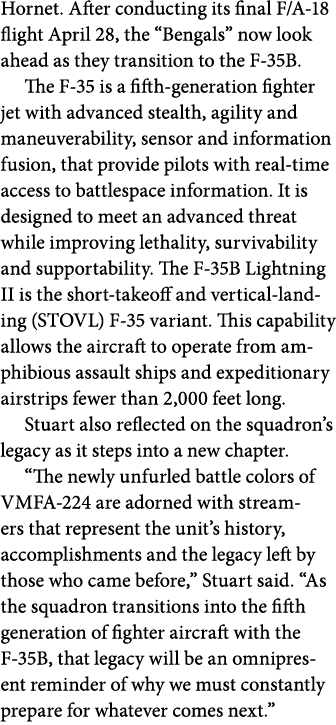
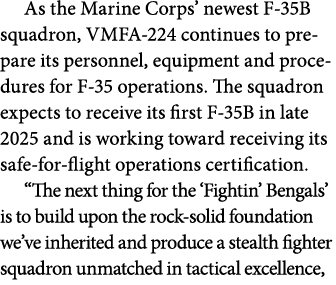
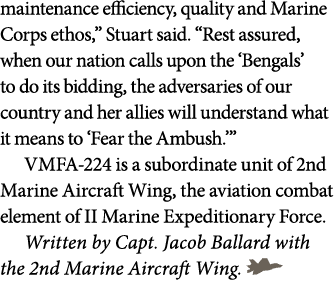


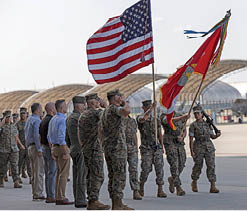





Marine Corps Receives Final MQ-9A Reaper, Concluding Rapid Delivery Effort
PATUXENT RIVER, Md.—The Marine Corps received its final MQ-9A Reaper Block 5 Extended Range (ER) Uncrewed Aircraft System (UAS) from General Atomics Aeronautical Systems Inc. (GA-ASI) Gray Butte flight operations facility in California in June, marking the successful completion of a three-year acquisition campaign.
With 18 MQ-9As fielded to date, and two more on the way, this final delivery represents a major milestone for Marine Corps aviation and reflects the effective collaboration between industry partners and the Air Force.
“This program has been a model of how to do things right,” said Capt. Dennis Monagle, program manager for Multi-Mission Tactical UAS, whose office managed the acquisition effort. “We leveraged a strong relationship with industry and the Air Force to move quickly, stay on schedule and deliver advanced capability to the fleet with minimal friction. It’s been a very smooth process, proof that when the right teams align, we can move at the speed the Marines need.”
The program team continues to integrate advanced capabilities onto the platform, with the SkyTower II airborne network extension pod on track to achieve Initial Operating Capability (IOC) later this year. The system expands the Corps’ long-range mission in support of Force Design 2030 priorities and distributed maritime operations.
The MQ-9A is a multi-role, medium-altitude, long-endurance UAS designed to support a variety of missions, including intelligence, surveillance and reconnaissance (ISR), and maritime domain awareness. The Marine Corps’ adaptation of the system represents a leap in expeditionary capability, enabling operations across contested and distributed environments.
The program office oversees the MQ-9 Marine Air-Ground Task Force UAS, Expeditionary Family of Systems, and is also responsible for emerging group 4 and 5 vertical lift platforms.
From the Multi-Mission Tactical UAS Program Office. 

VMFA-224 Redesignated as Marine Corps’
Newest F-35B Squadron
MARINE CORPS AIR STATION BEAUFORT, S.C.—Marine All-Weather Fighter Attack Squadron (VMFA(AW)) 224 redesignated to Marine Fighter Attack Squadron (VMFA) 224 during a change of command and redesignation ceremony here June 26.
The event marked the squadron’s historic transition from operating the F/A-18D Hornet to becoming an F-35B Lightning II Joint Strike Fighter squadron, concluding more than 32 years as a Hornet squadron and as a Marine all-weather fighter attack squadron.
In addition to the redesignation, the ceremony also served as a change of command, representing a transfer of responsibility, authority and accountability from Lt. Col. Jarrod Allen, former commanding officer, VMFA(AW)-224, to Lt. Col. John Stuart, current commanding officer of VMFA-224.
“For over 30 years, the ‘Fightin’ Bengals’ have superbly executed the mission of a Marine all-weather fighter attack squadron,” Allen said. “As the ‘Bengals’ redesignate, it ends an era of the all-weather designation that began with the night fighter designation in 1943. I could not be prouder of the Marines and sailors who upheld the high standards of excellence during the final days of this chapter.”
With origins dating to 1942, the “Bengals,” or “Fightin’ Bengals,” have a storied legacy in Marine Corps aviation. The squadron has supported operations in World War II, the Vietnam War, Operations Desert Shield and Desert Storm, and the Global War on Terror. Throughout its history, the squadron has adapted consistently to emerging aviation technologies to meet evolving modernization demands, including numerous hardware and software upgrades to the F/A-18 Hornet. After conducting its final F/A-18 flight April 28, the “Bengals” now look ahead as they transition to the F-35B.
The F-35 is a fifth-generation fighter jet with advanced stealth, agility and maneuverability, sensor and information fusion, that provide pilots with real-time access to battlespace information. It is designed to meet an advanced threat while improving lethality, survivability and supportability. The F-35B Lightning II is the short-takeoff and vertical-landing (STOVL) F-35 variant. This capability allows the aircraft to operate from amphibious assault ships and expeditionary airstrips fewer than 2,000 feet long.
Stuart also reflected on the squadron’s legacy as it steps into a new chapter.
“The newly unfurled battle colors of VMFA-224 are adorned with streamers that represent the unit’s history, accomplishments and the legacy left by those who came before,” Stuart said. “As the squadron transitions into the fifth generation of fighter aircraft with the F-35B, that legacy will be an omnipresent reminder of why we must constantly prepare for whatever comes next.”
As the Marine Corps’ newest F-35B squadron, VMFA-224 continues to prepare its personnel, equipment and procedures for F-35 operations. The squadron expects to receive its first F-35B in late 2025 and is working toward receiving its safe-for-flight operations certification.
“The next thing for the ‘Fightin’ Bengals’ is to build upon the rock-solid foundation we’ve inherited and produce a stealth fighter squadron unmatched in tactical excellence, maintenance efficiency, quality and Marine Corps ethos,” Stuart said. “Rest assured, when our nation calls upon the ‘Bengals’ to do its bidding, the adversaries of our country and her allies will understand what it means to ‘Fear the Ambush.’”
VMFA-224 is a subordinate unit of 2nd Marine Aircraft Wing, the aviation combat element of II Marine Expeditionary Force.
Written by Capt. Jacob Ballard with the 2nd Marine Aircraft Wing. 



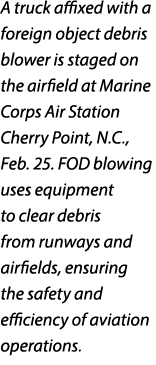
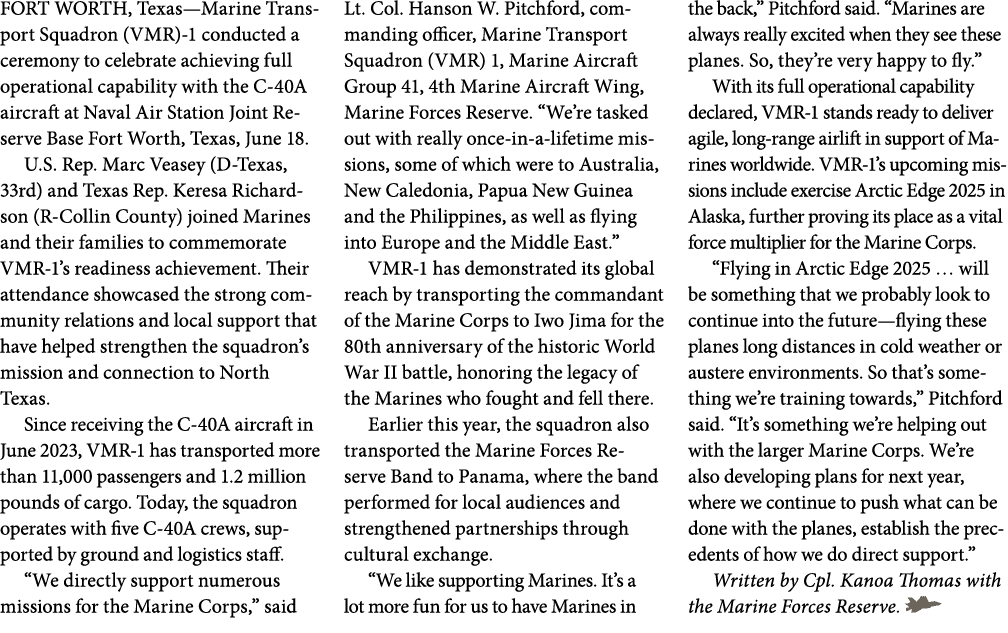


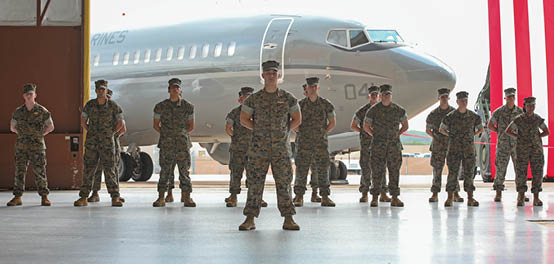


Blown Away: New FOD Removal Method Enhances Safety
MARINE CORPS AIR STATION CHERRY POINT, N.C.—Foreign object debris, or FOD, poses a hazard on flight lines and can threaten the safety of personnel, equipment and aircraft. To minimize these risks, Marine Corps Air Station (MCAS) Cherry Point, North Carolina, has shifted from physically picking up debris to the more efficient method of blowing the debris away. This change in protocol not only accelerates removing hazardous objects but also enhances safety because it reduces potential damage to aircraft and ensures a cleaner working environment for everyone on the flight line.
FOD blowing involves using air-powered equipment to clear objects, debris or material from runways, taxiways and airfields.
FOD can accumulate on the airfield when items fall off vehicles or aircraft passes through the area. Common debris includes rocks, screws and bolts. Organic materials can be blown off the flight line with a blower, whereas other foreign objects, such as screws and metal fasteners, must still be retrieved by hand and documented.
“We’re able to give pilots peace of mind, knowing that they can take off and land on a clean and clear runway,” said Sean Wales, an FOD attendant. “FOD blowing has made a huge impact for safety on the airfield.”
Wales said debris left on the airfield is hazardous to both aircraft and personnel. For example, if an aircraft were to encounter a sharp object, it could puncture a tire and deflate, or the engine could potentially ingest the debris, resulting in serious damage to equipment, costly repairs and significant injuries to passengers aboard aircraft.
While MCAS Cherry Point was the first Marine Corps air station to implement FOD blowers, Marine Corps air stations across the globe are adopting the new technology. Results have shown it maximizes the safety of aircraft and personnel and saves taxpayer dollars.
“Since being here, it has been night and day for FOD incidents on the runway,” said Scott Nickson, FOD supervisor. “Numbers have gone down significantly since we have been going out daily to remove FOD from the operating surfaces. It’s everyone doing their part to make the whole process safe.”
Written by Lance Cpl. Lauralle Gavilanes, Marine Corps Air Station Cherry Point, North Carolina. 


VMR-1 Celebrates Classification as Full Operational Capability Squadron
FORT WORTH, Texas—Marine Transport Squadron (VMR)-1 conducted a ceremony to celebrate achieving full operational capability with the C-40A aircraft at Naval Air Station Joint Reserve Base Fort Worth, Texas, June 18.
U.S. Rep. Marc Veasey (D-Texas, 33rd) and Texas Rep. Keresa Richardson (R-Collin County) joined Marines and their families to commemorate VMR-1’s readiness achievement. Their attendance showcased the strong community relations and local support that have helped strengthen the squadron’s mission and connection to North Texas.
Since receiving the C-40A aircraft in June 2023, VMR-1 has transported more than 11,000 passengers and 1.2 million pounds of cargo. Today, the squadron operates with five C-40A crews, supported by ground and logistics staff.
“We directly support numerous missions for the Marine Corps,” said Lt. Col. Hanson W. Pitchford, commanding officer, Marine Transport Squadron (VMR) 1, Marine Aircraft Group 41, 4th Marine Aircraft Wing, Marine Forces Reserve. “We’re tasked out with really once-in-a-lifetime missions, some of which were to Australia, New Caledonia, Papua New Guinea and the Philippines, as well as flying into Europe and the Middle East.”
VMR-1 has demonstrated its global reach by transporting the commandant of the Marine Corps to Iwo Jima for the 80th anniversary of the historic World War II battle, honoring the legacy of the Marines who fought and fell there.
Earlier this year, the squadron also transported the Marine Forces Reserve Band to Panama, where the band performed for local audiences and strengthened partnerships through cultural exchange.
“We like supporting Marines. It’s a lot more fun for us to have Marines in the back,” Pitchford said. “Marines are always really excited when they see these planes. So, they’re very happy to fly.”
With its full operational capability declared, VMR-1 stands ready to deliver agile, long-range airlift in support of Marines worldwide. VMR-1’s upcoming missions include exercise Arctic Edge 2025 in Alaska, further proving its place as a vital force multiplier for the Marine Corps.
“Flying in Arctic Edge 2025 … will be something that we probably look to continue into the future—flying these planes long distances in cold weather or austere environments. So that’s something we’re training towards,” Pitchford said. “It’s something we’re helping out with the larger Marine Corps. We’re also developing plans for next year, where we continue to push what can be done with the planes, establish the precedents of how we do direct support.”
Written by Cpl. Kanoa Thomas with the Marine Forces Reserve. 




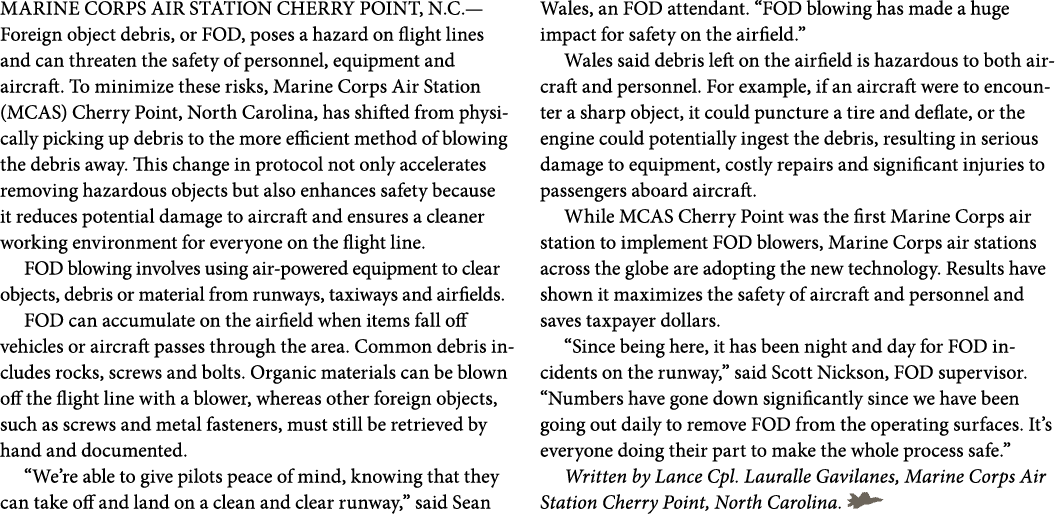
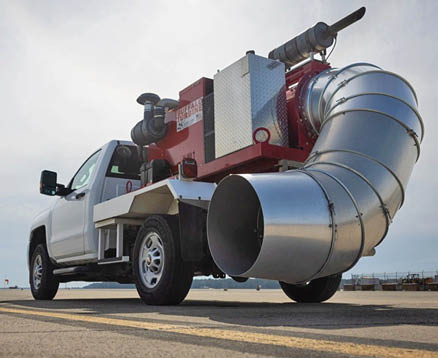



Blown Away: New FOD Removal Method Enhances Safety
MARINE CORPS AIR STATION CHERRY POINT, N.C.—Foreign object debris, or FOD, poses a hazard on flight lines and can threaten the safety of personnel, equipment and aircraft. To minimize these risks, Marine Corps Air Station (MCAS) Cherry Point, North Carolina, has shifted from physically picking up debris to the more efficient method of blowing the debris away. This change in protocol not only accelerates removing hazardous objects but also enhances safety because it reduces potential damage to aircraft and ensures a cleaner working environment for everyone on the flight line.
FOD blowing involves using air-powered equipment to clear objects, debris or material from runways, taxiways and airfields.
FOD can accumulate on the airfield when items fall off vehicles or aircraft passes through the area. Common debris includes rocks, screws and bolts. Organic materials can be blown off the flight line with a blower, whereas other foreign objects, such as screws and metal fasteners, must still be retrieved by hand and documented.
“We’re able to give pilots peace of mind, knowing that they can take off and land on a clean and clear runway,” said Sean Wales, an FOD attendant. “FOD blowing has made a huge impact for safety on the airfield.”
Wales said debris left on the airfield is hazardous to both aircraft and personnel. For example, if an aircraft were to encounter a sharp object, it could puncture a tire and deflate, or the engine could potentially ingest the debris, resulting in serious damage to equipment, costly repairs and significant injuries to passengers aboard aircraft.
While MCAS Cherry Point was the first Marine Corps air station to implement FOD blowers, Marine Corps air stations across the globe are adopting the new technology. Results have shown it maximizes the safety of aircraft and personnel and saves taxpayer dollars.
“Since being here, it has been night and day for FOD incidents on the runway,” said Scott Nickson, FOD supervisor. “Numbers have gone down significantly since we have been going out daily to remove FOD from the operating surfaces. It’s everyone doing their part to make the whole process safe.”
Written by Lance Cpl. Lauralle Gavilanes, Marine Corps Air Station Cherry Point, North Carolina. 


VMR-1 Celebrates Classification as Full Operational Capability Squadron
FORT WORTH, Texas—Marine Transport Squadron (VMR)-1 conducted a ceremony to celebrate achieving full operational capability with the C-40A aircraft at Naval Air Station Joint Reserve Base Fort Worth, Texas, June 18.
U.S. Rep. Marc Veasey (D-Texas, 33rd) and Texas Rep. Keresa Richardson (R-Collin County) joined Marines and their families to commemorate VMR-1’s readiness achievement. Their attendance showcased the strong community relations and local support that have helped strengthen the squadron’s mission and connection to North Texas.
Since receiving the C-40A aircraft in June 2023, VMR-1 has transported more than 11,000 passengers and 1.2 million pounds of cargo. Today, the squadron operates with five C-40A crews, supported by ground and logistics staff.
“We directly support numerous missions for the Marine Corps,” said Lt. Col. Hanson W. Pitchford, commanding officer, Marine Transport Squadron (VMR) 1, Marine Aircraft Group 41, 4th Marine Aircraft Wing, Marine Forces Reserve. “We’re tasked out with really once-in-a-lifetime missions, some of which were to Australia, New Caledonia, Papua New Guinea and the Philippines, as well as flying into Europe and the Middle East.”
VMR-1 has demonstrated its global reach by transporting the commandant of the Marine Corps to Iwo Jima for the 80th anniversary of the historic World War II battle, honoring the legacy of the Marines who fought and fell there.
Earlier this year, the squadron also transported the Marine Forces Reserve Band to Panama, where the band performed for local audiences and strengthened partnerships through cultural exchange.
“We like supporting Marines. It’s a lot more fun for us to have Marines in the back,” Pitchford said. “Marines are always really excited when they see these planes. So, they’re very happy to fly.”
With its full operational capability declared, VMR-1 stands ready to deliver agile, long-range airlift in support of Marines worldwide. VMR-1’s upcoming missions include exercise Arctic Edge 2025 in Alaska, further proving its place as a vital force multiplier for the Marine Corps.
“Flying in Arctic Edge 2025 … will be something that we probably look to continue into the future—flying these planes long distances in cold weather or austere environments. So that’s something we’re training towards,” Pitchford said. “It’s something we’re helping out with the larger Marine Corps. We’re also developing plans for next year, where we continue to push what can be done with the planes, establish the precedents of how we do direct support.”
Written by Cpl. Kanoa Thomas with the Marine Forces Reserve. 

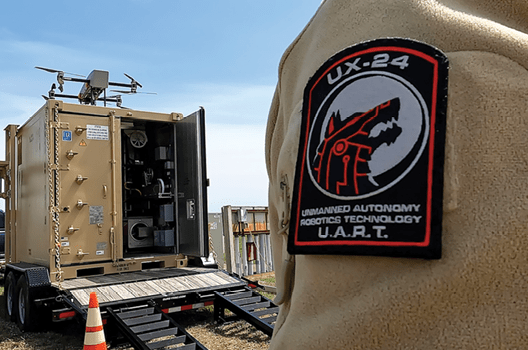

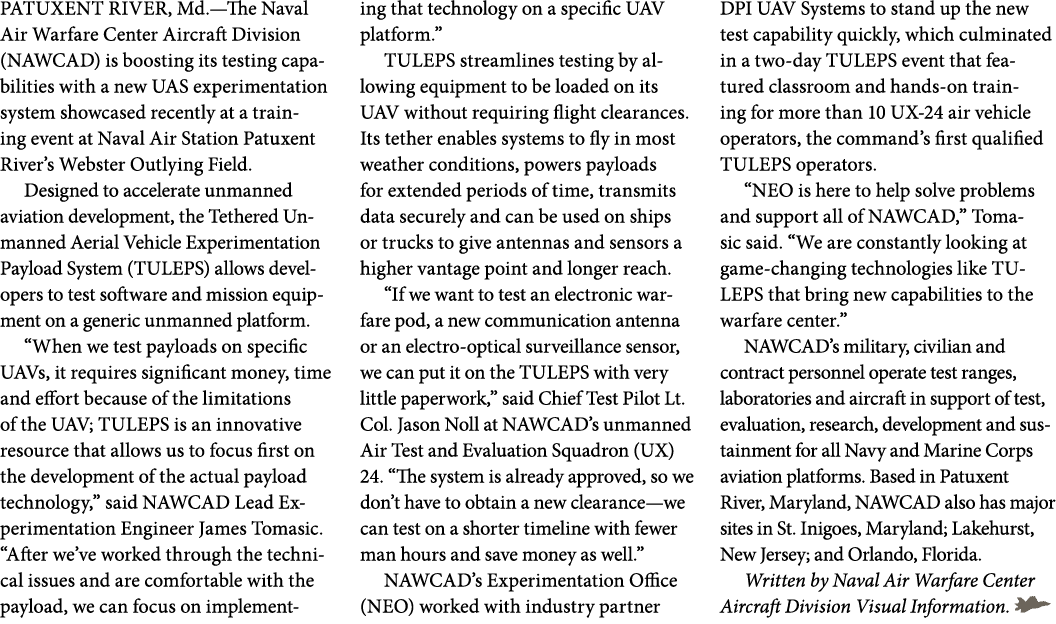



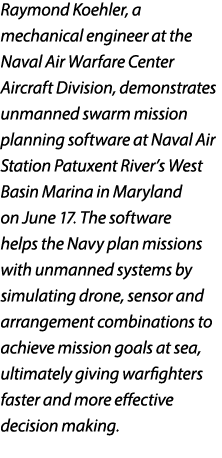



Navy Demonstrates Swarm Mission Planning Tech
PATUXENT RIVER, MD.—The Naval Air Warfare Center Aircraft Division (NAWCAD) demonstrated innovative mission planning software for swarms and other configurations of unmanned air, surface and underwater systems at its headquarters in June.
The new Optimized Cross-Domain Swarm Sensing (OCDSS) software program helps the Navy plan missions using groups of unmanned aircraft. By running thousands of computer simulations, the software determines the best combination and arrangement of drones and sensors to achieve mission goals at sea.
“Autonomy is the decisive edge for maritime dominance,” said NAWCAD Commander Rear Adm. Todd Evans. “This technology is critical to enhancing operations across domains and represents a significant step forward for manned-unmanned teaming.”
OCDSS helps the Navy and Marine Corps get the most out of their unmanned systems while saving time and money. Its computer simulations predict how different drones will perform together in various missions, enabling planners to choose the right number and type of vehicles for the job.
“OCDSS quickly runs thousands of simulations to predict how different unmanned systems might perform together,” said NAWCAD Mechanical Engineer Raymond Koehler, OCDSS’ lead software developer. “This software gives warfighters faster and more effective decision making—that’s competitive advantage.”
By providing a virtual testing environment, OCDSS also reduces the cost and time associated with real-world testing in defense acquisition programs, which aligns with industry practices where simulation drives up to 90 percent of the development process. The technology successfully operated at ANTX Coastal Trident in August 2024, focusing on port security and providing data for future development and deployment.
“OCDSS levels up how unmanned systems are used in a wide range of missions, and we’re ready to scale this autonomy to operational teams or test programs across the Navy and Marine Corps,” Koehler said.
Operational users and defense programs interested in learning more about OCDSS should contact NAWCAD tech team lead Derek Alley at derek.m.alley.civ@us.navy.mil for more information.
Koehler earned the Assistant Secretary of the Navy’s 2025 Dr. Delores M. Etter Top Scientists and Engineers of the Year Award in the Emergent Engineer category for his outstanding contributions to swarm autonomy. The team he supports also earned a NAWCAD award for its collaboration on the effort with the Naval Surface Warfare Center Carderock Division, Potomac, Maryland.
NAWCAD’s military, civilian and contract personnel operate test ranges, laboratories and aircraft in support of test, evaluation, research, development and sustainment for all Navy and Marine Corps aviation platforms. Based in Patuxent River, Maryland, NAWCAD also has major sites in St. Inigoes, Maryland; Lakehurst, New Jersey; and Orlando, Florida.
From the Naval Air Surface Warfare Aircraft Division. 


New Unmanned Test System Accelerates UAS Development at NAWCAD
PATUXENT RIVER, Md.—The Naval Air Warfare Center Aircraft Division (NAWCAD) is boosting its testing capabilities with a new UAS experimentation system showcased recently at a training event at Naval Air Station Patuxent River’s Webster Outlying Field.
Designed to accelerate unmanned aviation development, the Tethered Unmanned Aerial Vehicle Experimentation Payload System (TULEPS) allows developers to test software and mission equipment on a generic unmanned platform.
“When we test payloads on specific UAVs, it requires significant money, time and effort because of the limitations of the UAV; TULEPS is an innovative resource that allows us to focus first on the development of the actual payload technology,” said NAWCAD Lead Experimentation Engineer James Tomasic. “After we’ve worked through the technical issues and are comfortable with the payload, we can focus on implementing that technology on a specific UAV platform.”
TULEPS streamlines testing by allowing equipment to be loaded on its UAV without requiring flight clearances. Its tether enables systems to fly in most weather conditions, powers payloads for extended periods of time, transmits data securely and can be used on ships or trucks to give antennas and sensors a higher vantage point and longer reach.
“If we want to test an electronic warfare pod, a new communication antenna or an electro-optical surveillance sensor, we can put it on the TULEPS with very little paperwork,” said Chief Test Pilot Lt. Col. Jason Noll at NAWCAD’s unmanned Air Test and Evaluation Squadron (UX) 24. “The system is already approved, so we don’t have to obtain a new clearance—we can test on a shorter timeline with fewer man hours and save money as well.”
NAWCAD’s Experimentation Office (NEO) worked with industry partner DPI UAV Systems to stand up the new test capability quickly, which culminated in a two-day TULEPS event that featured classroom and hands-on training for more than 10 UX-24 air vehicle operators, the command’s first qualified TULEPS operators.
“NEO is here to help solve problems and support all of NAWCAD,” Tomasic said. “We are constantly looking at game-changing technologies like TULEPS that bring new capabilities to the warfare center.”
NAWCAD’s military, civilian and contract personnel operate test ranges, laboratories and aircraft in support of test, evaluation, research, development and sustainment for all Navy and Marine Corps aviation platforms. Based in Patuxent River, Maryland, NAWCAD also has major sites in St. Inigoes, Maryland; Lakehurst, New Jersey; and Orlando, Florida.
Written by Naval Air Warfare Center Aircraft Division Visual Information. 



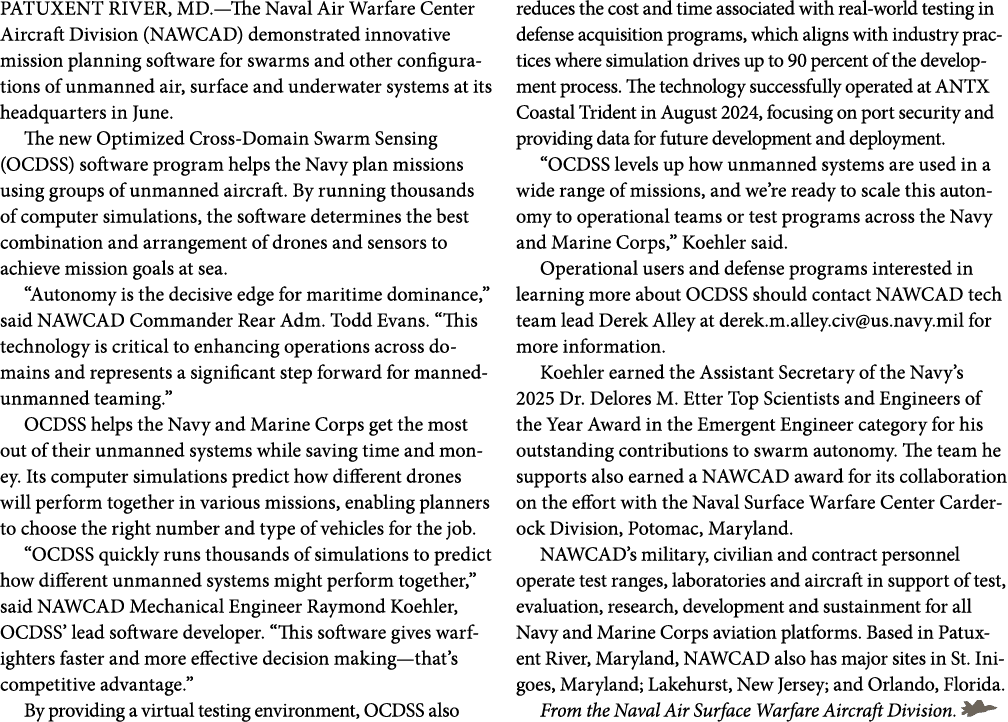


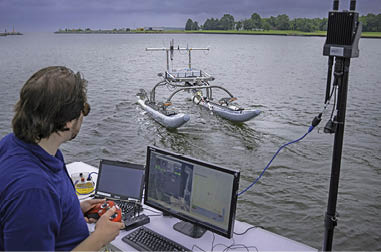


Navy Demonstrates Swarm Mission Planning Tech
PATUXENT RIVER, MD.—The Naval Air Warfare Center Aircraft Division (NAWCAD) demonstrated innovative mission planning software for swarms and other configurations of unmanned air, surface and underwater systems at its headquarters in June.
The new Optimized Cross-Domain Swarm Sensing (OCDSS) software program helps the Navy plan missions using groups of unmanned aircraft. By running thousands of computer simulations, the software determines the best combination and arrangement of drones and sensors to achieve mission goals at sea.
“Autonomy is the decisive edge for maritime dominance,” said NAWCAD Commander Rear Adm. Todd Evans. “This technology is critical to enhancing operations across domains and represents a significant step forward for manned-unmanned teaming.”
OCDSS helps the Navy and Marine Corps get the most out of their unmanned systems while saving time and money. Its computer simulations predict how different drones will perform together in various missions, enabling planners to choose the right number and type of vehicles for the job.
“OCDSS quickly runs thousands of simulations to predict how different unmanned systems might perform together,” said NAWCAD Mechanical Engineer Raymond Koehler, OCDSS’ lead software developer. “This software gives warfighters faster and more effective decision making—that’s competitive advantage.”
By providing a virtual testing environment, OCDSS also reduces the cost and time associated with real-world testing in defense acquisition programs, which aligns with industry practices where simulation drives up to 90 percent of the development process. The technology successfully operated at ANTX Coastal Trident in August 2024, focusing on port security and providing data for future development and deployment.
“OCDSS levels up how unmanned systems are used in a wide range of missions, and we’re ready to scale this autonomy to operational teams or test programs across the Navy and Marine Corps,” Koehler said.
Operational users and defense programs interested in learning more about OCDSS should contact NAWCAD tech team lead Derek Alley at derek.m.alley.civ@us.navy.mil for more information.
Koehler earned the Assistant Secretary of the Navy’s 2025 Dr. Delores M. Etter Top Scientists and Engineers of the Year Award in the Emergent Engineer category for his outstanding contributions to swarm autonomy. The team he supports also earned a NAWCAD award for its collaboration on the effort with the Naval Surface Warfare Center Carderock Division, Potomac, Maryland.
NAWCAD’s military, civilian and contract personnel operate test ranges, laboratories and aircraft in support of test, evaluation, research, development and sustainment for all Navy and Marine Corps aviation platforms. Based in Patuxent River, Maryland, NAWCAD also has major sites in St. Inigoes, Maryland; Lakehurst, New Jersey; and Orlando, Florida.
From the Naval Air Surface Warfare Aircraft Division. 


New Unmanned Test System Accelerates UAS Development at NAWCAD
PATUXENT RIVER, Md.—The Naval Air Warfare Center Aircraft Division (NAWCAD) is boosting its testing capabilities with a new UAS experimentation system showcased recently at a training event at Naval Air Station Patuxent River’s Webster Outlying Field.
Designed to accelerate unmanned aviation development, the Tethered Unmanned Aerial Vehicle Experimentation Payload System (TULEPS) allows developers to test software and mission equipment on a generic unmanned platform.
“When we test payloads on specific UAVs, it requires significant money, time and effort because of the limitations of the UAV; TULEPS is an innovative resource that allows us to focus first on the development of the actual payload technology,” said NAWCAD Lead Experimentation Engineer James Tomasic. “After we’ve worked through the technical issues and are comfortable with the payload, we can focus on implementing that technology on a specific UAV platform.”
TULEPS streamlines testing by allowing equipment to be loaded on its UAV without requiring flight clearances. Its tether enables systems to fly in most weather conditions, powers payloads for extended periods of time, transmits data securely and can be used on ships or trucks to give antennas and sensors a higher vantage point and longer reach.
“If we want to test an electronic warfare pod, a new communication antenna or an electro-optical surveillance sensor, we can put it on the TULEPS with very little paperwork,” said Chief Test Pilot Lt. Col. Jason Noll at NAWCAD’s unmanned Air Test and Evaluation Squadron (UX) 24. “The system is already approved, so we don’t have to obtain a new clearance—we can test on a shorter timeline with fewer man hours and save money as well.”
NAWCAD’s Experimentation Office (NEO) worked with industry partner DPI UAV Systems to stand up the new test capability quickly, which culminated in a two-day TULEPS event that featured classroom and hands-on training for more than 10 UX-24 air vehicle operators, the command’s first qualified TULEPS operators.
“NEO is here to help solve problems and support all of NAWCAD,” Tomasic said. “We are constantly looking at game-changing technologies like TULEPS that bring new capabilities to the warfare center.”
NAWCAD’s military, civilian and contract personnel operate test ranges, laboratories and aircraft in support of test, evaluation, research, development and sustainment for all Navy and Marine Corps aviation platforms. Based in Patuxent River, Maryland, NAWCAD also has major sites in St. Inigoes, Maryland; Lakehurst, New Jersey; and Orlando, Florida.
Written by Naval Air Warfare Center Aircraft Division Visual Information. 


















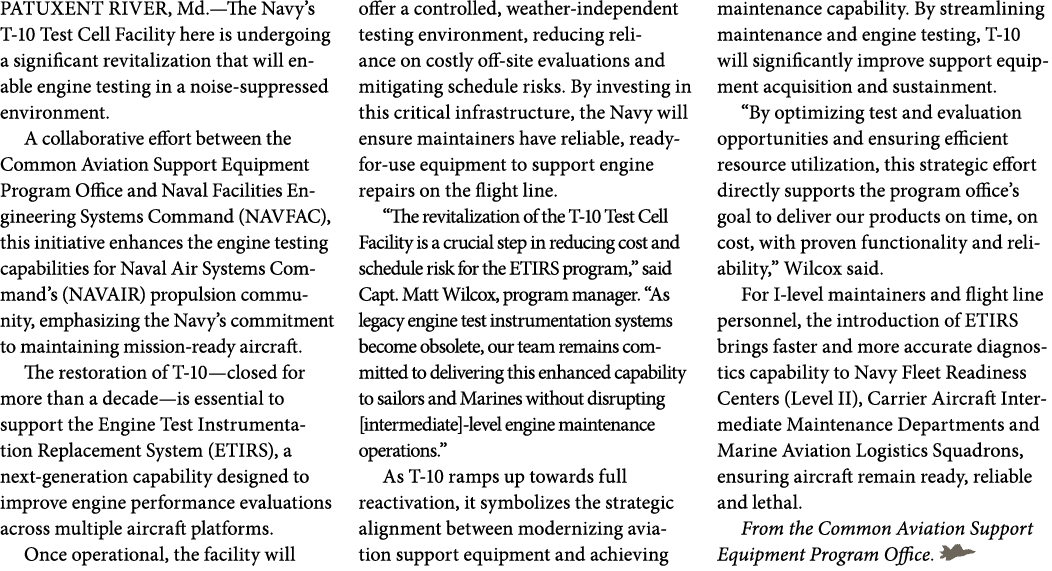
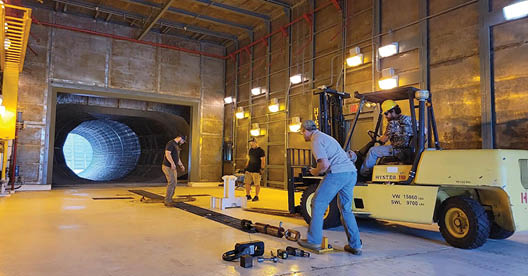


Post-Maintenance Check Flub
An H-60 was inducted into B-phase maintenance the evening prior to a four-day port visit. Early the next morning, the detatchment’s lead petty officer (LPO) started the day’s planned work on the aircraft, eager to finish to secure folks for liberty.
Since the LPO was the detatchment’s lead aviation machinist mate, he elected to remove and replace the engine load demand spindle roll pins. He’d done the procedure many times, so he elected not to use the technical manual.
After conducting the maintenance, the LPO also acted as the phase quality assurance representative (QAR), which is a direct violation of OPNAVINST 4790.2 (Naval Aviation Maintenance Program). The LPO knew this and went a step further but had another maintainer sign the paperwork as “worker” while he signed it as “QAR.” For his part, the other maintainer assumed he was signing the form for corrosion work he’d actually performed.
The detachment chief petty officer made the mistake of trusting the LPO, and he released the aircraft as safe for flight without final review of the phase packet.
Because the squadron’s vibration analysis test set (VATS) was acting up, the detachment officer in charge decided to include the LPO, the squadron’s VATS expert, on the check flight, even though the LPO did not possess the requisite quals or survival training needed for inclusion on such a flight.
During the autorotation check portion of the flight, both spindle roll pins came off, which, in turn, caused the engines to shut down. A crew member diagnosed the dual engine failure and guided the helicopter to a level flight water entry at a higher-than-desired rate of descent. The crash resulted in back injuries to all four crew members. The helicopter aircraft commander also broke both of his ankles. The copilot suffered contusions and lacerations to his face when he tried to get out of the aircraft before the rush of water into the cockpit had subsided. Eventually the aircrew was rescued by the ship’s motor whaleboat team. The helicopter was lost. 
Grampaw Pettibone says…
These boys used every cliché in the book, didn’t they? From maintainers with liberty-itis skipping checklists and QA-ing their own work to faulty gear leading to bad supervisory calls up the chain of command, this mishap is chock full o‘ the lessons we done learned too many times. This squadron was lucky to get outta this pickle with some bad backs, a few broken bones and a lost helo.
Gramps has said these things near-on a million times, but obviously they needs to be said again: Use checklists. Follow OPNAV instructions to the letter.
’Nuff said? (Then why do I have the feeling I’ll be saying them again?) 


Navy Restores T-10 Test Cell Facility, Enhancing Fleet Readiness
PATUXENT RIVER, Md.—The Navy’s T-10 Test Cell Facility here is undergoing a significant revitalization that will enable engine testing in a noise-suppressed environment.
A collaborative effort between the Common Aviation Support Equipment Program Office and Naval Facilities Engineering Systems Command (NAVFAC), this initiative enhances the engine testing capabilities for Naval Air Systems Command’s (NAVAIR) propulsion community, emphasizing the Navy’s commitment to maintaining mission-ready aircraft.
The restoration of T-10—closed for more than a decade—is essential to support the Engine Test Instrumentation Replacement System (ETIRS), a next-generation capability designed to improve engine performance evaluations across multiple aircraft platforms.
Once operational, the facility will offer a controlled, weather-independent testing environment, reducing reliance on costly off-site evaluations and mitigating schedule risks. By investing in this critical infrastructure, the Navy will ensure maintainers have reliable, ready-for-use equipment to support engine repairs on the flight line.
“The revitalization of the T-10 Test Cell Facility is a crucial step in reducing cost and schedule risk for the ETIRS program,” said Capt. Matt Wilcox, program manager. “As legacy engine test instrumentation systems become obsolete, our team remains committed to delivering this enhanced capability to sailors and Marines without disrupting [intermediate]-level engine maintenance operations.”
As T-10 ramps up towards full reactivation, it symbolizes the strategic alignment between modernizing aviation support equipment and achieving maintenance capability. By streamlining maintenance and engine testing, T-10 will significantly improve support equipment acquisition and sustainment.
“By optimizing test and evaluation opportunities and ensuring efficient resource utilization, this strategic effort directly supports the program office’s goal to deliver our products on time, on cost, with proven functionality and reliability,” Wilcox said.
For I-level maintainers and flight line personnel, the introduction of ETIRS brings faster and more accurate diagnostics capability to Navy Fleet Readiness Centers (Level II), Carrier Aircraft Intermediate Maintenance Departments and Marine Aviation Logistics Squadrons, ensuring aircraft remain ready, reliable and lethal.
From the Common Aviation Support Equipment Program Office. 
























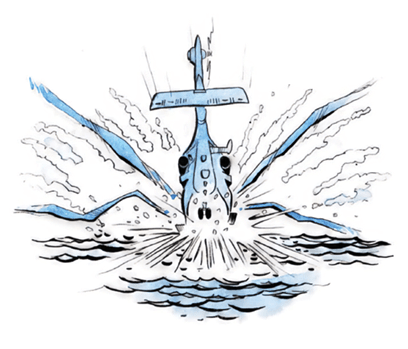
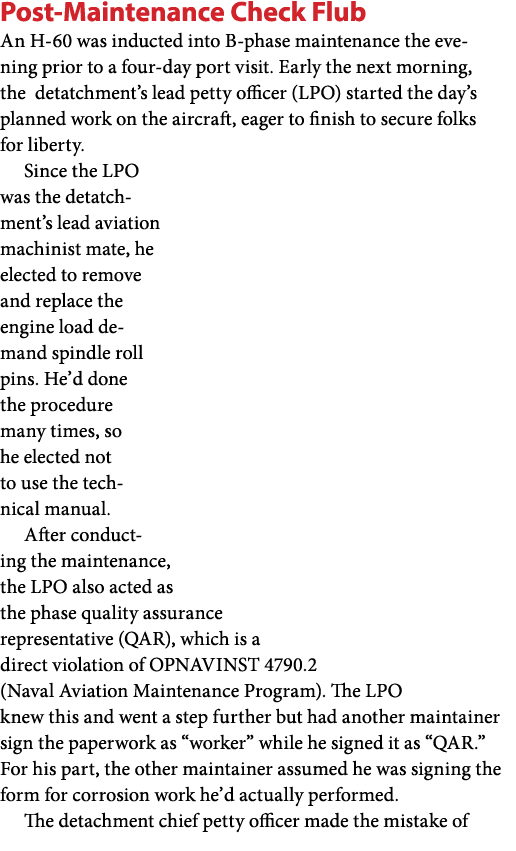
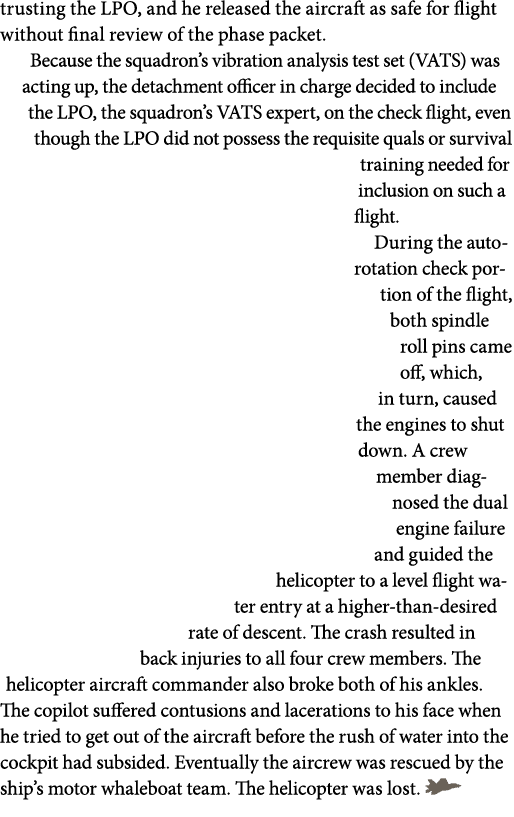


Post-Maintenance Check Flub
An H-60 was inducted into B-phase maintenance the evening prior to a four-day port visit. Early the next morning, the detatchment’s lead petty officer (LPO) started the day’s planned work on the aircraft, eager to finish to secure folks for liberty.
Since the LPO was the detatchment’s lead aviation machinist mate, he elected to remove and replace the engine load demand spindle roll pins. He’d done the procedure many times, so he elected not to use the technical manual.
After conducting the maintenance, the LPO also acted as the phase quality assurance representative (QAR), which is a direct violation of OPNAVINST 4790.2 (Naval Aviation Maintenance Program). The LPO knew this and went a step further but had another maintainer sign the paperwork as “worker” while he signed it as “QAR.” For his part, the other maintainer assumed he was signing the form for corrosion work he’d actually performed.
The detachment chief petty officer made the mistake of trusting the LPO, and he released the aircraft as safe for flight without final review of the phase packet.
Because the squadron’s vibration analysis test set (VATS) was acting up, the detachment officer in charge decided to include the LPO, the squadron’s VATS expert, on the check flight, even though the LPO did not possess the requisite quals or survival training needed for inclusion on such a flight.
During the autorotation check portion of the flight, both spindle roll pins came off, which, in turn, caused the engines to shut down. A crew member diagnosed the dual engine failure and guided the helicopter to a level flight water entry at a higher-than-desired rate of descent. The crash resulted in back injuries to all four crew members. The helicopter aircraft commander also broke both of his ankles. The copilot suffered contusions and lacerations to his face when he tried to get out of the aircraft before the rush of water into the cockpit had subsided. Eventually the aircrew was rescued by the ship’s motor whaleboat team. The helicopter was lost. 
Grampaw Pettibone says…
These boys used every cliché in the book, didn’t they? From maintainers with liberty-itis skipping checklists and QA-ing their own work to faulty gear leading to bad supervisory calls up the chain of command, this mishap is chock full o‘ the lessons we done learned too many times. This squadron was lucky to get outta this pickle with some bad backs, a few broken bones and a lost helo.
Gramps has said these things near-on a million times, but obviously they needs to be said again: Use checklists. Follow OPNAV instructions to the letter.
’Nuff said? (Then why do I have the feeling I’ll be saying them again?) 


Navy Restores T-10 Test Cell Facility, Enhancing Fleet Readiness
PATUXENT RIVER, Md.—The Navy’s T-10 Test Cell Facility here is undergoing a significant revitalization that will enable engine testing in a noise-suppressed environment.
A collaborative effort between the Common Aviation Support Equipment Program Office and Naval Facilities Engineering Systems Command (NAVFAC), this initiative enhances the engine testing capabilities for Naval Air Systems Command’s (NAVAIR) propulsion community, emphasizing the Navy’s commitment to maintaining mission-ready aircraft.
The restoration of T-10—closed for more than a decade—is essential to support the Engine Test Instrumentation Replacement System (ETIRS), a next-generation capability designed to improve engine performance evaluations across multiple aircraft platforms.
Once operational, the facility will offer a controlled, weather-independent testing environment, reducing reliance on costly off-site evaluations and mitigating schedule risks. By investing in this critical infrastructure, the Navy will ensure maintainers have reliable, ready-for-use equipment to support engine repairs on the flight line.
“The revitalization of the T-10 Test Cell Facility is a crucial step in reducing cost and schedule risk for the ETIRS program,” said Capt. Matt Wilcox, program manager. “As legacy engine test instrumentation systems become obsolete, our team remains committed to delivering this enhanced capability to sailors and Marines without disrupting [intermediate]-level engine maintenance operations.”
As T-10 ramps up towards full reactivation, it symbolizes the strategic alignment between modernizing aviation support equipment and achieving maintenance capability. By streamlining maintenance and engine testing, T-10 will significantly improve support equipment acquisition and sustainment.
“By optimizing test and evaluation opportunities and ensuring efficient resource utilization, this strategic effort directly supports the program office’s goal to deliver our products on time, on cost, with proven functionality and reliability,” Wilcox said.
For I-level maintainers and flight line personnel, the introduction of ETIRS brings faster and more accurate diagnostics capability to Navy Fleet Readiness Centers (Level II), Carrier Aircraft Intermediate Maintenance Departments and Marine Aviation Logistics Squadrons, ensuring aircraft remain ready, reliable and lethal.
From the Common Aviation Support Equipment Program Office. 
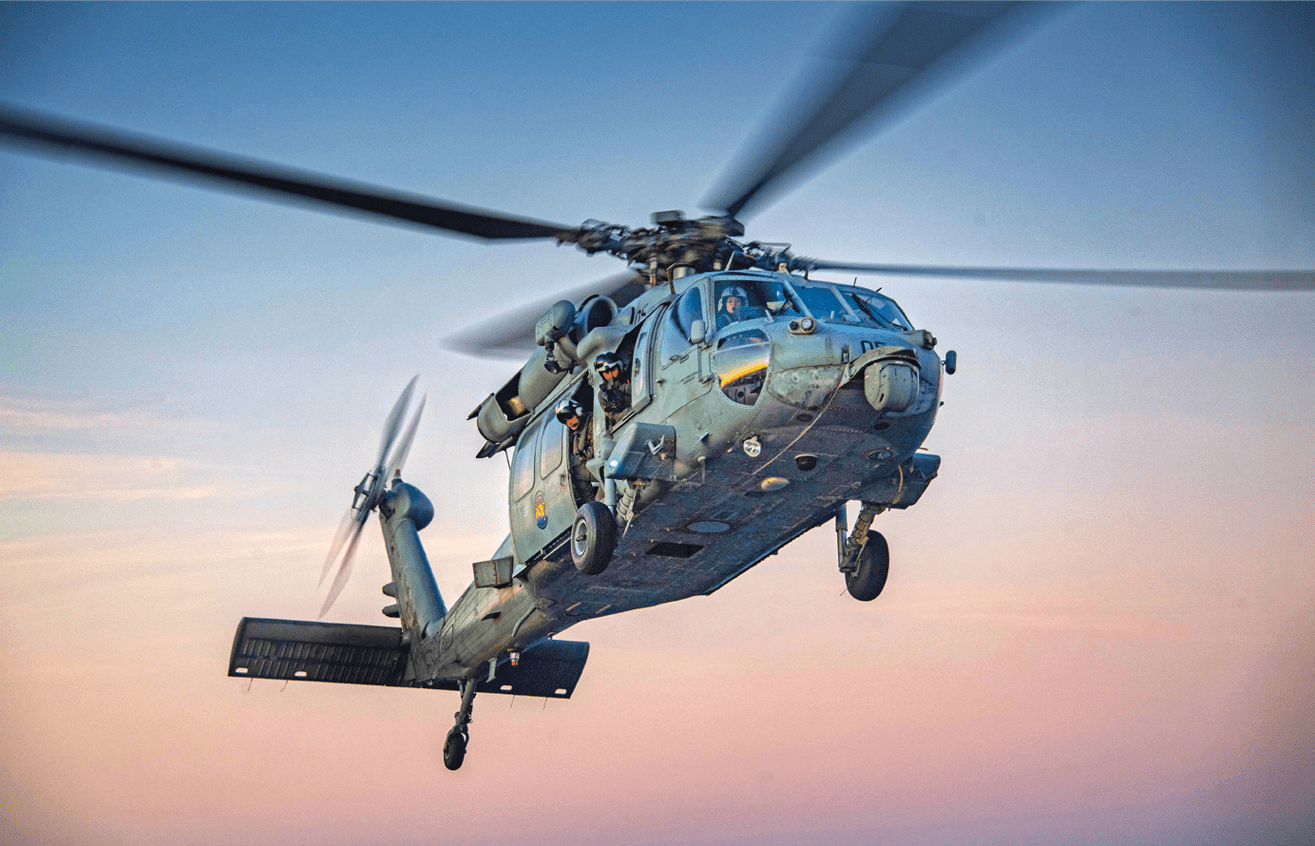
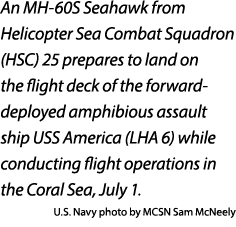




Into the Fight, Into the Sea:
HSC-25’s Search and
Rescue Mission
By Petty Officer 2nd Class Amy Mullins
Embarked aboard the forward-deployed amphibious assault ship USS America (LHA 6), Helicopter Sea Combat Squadron (HSC) 25 Detachment 6 trains hard to carry out one of the Navy’s most demanding and essential missions: search and rescue (SAR). Whether someone is lost at sea, injured on land or caught in a life-threatening situation, HSC-25 is trained and ready to respond at a moment’s notice.
SAR missions require more than just skill, however—they demand constant teamwork, intense physical and mental preparation, and well-maintained aircraft that can perform under pressure.
Aircrew assigned to HSC-25 regularly conduct mock recovery missions to prepare for real emergencies. These drills can involve rescuing a swimmer lost at sea, recovering someone who has fallen overboard or locating a missing hiker. But, training isn’t just about practicing known scenarios—it’s also about preparing for the unexpected.
Naval Aircrewman (Helicopter) 2nd Class Gabriel Andaya, DET 6 Operations lead petty officer, is a crew chief, rescue swimmer and door gunner with HSC-25. He explains being a rescue swimmer is both physically and mentally demanding. Swimmers must be ready to swim in 20-foot waves for at least 30 minutes, all while managing equipment, staying aware of their environment and helping someone who may be panicked, unconscious or injured.
“A rescue swimmer is expected to know the aircraft systems to help locate a survivor and set up the cabin for rescue,” Andaya said. “Once on scene, we assess the situation: Are they entangled? Do they have flotation? Are they conscious or unconscious? Everything changes based on the survivor’s condition.”
A typical day of training can quickly go from calm to intense. One moment, it is a routine flight. The next, there is a call on the radio: A vessel is capsizing nearby. From that moment, Andaya said, “You have two minutes to change out of flight gear and into swimmer gear to begin the search.”
Aircraft issues or changing conditions often force swimmers to adapt their plans mid-mission. Even in training, survivors may lack flotation and accidentally put the swimmer at risk as they try to stay above water.
Staying Calm Under
Pressure Is Key
“Your job is to take control of the situation. But, it’s not over once the survivor is safe. The rescue swimmer and crew chief are also responsible for providing care during the flight back,” he said.
While training is essential, the real impact of HSC-25’s mission comes into focus during live rescues.
Andaya recalled a particularly memorable mission that shows the heart behind SAR.
“On a Sunday afternoon in Guam, I got a call about a man on a remote island, 104 nautical miles away, who had a broken pelvis and was bleeding internally. The local hospital was too small to treat him, and he had about four hours before his condition would become critical.”
The landing zone was a small parking lot, with just 40 feet of rotor clearance. Fuel was limited, and there was no nearby refueling option, giving the team only 20 minutes on the ground. On top of that, the sun had set—the entire operation required night vision goggles. Andaya and his team landed safely, retrieved the patient and provided in-flight care as the SAR medical technician administered medicine. After a 2-hour and 15-minute flight, they arrived at a hospital with advanced care. The next day, they learned the patient’s surgery was successful and he had stabilized.
“It wasn’t the craziest flight I’ve ever had,” Andaya said, “but I definitely slept better that night, knowing I helped someone when they were at their lowest.”
Every successful mission depends on more than just the crew in the air. The MH-60S Seahawk helicopter, also known as the Knighthawk, is a complex aircraft requiring constant care. The maintenance crew performs daily inspections and emergency repairs to ensure it is always mission ready.
In the cockpit, pilots handle communication and maintain a stable hover. The crew chief deploys swimmers and communicates water conditions, while the rescue swimmer secures and assists the survivor.
Behind Every Flight Is a
Unified Goal: Save Lives—
Fast and Safely
Since its formation in 1984, HSC-25 has launched 2,445 missions, resulting in 762 medical evacuations and 475 lives saved from the waters and jungles across the Pacific island chains.
HSC-25 also supports a wide range of missions beyond SAR, including Helicopter Visit Board Search and Seizure (VBSS), Maritime Interdiction, Non-Traditional Intelligence, Surveillance, and Reconnaissance (NTISR), VERTREP (Vertical Replenishment) and Close Air Support using Hellfire missiles, rockets and crew-served weapons.
None of this would be possible without the coordination between skilled aviators, rescue swimmers, maintainers and mission planners.
HSC-25 is the Navy’s only forward-deployed MH-60S expeditionary squadron, flying missions across the U.S. 7th Fleet. They support USS America (LHA-6) and all ships connected to the America Strike Group under Commander Task Force 76, providing anti-surface warfare, special operations support, combat logistics, SAR and humanitarian aid capabilities. HSC-25 remains ready to protect lives—anywhere, anytime, under any conditions.
America, lead ship of the America Amphibious Ready Group, is underway conducting routine integrated operations in U.S. 7th Fleet area of operations. U.S. 7th Fleet is the U.S. Navy’s largest forward-deployed numbered fleet and interacts and operates routinely with allies and partners to preserve a free and open Indo-Pacific region.
Petty Officer 2nd Class Amy Mullins is a public affairs officer for USS America (LHA-6). 










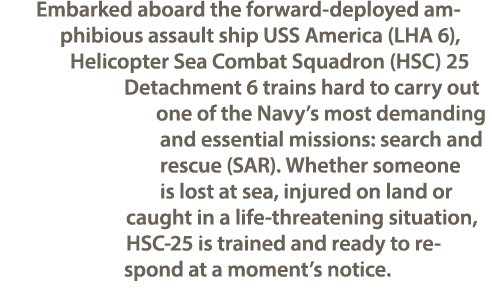
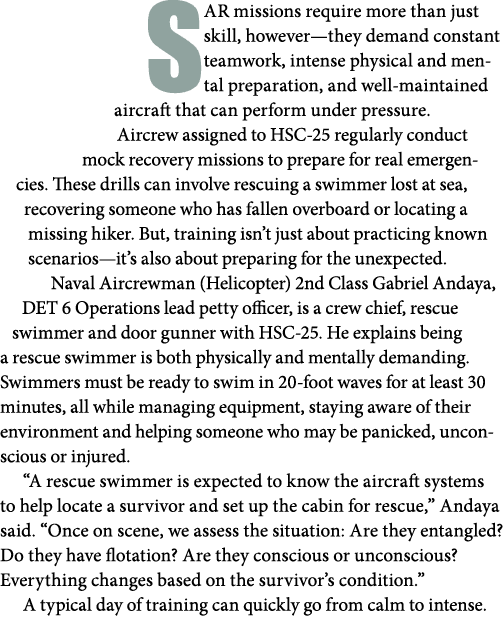


Into the Fight, Into the Sea:
HSC-25’s Search and
Rescue Mission
By Petty Officer 2nd Class Amy Mullins
Embarked aboard the forward-deployed amphibious assault ship USS America (LHA 6), Helicopter Sea Combat Squadron (HSC) 25 Detachment 6 trains hard to carry out one of the Navy’s most demanding and essential missions: search and rescue (SAR). Whether someone is lost at sea, injured on land or caught in a life-threatening situation, HSC-25 is trained and ready to respond at a moment’s notice.
SAR missions require more than just skill, however—they demand constant teamwork, intense physical and mental preparation, and well-maintained aircraft that can perform under pressure.
Aircrew assigned to HSC-25 regularly conduct mock recovery missions to prepare for real emergencies. These drills can involve rescuing a swimmer lost at sea, recovering someone who has fallen overboard or locating a missing hiker. But, training isn’t just about practicing known scenarios—it’s also about preparing for the unexpected.
Naval Aircrewman (Helicopter) 2nd Class Gabriel Andaya, DET 6 Operations lead petty officer, is a crew chief, rescue swimmer and door gunner with HSC-25. He explains being a rescue swimmer is both physically and mentally demanding. Swimmers must be ready to swim in 20-foot waves for at least 30 minutes, all while managing equipment, staying aware of their environment and helping someone who may be panicked, unconscious or injured.
“A rescue swimmer is expected to know the aircraft systems to help locate a survivor and set up the cabin for rescue,” Andaya said. “Once on scene, we assess the situation: Are they entangled? Do they have flotation? Are they conscious or unconscious? Everything changes based on the survivor’s condition.”
A typical day of training can quickly go from calm to intense. One moment, it is a routine flight. The next, there is a call on the radio: A vessel is capsizing nearby. From that moment, Andaya said, “You have two minutes to change out of flight gear and into swimmer gear to begin the search.”
Aircraft issues or changing conditions often force swimmers to adapt their plans mid-mission. Even in training, survivors may lack flotation and accidentally put the swimmer at risk as they try to stay above water.
Staying Calm Under
Pressure Is Key
“Your job is to take control of the situation. But, it’s not over once the survivor is safe. The rescue swimmer and crew chief are also responsible for providing care during the flight back,” he said.
While training is essential, the real impact of HSC-25’s mission comes into focus during live rescues.
Andaya recalled a particularly memorable mission that shows the heart behind SAR.
“On a Sunday afternoon in Guam, I got a call about a man on a remote island, 104 nautical miles away, who had a broken pelvis and was bleeding internally. The local hospital was too small to treat him, and he had about four hours before his condition would become critical.”
The landing zone was a small parking lot, with just 40 feet of rotor clearance. Fuel was limited, and there was no nearby refueling option, giving the team only 20 minutes on the ground. On top of that, the sun had set—the entire operation required night vision goggles. Andaya and his team landed safely, retrieved the patient and provided in-flight care as the SAR medical technician administered medicine. After a 2-hour and 15-minute flight, they arrived at a hospital with advanced care. The next day, they learned the patient’s surgery was successful and he had stabilized.
“It wasn’t the craziest flight I’ve ever had,” Andaya said, “but I definitely slept better that night, knowing I helped someone when they were at their lowest.”
Every successful mission depends on more than just the crew in the air. The MH-60S Seahawk helicopter, also known as the Knighthawk, is a complex aircraft requiring constant care. The maintenance crew performs daily inspections and emergency repairs to ensure it is always mission ready.
In the cockpit, pilots handle communication and maintain a stable hover. The crew chief deploys swimmers and communicates water conditions, while the rescue swimmer secures and assists the survivor.
Behind Every Flight Is a
Unified Goal: Save Lives—
Fast and Safely
Since its formation in 1984, HSC-25 has launched 2,445 missions, resulting in 762 medical evacuations and 475 lives saved from the waters and jungles across the Pacific island chains.
HSC-25 also supports a wide range of missions beyond SAR, including Helicopter Visit Board Search and Seizure (VBSS), Maritime Interdiction, Non-Traditional Intelligence, Surveillance, and Reconnaissance (NTISR), VERTREP (Vertical Replenishment) and Close Air Support using Hellfire missiles, rockets and crew-served weapons.
None of this would be possible without the coordination between skilled aviators, rescue swimmers, maintainers and mission planners.
HSC-25 is the Navy’s only forward-deployed MH-60S expeditionary squadron, flying missions across the U.S. 7th Fleet. They support USS America (LHA-6) and all ships connected to the America Strike Group under Commander Task Force 76, providing anti-surface warfare, special operations support, combat logistics, SAR and humanitarian aid capabilities. HSC-25 remains ready to protect lives—anywhere, anytime, under any conditions.
America, lead ship of the America Amphibious Ready Group, is underway conducting routine integrated operations in U.S. 7th Fleet area of operations. U.S. 7th Fleet is the U.S. Navy’s largest forward-deployed numbered fleet and interacts and operates routinely with allies and partners to preserve a free and open Indo-Pacific region.
Petty Officer 2nd Class Amy Mullins is a public affairs officer for USS America (LHA-6). 
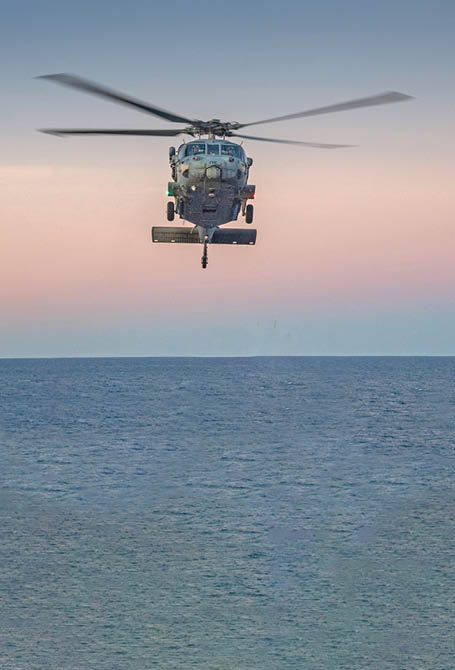
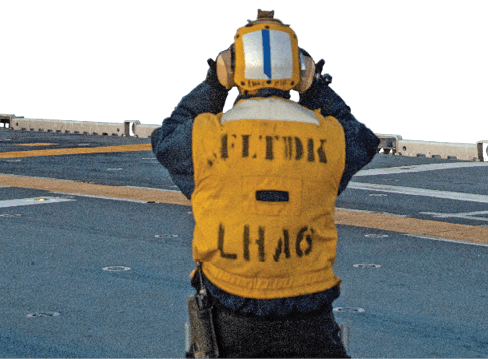










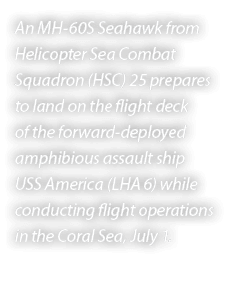





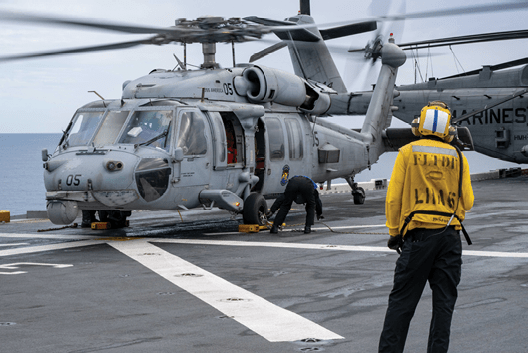













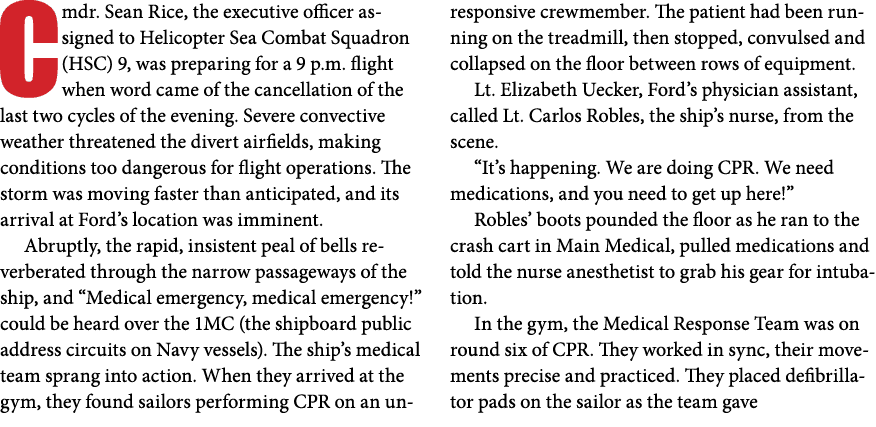



Seconds to Spare:
A Sailor’s
Fight for Life
in the Eye of
the Storm
By Mass Communication Specialist 2nd Class Julianna J. Lynch
The order to cancel evening flights came down at 8:15 p.m. April 7, a reprieve from a rapidly approaching storm that promised to shroud USS Gerald R. Ford (CVN 78) in darkness and rain. But, before the last helicopter could be secured, a different kind of emergency ripped through the ship—a sailor collapsing, an emergency call over the 1 Main Circuit (1MC) and a desperate race against time and Mother Nature.
Cmdr. Sean Rice, the executive officer assigned to Helicopter Sea Combat Squadron (HSC) 9, was preparing for a 9 p.m. flight when word came of the cancellation of the last two cycles of the evening. Severe convective weather threatened the divert airfields, making conditions too dangerous for flight operations. The storm was moving faster than anticipated, and its arrival at Ford’s location was imminent.
Abruptly, the rapid, insistent peal of bells reverberated through the narrow passageways of the ship, and “Medical emergency, medical emergency!” could be heard over the 1MC (the shipboard public address circuits on Navy vessels). The ship’s medical team sprang into action. When they arrived at the gym, they found sailors performing CPR on an unresponsive crewmember. The patient had been running on the treadmill, then stopped, convulsed and collapsed on the floor between rows of equipment.
Lt. Elizabeth Uecker, Ford’s physician assistant, called Lt. Carlos Robles, the ship’s nurse, from the scene.
“It’s happening. We are doing CPR. We need medications, and you need to get up here!”
Robles’ boots pounded the floor as he ran to the crash cart in Main Medical, pulled medications and told the nurse anesthetist to grab his gear for intubation.
In the gym, the Medical Response Team was on round six of CPR. They worked in sync, their movements precise and practiced. They placed defibrillator pads on the sailor as the team gave rescue breaths. The first rhythm check came back—ventricular fibrillation, no pulse. As the defibrillator charged, every pair of eyes in the room watched the monitor. They delivered the shock and CPR resumed. Another check—no pulse.
After 15 rounds of CPR and the administration of epinephrine, the patient’s pulse returned, signaling he could be moved down to Main Medical.
After intubation and stabilization, the Corpsmen transported the patient swiftly through the ship to Main Medical. The path ahead was a gauntlet: across the gym, down a ladderwell, through the maze of aircraft in the hanger bay, into the medical staging area elevator and finally down to the second deck and into Medical. There, Lt. Cmdr. Jordan Robinson, the ship’s surgeon, immediately took control as they made the decision to transport the sailor off the ship to the nearest Level 1 trauma center. The medical team reassessed the patient’s vital signs, confirmed and secured the airway, started necessary medications and quickly completed lab work to stabilize the patient for the flight ahead.
In the Combat Direction Center, an undercurrent of tension ran through the group as flight preparations kicked into overdrive. Capt. Christopher Williams, Ford’s executive officer, moved with focused urgency to mobilize the medical evacuation (MEDEVAC) coordination team. Several departments—Operations, Security, Weapons, HSC-9 and Destroyer Squadron (DESRON) 2—were called in to execute a plan.
The storm still loomed, its unpredictability casting doubt on whether the helicopter could make it to Shands Medical Center in Jacksonville, Florida, at all. Each choice involved a calculated risk.
Lt. j.g. Melvin Williams, Rice’s co-pilot, and Naval Aircrewman 3rd Class Haevinn Kahala, both assigned to HSC-9, sprinted to the aircraft. They prepared the helicopter and ensured the cabin was ready for a litter-bound patient in desperate need of care. At the same time, two of the squadron’s seasoned medical professionals—Hospital Corpsman 2nd Class Damiano Bonadonna and freshly-qualified aircrew paramedic Naval Aircrewman 2nd Class Sean Winterburn—volunteered to join the crew and provide critical medical support during the perilous flight.
“The HSC-9 pilots and crew had the helicopter ready and spinning long before we were even close to sending the patient,” said Cmdr. Kristina O’Connor, Ford’s senior medical officer. “They were monitoring the storm with precision, getting constant updates on the weather and adjusting their flight path on the fly. Once the patient was loaded, without hesitation, they were off.”
Everything was set in motion. The storm was the only thing standing between the crew and their destination. They had identified Shands Medical Center as the closest safe haven, but even as they plotted the course, weather reports from Florida’s divert airfields showed conditions were deteriorating rapidly.
The ship’s meteorologists delivered vital updates. The radar painted a dire picture: A violent line of storms was churning from the coast of the Carolinas south to Florida, positioned squarely between the ship and Jacksonville. But, there was a break in the storm’s progression that allowed for a narrow opening in the weather, and the crew saw their chance to move southward toward the city. Rice and his crew chief, Naval Aircrewman 1st Class John Kainoa, gathered all required information and proceeded to the helicopter.
At 10:45 p.m., the crew launched into the night sky, immediately greeted by sheets of rain, intense lightning and towering clouds. Engulfed by the storm, they aimed for a tiny sliver of clear sky—the helicopter’s only visible path. An additional airborne helicopter from Helicopter Maritime Strike Squadron (HSM) 70 provided real-time weather information for Rice’s crew to avoid the storm and maintain visual conditions as long as possible. Despite their vital assistance, the weather gave them no choice but to punch through the rain and clouds and proceed via instrument navigation.
Robles, Bonadonna and Winterburn worked to stabilize the patient during the transit. The patient’s vital signs were deteriorating. While battling turbulence that shook the aircraft violently, and operating under the dim glow of limited light, they administered lifesaving medication with precision, their hands steady despite the chaos around them. Every decision, every movement, was deliberate as they worked in near darkness with unwavering focus.
With 60 nautical miles to go, sudden turbulence tossed the helo from side to side, lightning intensified and the headwind roared to nearly 50 knots, but the patient’s condition demanded they press on. Rice called for deviation—a plea for a lower altitude from the shore-controlling agency. Even though they might lose radar contact, the orders came to descend to 3,000 feet. Rice then requested a further drop to 2,000 feet, demanding maximum performance of the aircraft while knowing the calculated risks he needed to take to deliver his crew and their patient safely.
Slowly, the headwind began to fade, and the sky began to quiet as the lightning retreated. As the clouds began to part, the dim, distant lights of the Jacksonville skyline emerged through the haze—offering a promise of safety amid the storm. But, the situation remained critical. Shands Medical Center came into view, and the crew executed a flawless approach. The aircraft touched down at 12:07 a.m. The medical team transferred the patient swiftly to Shands’ Intensive Care Unit.
“In more than 3,000 hours of military flying experience, this was by far the most challenging and dangerous weather conditions I have ever encountered on any flight, much less one at night, long range from ship,” Rice said.
The sailor’s initial prognosis was less than 15 percent chance of survival. But, the crew refused to concede, and despite the odds, the patient is recovering. A mission that could have ended in tragedy became a testament to courage, skill and teamwork.
Rice and Williams both received Navy Commendation Medals, and Robles, Kainoa, Kahala, Winterburn and Bonadonna received the Navy and Marine Corps Achievement Medal on April 13 in recognition of their lifesaving efforts and heroic actions.
Mass Communication Specialist 2nd Class Julianna J. Lynch is a communications specialist with USS Gerald R. Ford (CVN 78). 


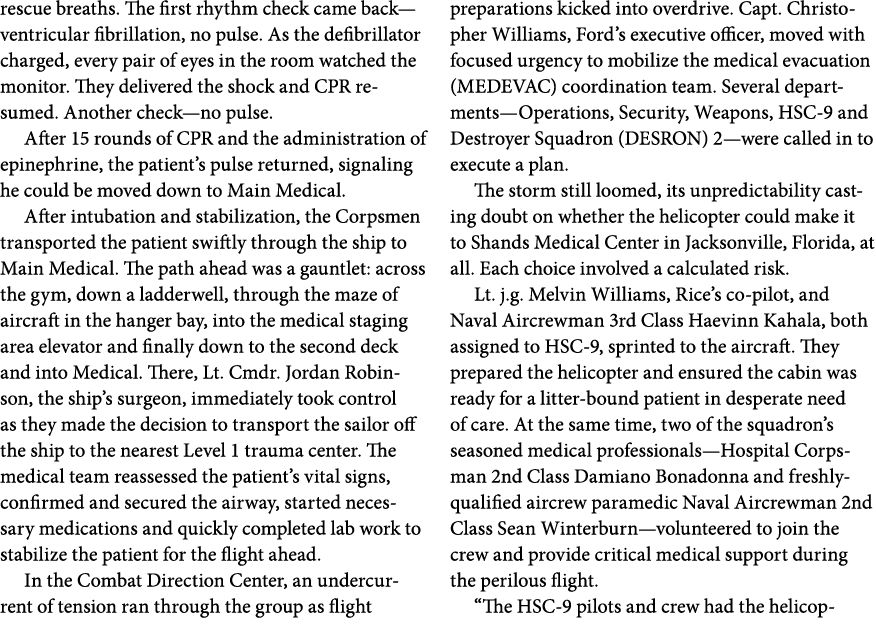
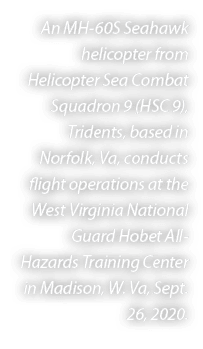



Seconds to Spare:
A Sailor’s
Fight for Life
in the Eye of
the Storm
By Mass Communication Specialist 2nd Class Julianna J. Lynch
The order to cancel evening flights came down at 8:15 p.m. April 7, a reprieve from a rapidly approaching storm that promised to shroud USS Gerald R. Ford (CVN 78) in darkness and rain. But, before the last helicopter could be secured, a different kind of emergency ripped through the ship—a sailor collapsing, an emergency call over the 1 Main Circuit (1MC) and a desperate race against time and Mother Nature.
Cmdr. Sean Rice, the executive officer assigned to Helicopter Sea Combat Squadron (HSC) 9, was preparing for a 9 p.m. flight when word came of the cancellation of the last two cycles of the evening. Severe convective weather threatened the divert airfields, making conditions too dangerous for flight operations. The storm was moving faster than anticipated, and its arrival at Ford’s location was imminent.
Abruptly, the rapid, insistent peal of bells reverberated through the narrow passageways of the ship, and “Medical emergency, medical emergency!” could be heard over the 1MC (the shipboard public address circuits on Navy vessels). The ship’s medical team sprang into action. When they arrived at the gym, they found sailors performing CPR on an unresponsive crewmember. The patient had been running on the treadmill, then stopped, convulsed and collapsed on the floor between rows of equipment.
Lt. Elizabeth Uecker, Ford’s physician assistant, called Lt. Carlos Robles, the ship’s nurse, from the scene.
“It’s happening. We are doing CPR. We need medications, and you need to get up here!”
Robles’ boots pounded the floor as he ran to the crash cart in Main Medical, pulled medications and told the nurse anesthetist to grab his gear for intubation.
In the gym, the Medical Response Team was on round six of CPR. They worked in sync, their movements precise and practiced. They placed defibrillator pads on the sailor as the team gave rescue breaths. The first rhythm check came back—ventricular fibrillation, no pulse. As the defibrillator charged, every pair of eyes in the room watched the monitor. They delivered the shock and CPR resumed. Another check—no pulse.
After 15 rounds of CPR and the administration of epinephrine, the patient’s pulse returned, signaling he could be moved down to Main Medical.
After intubation and stabilization, the Corpsmen transported the patient swiftly through the ship to Main Medical. The path ahead was a gauntlet: across the gym, down a ladderwell, through the maze of aircraft in the hanger bay, into the medical staging area elevator and finally down to the second deck and into Medical. There, Lt. Cmdr. Jordan Robinson, the ship’s surgeon, immediately took control as they made the decision to transport the sailor off the ship to the nearest Level 1 trauma center. The medical team reassessed the patient’s vital signs, confirmed and secured the airway, started necessary medications and quickly completed lab work to stabilize the patient for the flight ahead.
In the Combat Direction Center, an undercurrent of tension ran through the group as flight preparations kicked into overdrive. Capt. Christopher Williams, Ford’s executive officer, moved with focused urgency to mobilize the medical evacuation (MEDEVAC) coordination team. Several departments—Operations, Security, Weapons, HSC-9 and Destroyer Squadron (DESRON) 2—were called in to execute a plan.
The storm still loomed, its unpredictability casting doubt on whether the helicopter could make it to Shands Medical Center in Jacksonville, Florida, at all. Each choice involved a calculated risk.
Lt. j.g. Melvin Williams, Rice’s co-pilot, and Naval Aircrewman 3rd Class Haevinn Kahala, both assigned to HSC-9, sprinted to the aircraft. They prepared the helicopter and ensured the cabin was ready for a litter-bound patient in desperate need of care. At the same time, two of the squadron’s seasoned medical professionals—Hospital Corpsman 2nd Class Damiano Bonadonna and freshly-qualified aircrew paramedic Naval Aircrewman 2nd Class Sean Winterburn—volunteered to join the crew and provide critical medical support during the perilous flight.
“The HSC-9 pilots and crew had the helicopter ready and spinning long before we were even close to sending the patient,” said Cmdr. Kristina O’Connor, Ford’s senior medical officer. “They were monitoring the storm with precision, getting constant updates on the weather and adjusting their flight path on the fly. Once the patient was loaded, without hesitation, they were off.”
Everything was set in motion. The storm was the only thing standing between the crew and their destination. They had identified Shands Medical Center as the closest safe haven, but even as they plotted the course, weather reports from Florida’s divert airfields showed conditions were deteriorating rapidly.
The ship’s meteorologists delivered vital updates. The radar painted a dire picture: A violent line of storms was churning from the coast of the Carolinas south to Florida, positioned squarely between the ship and Jacksonville. But, there was a break in the storm’s progression that allowed for a narrow opening in the weather, and the crew saw their chance to move southward toward the city. Rice and his crew chief, Naval Aircrewman 1st Class John Kainoa, gathered all required information and proceeded to the helicopter.
At 10:45 p.m., the crew launched into the night sky, immediately greeted by sheets of rain, intense lightning and towering clouds. Engulfed by the storm, they aimed for a tiny sliver of clear sky—the helicopter’s only visible path. An additional airborne helicopter from Helicopter Maritime Strike Squadron (HSM) 70 provided real-time weather information for Rice’s crew to avoid the storm and maintain visual conditions as long as possible. Despite their vital assistance, the weather gave them no choice but to punch through the rain and clouds and proceed via instrument navigation.
Robles, Bonadonna and Winterburn worked to stabilize the patient during the transit. The patient’s vital signs were deteriorating. While battling turbulence that shook the aircraft violently, and operating under the dim glow of limited light, they administered lifesaving medication with precision, their hands steady despite the chaos around them. Every decision, every movement, was deliberate as they worked in near darkness with unwavering focus.
With 60 nautical miles to go, sudden turbulence tossed the helo from side to side, lightning intensified and the headwind roared to nearly 50 knots, but the patient’s condition demanded they press on. Rice called for deviation—a plea for a lower altitude from the shore-controlling agency. Even though they might lose radar contact, the orders came to descend to 3,000 feet. Rice then requested a further drop to 2,000 feet, demanding maximum performance of the aircraft while knowing the calculated risks he needed to take to deliver his crew and their patient safely.
Slowly, the headwind began to fade, and the sky began to quiet as the lightning retreated. As the clouds began to part, the dim, distant lights of the Jacksonville skyline emerged through the haze—offering a promise of safety amid the storm. But, the situation remained critical. Shands Medical Center came into view, and the crew executed a flawless approach. The aircraft touched down at 12:07 a.m. The medical team transferred the patient swiftly to Shands’ Intensive Care Unit.
“In more than 3,000 hours of military flying experience, this was by far the most challenging and dangerous weather conditions I have ever encountered on any flight, much less one at night, long range from ship,” Rice said.
The sailor’s initial prognosis was less than 15 percent chance of survival. But, the crew refused to concede, and despite the odds, the patient is recovering. A mission that could have ended in tragedy became a testament to courage, skill and teamwork.
Rice and Williams both received Navy Commendation Medals, and Robles, Kainoa, Kahala, Winterburn and Bonadonna received the Navy and Marine Corps Achievement Medal on April 13 in recognition of their lifesaving efforts and heroic actions.
Mass Communication Specialist 2nd Class Julianna J. Lynch is a communications specialist with USS Gerald R. Ford (CVN 78). 

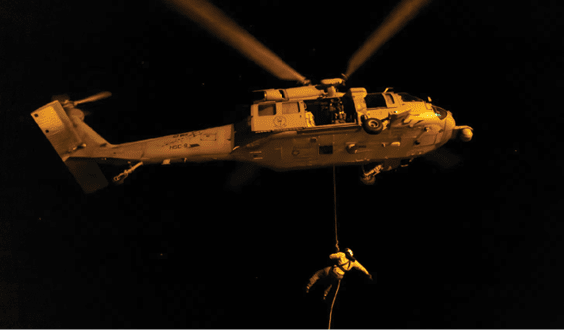





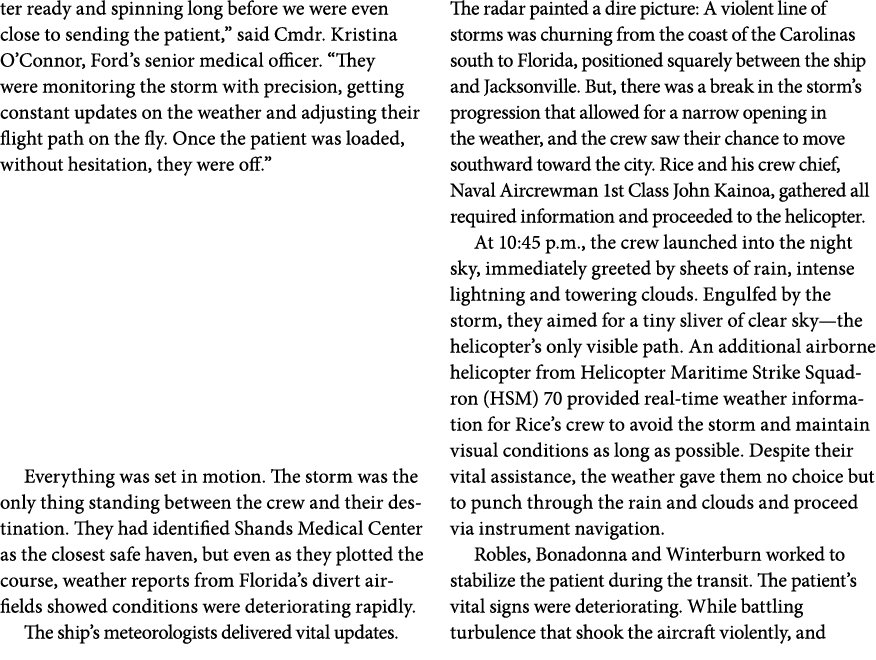





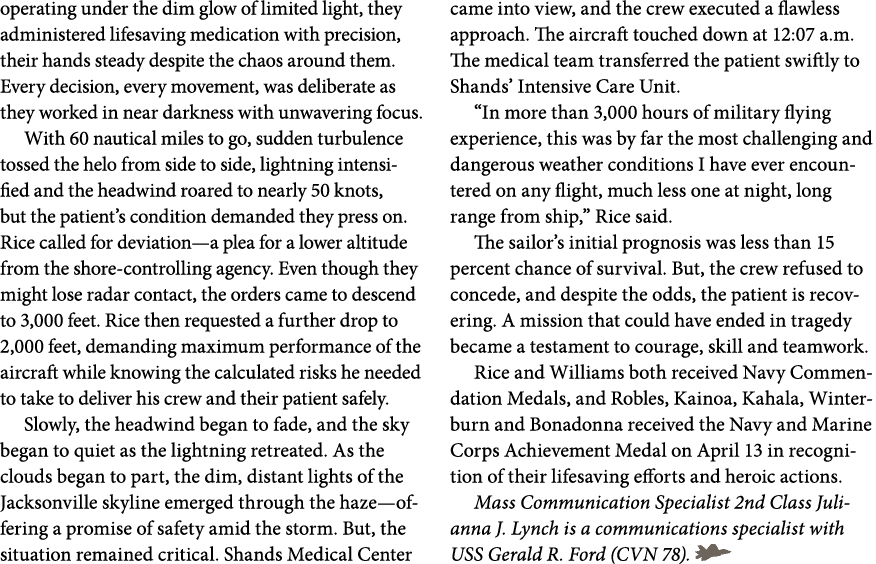


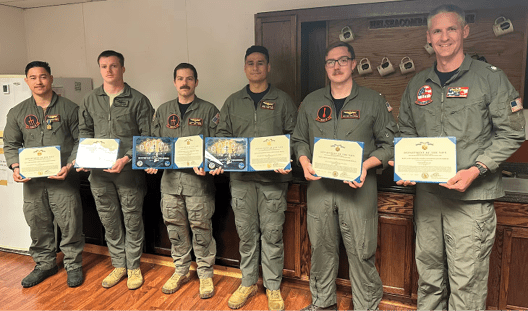



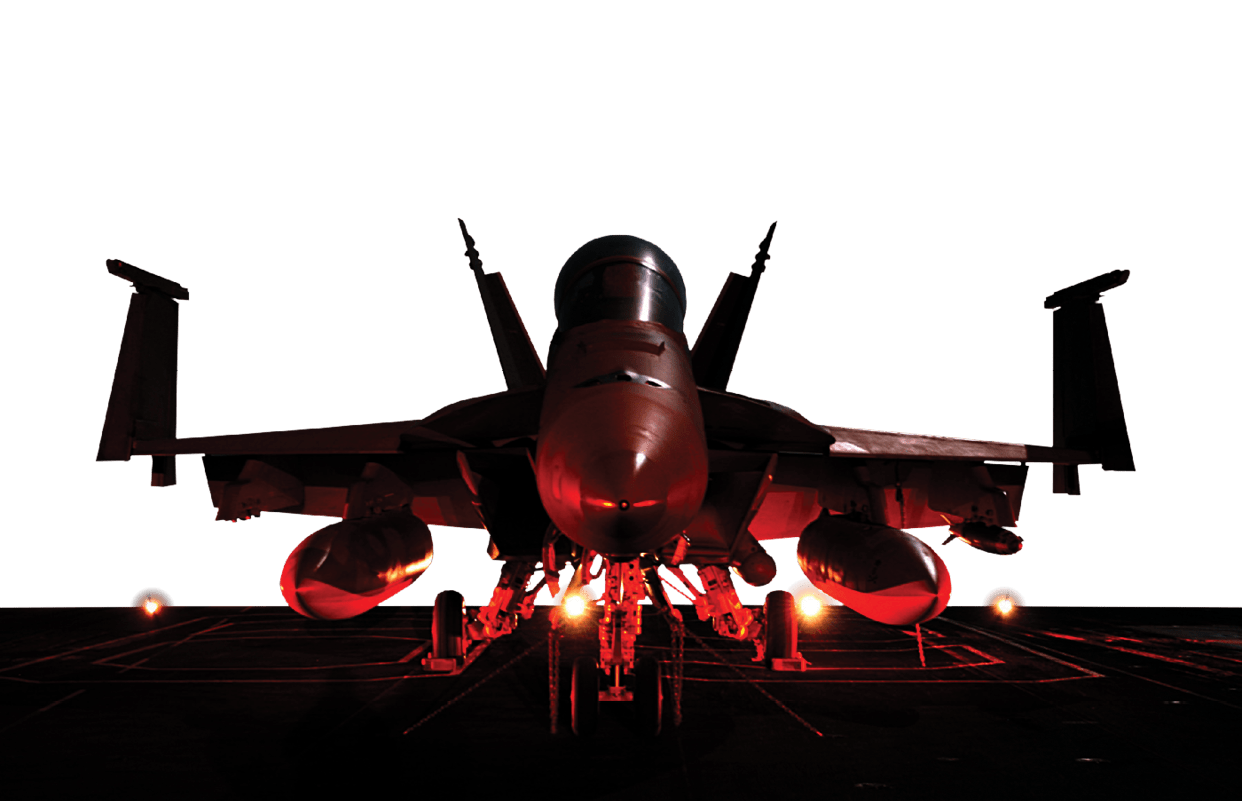





NRL Protects Naval Assets:
Land, Sea and Air
By Emily Winget
The relentless assault of salt-laden sea spray generated by coastal wave action poses a significant and persistent threat to the integrity of Department of Defense assets near and far from shorelines.
This corrosive environment accelerates the deterioration of critical military and naval resources, challenging their lifespan.
“Ensuring the readiness of our naval assets is paramount to the Navy's mission, and understanding the insidious threat of corrosion, even far from the waterline, is a critical component of that readiness,” said Capt. Jesse Black, U.S. Naval Research Laboratory’s (NRL) commanding officer. “By advancing our understanding of corrosion, we can develop innovative solutions to protect our ships and equipment, ultimately saving valuable time for our sailors and safeguarding our vital assets.”
Alex Johnson is a National Research Council postdoctoral fellow with NRL’s Chemistry Division Center for Corrosion Science and Engineering. He studies the impact of corrosion from saltwater aerosols on naval assets to better understand how breaking waves produce a mist that can cause costly damage.
“This research is crucial for understanding the potential for corrosion on naval ships, aircraft and equipment, even those located at a distance from the water,” Johnson said. “By quantifying the distribution and deposition of salt aerosols, we can better assess the corrosion risk associated with different locations and environments.”
Johnson is conducting research at the NRL Laboratory for Autonomous Systems Research Littoral Bay Wave Pool to simulate ocean conditions and learn how saltwater aerosols are generated and transported by waves, bubble bursting and interactions between the land-sea interface.
Johnson strategically placed 3D-printed, specially designed airfoils above the wave pool, subjecting them to typical environmental conditions found along a shoreline. He aims to determine how far and how much salt spray can travel to learn how the spray can impact naval assets located away from the immediate shoreline.
“We have observed that there is a zone of enhanced corrosion proximate to the shoreline. The corrosivity is worse right at the surf zone and then rapidly decreases over hundreds of meters,” said Raymond Santucci, materials engineer in NRL’s Corrosion Science Section. “Over longer distances, the corrosivity is lesser and decreases more gradually but has an impact much further inland. Whether we are conducting field testing, or DoD is deploying assets at installations, the exact distance matters when you are close to the coast.”
Distance matters to both surface and subsurface vessels, as well as to naval aircraft that are exposed to sea salt aerosols during flight within the marine boundary layer—the lowest part of the atmosphere directly impacted by the ocean—and while stationed on flight decks or at land-based installations.
“The design and sustainment of DoD assets is improved if the corrosion risk of the operating environment is better characterized,” Santucci said.
Currently, maintenance protocols (i.e., rinsing, washing, covering, inspection and repairs) are determined by factors such as the severity of the deployment location, the flight altitude above sea water and proximity to the ocean. The existing protocols do not consider corrosion caused by traveling sea salt aerosols. Time, manpower, materials and money can be better allocated if preventative and corrective maintenance is calibrated correctly for the severity of the location. This is where Johnson’s research comes in.
“The results of this research will lead to better corrosion modeling and the ability to tailor corrosion maintenance based on specific service conditions, thereby optimizing resource usage,” Santucci said.
In Johnson’s experiment, the Littoral Bay was equipped with wave actuators for controlled wave crashing to generate sea spray. The pool was filled with “instant ocean” to simulate ocean water, and a scaffolding structure was used to mount equipment for a five-day exposure.
“The goal of the experiment is to characterize dry deposition, airborne concentration and particle mass size ranges of sea spray aerosol with height in a controlled setting that mimics the land-sea interface,” Johnson said.
To further enhance the realism of the study, Johnson plans to introduce a slope to the wave pool to create an artificial shoreline. Testing with the sloped configuration is scheduled to commence in summer 2026.
“Our corrosion data varies wildly for locations close to a shoreline. We hypothesize that this is due to differences in the local bathymetry, or character, of the beach,” Santucci said. “The exact same wave approaching different types of coasts will result in different breaking waves, which results in different sea spray aerosol production. To adequately capture this effect in a controlled research setting, an artificial shoreline is needed to explore the pertinent variables.”
Even without the artificial shoreline, the team has validated the method to generate and assess sea spray aerosols from breaking waves.
“We also investigated the height at which the aerosols traveled and analyzed corrosion along an approximately 3-meter-high tower. We found that most of the large, salt-rich aerosols did not travel as high as the smaller aerosols,” Johnson said. “This, in turn, correlated to the higher corrosion rate of metals closer to the water surface than those higher up the tower. For future work, we also want to investigate the horizontal distance these aerosols will travel, which can also help us assess the corrosion risk of infrastructure and assets near the coastline.”
This research has the potential to impact naval operations significantly by providing valuable data on the long-term effects of saltwater aerosols on naval assets in all coastal environments: land, sea and air.
Emily Winget is a public affairs specialist with the U.S. Naval Research Laboratory. 







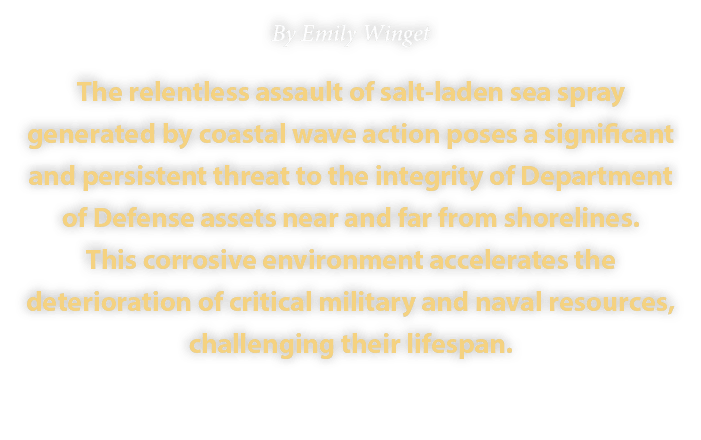


NRL Protects Naval Assets:
Land, Sea and Air
By Emily Winget
The relentless assault of salt-laden sea spray generated by coastal wave action poses a significant and persistent threat to the integrity of Department of Defense assets near and far from shorelines.
This corrosive environment accelerates the deterioration of critical military and naval resources, challenging their lifespan.
“Ensuring the readiness of our naval assets is paramount to the Navy's mission, and understanding the insidious threat of corrosion, even far from the waterline, is a critical component of that readiness,” said Capt. Jesse Black, U.S. Naval Research Laboratory’s (NRL) commanding officer. “By advancing our understanding of corrosion, we can develop innovative solutions to protect our ships and equipment, ultimately saving valuable time for our sailors and safeguarding our vital assets.”
Alex Johnson is a National Research Council postdoctoral fellow with NRL’s Chemistry Division Center for Corrosion Science and Engineering. He studies the impact of corrosion from saltwater aerosols on naval assets to better understand how breaking waves produce a mist that can cause costly damage.
“This research is crucial for understanding the potential for corrosion on naval ships, aircraft and equipment, even those located at a distance from the water,” Johnson said. “By quantifying the distribution and deposition of salt aerosols, we can better assess the corrosion risk associated with different locations and environments.”
Johnson is conducting research at the NRL Laboratory for Autonomous Systems Research Littoral Bay Wave Pool to simulate ocean conditions and learn how saltwater aerosols are generated and transported by waves, bubble bursting and interactions between the land-sea interface.
Johnson strategically placed 3D-printed, specially designed airfoils above the wave pool, subjecting them to typical environmental conditions found along a shoreline. He aims to determine how far and how much salt spray can travel to learn how the spray can impact naval assets located away from the immediate shoreline.
“We have observed that there is a zone of enhanced corrosion proximate to the shoreline. The corrosivity is worse right at the surf zone and then rapidly decreases over hundreds of meters,” said Raymond Santucci, materials engineer in NRL’s Corrosion Science Section. “Over longer distances, the corrosivity is lesser and decreases more gradually but has an impact much further inland. Whether we are conducting field testing, or DoD is deploying assets at installations, the exact distance matters when you are close to the coast.”
Distance matters to both surface and subsurface vessels, as well as to naval aircraft that are exposed to sea salt aerosols during flight within the marine boundary layer—the lowest part of the atmosphere directly impacted by the ocean—and while stationed on flight decks or at land-based installations.
“The design and sustainment of DoD assets is improved if the corrosion risk of the operating environment is better characterized,” Santucci said.
Currently, maintenance protocols (i.e., rinsing, washing, covering, inspection and repairs) are determined by factors such as the severity of the deployment location, the flight altitude above sea water and proximity to the ocean. The existing protocols do not consider corrosion caused by traveling sea salt aerosols. Time, manpower, materials and money can be better allocated if preventative and corrective maintenance is calibrated correctly for the severity of the location. This is where Johnson’s research comes in.
“The results of this research will lead to better corrosion modeling and the ability to tailor corrosion maintenance based on specific service conditions, thereby optimizing resource usage,” Santucci said.
In Johnson’s experiment, the Littoral Bay was equipped with wave actuators for controlled wave crashing to generate sea spray. The pool was filled with “instant ocean” to simulate ocean water, and a scaffolding structure was used to mount equipment for a five-day exposure.
“The goal of the experiment is to characterize dry deposition, airborne concentration and particle mass size ranges of sea spray aerosol with height in a controlled setting that mimics the land-sea interface,” Johnson said.
To further enhance the realism of the study, Johnson plans to introduce a slope to the wave pool to create an artificial shoreline. Testing with the sloped configuration is scheduled to commence in summer 2026.
“Our corrosion data varies wildly for locations close to a shoreline. We hypothesize that this is due to differences in the local bathymetry, or character, of the beach,” Santucci said. “The exact same wave approaching different types of coasts will result in different breaking waves, which results in different sea spray aerosol production. To adequately capture this effect in a controlled research setting, an artificial shoreline is needed to explore the pertinent variables.”
Even without the artificial shoreline, the team has validated the method to generate and assess sea spray aerosols from breaking waves.
“We also investigated the height at which the aerosols traveled and analyzed corrosion along an approximately 3-meter-high tower. We found that most of the large, salt-rich aerosols did not travel as high as the smaller aerosols,” Johnson said. “This, in turn, correlated to the higher corrosion rate of metals closer to the water surface than those higher up the tower. For future work, we also want to investigate the horizontal distance these aerosols will travel, which can also help us assess the corrosion risk of infrastructure and assets near the coastline.”
This research has the potential to impact naval operations significantly by providing valuable data on the long-term effects of saltwater aerosols on naval assets in all coastal environments: land, sea and air.
Emily Winget is a public affairs specialist with the U.S. Naval Research Laboratory. 
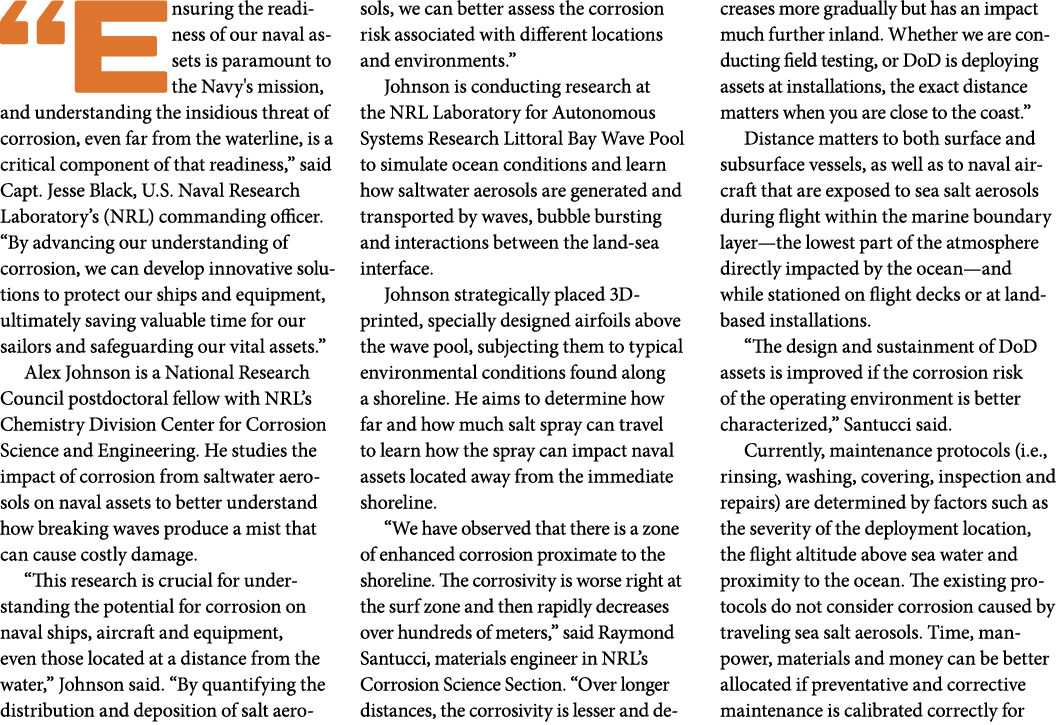


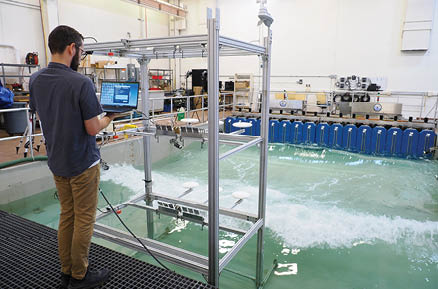












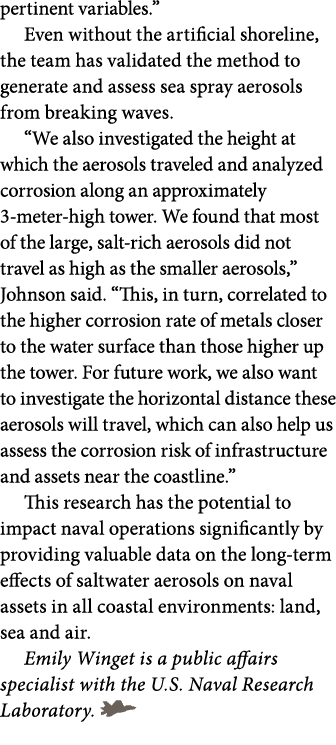

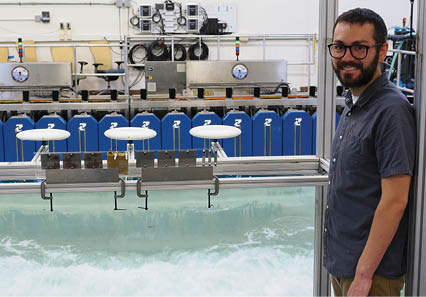





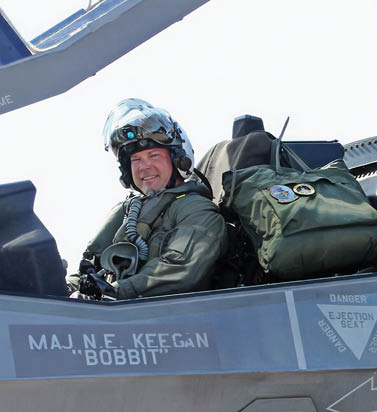

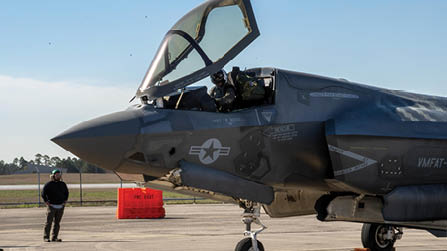
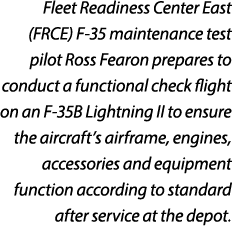
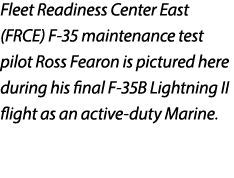


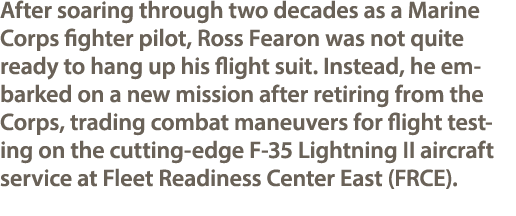
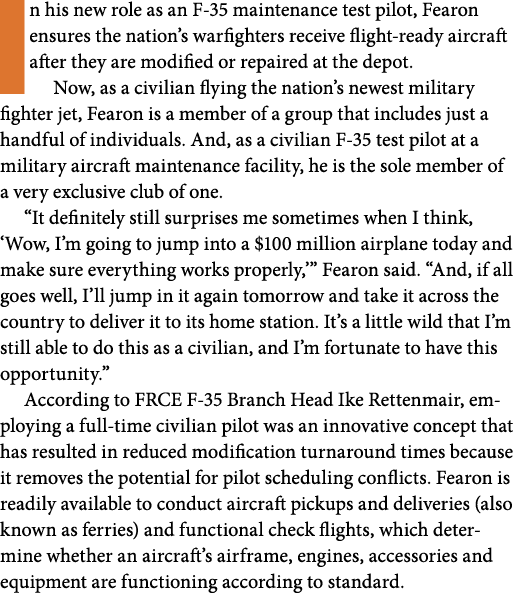







The
Mission
is the
Same
Retired Marine F-35 Pilot Finds New Way to Serve at FRCE
By Heather Wilburn
After soaring through two decades as a Marine Corps fighter pilot, Ross Fearon was not quite ready to hang up his flight suit. Instead, he embarked on a new mission after retiring from the Corps, trading combat maneuvers for flight testing on the cutting-edge F-35 Lightning II aircraft service at Fleet Readiness Center East (FRCE).
In his new role as an F-35 maintenance test pilot, Fearon ensures the nation’s warfighters receive flight-ready aircraft after they are modified or repaired at the depot.
Now, as a civilian flying the nation’s newest military fighter jet, Fearon is a member of a group that includes just a handful of individuals. And, as a civilian F-35 test pilot at a military aircraft maintenance facility, he is the sole member of a very exclusive club of one.
“It definitely still surprises me sometimes when I think, ‘Wow, I’m going to jump into a $100 million airplane today and make sure everything works properly,’” Fearon said. “And, if all goes well, I’ll jump in it again tomorrow and take it across the country to deliver it to its home station. It’s a little wild that I’m still able to do this as a civilian, and I’m fortunate to have this opportunity.”
According to FRCE F-35 Branch Head Ike Rettenmair, employing a full-time civilian pilot was an innovative concept that has resulted in reduced modification turnaround times because it removes the potential for pilot scheduling conflicts. Fearon is readily available to conduct aircraft pickups and deliveries (also known as ferries) and functional check flights, which determine whether an aircraft’s airframe, engines, accessories and equipment are functioning according to standard.
“Having Ross in the office right next door to me has been a huge benefit to us from a planning perspective,” Rettenmair said. “Knowing that we can, without question, put a pilot in the seat when an aircraft is ready for a functional check flight—that’s a huge gain for us. Prior to having him on board, we’d have to go out to the units and ask them to provide a pilot whenever we’d have a functional check flight or a ferry and, of course, the units have their own priorities. With Ross here, we don’t have any delays.”
Fearon’s ability to pilot all three variants of the fifth-generation aircraft also benefits the operational units FRCE serves by freeing up their pilots for mission requirements, rather than making the trip to or from Cherry Point, North Carolina, to deliver, test or retrieve an aircraft.
“From a fleet perspective, they don’t have to pull their pilot off the schedule to come perform a functional check flight or ferry for us, because they know we have a pilot that can do either. They all know he’s fully capable,” Rettenmair said. “That provides an additional gain to the fleet, on top of getting their aircraft back sooner.”
The move into his civilian role at FRCE was not a dramatic shift for Fearon; before his permanent role as the depot’s F-35 test pilot, he assisted the command with functional check flights and ferries to and from the aircraft’s home squadrons. He did this while still serving as an active-duty Marine Corps officer at Marine Corps Air Station Cherry Point, in addition to his “day job” as the deputy director for operations at the 2nd Marine Aircraft Wing.
In fact, Fearon’s experience with FRCE dates back to 2013, when the depot first began performing modifications on the F-35 platform. At the time, he was a Marine Corps F-35 flight instructor stationed at Eglin Air Force Base, Florida, and delivered one of the earliest F-35B aircraft inducted for maintenance at FRCE.
“I’ve known a lot of the folks in this program here for a long time,” he said. “And over the years, no matter where I was stationed, I would volunteer for the ferries that needed to come to FRC East, or any of the pickups from here that needed to come back to the squadron, because I enjoyed coming back to this area and working with these good people.”
When the time came to decide what he would do after retiring from the Marine Corps, Fearon said he wanted to continue flying, but was not interested in flying commercially.
“Then this opportunity at FRC East presented itself and offered me the chance to essentially keep doing what I was already doing and continue flying the F-35,” he said. “It just seemed like a good deal all around. I was able to continue on with the people I already had existing relationships with and continue giving good jets back to the fleet. It gave me another way to continue serving, just in a different capacity on the civilian side.”
Fearon is not the first civilian test pilot at FRCE—the depot pioneered the concept within Naval Air Systems Command in 2021 by hiring a retired Marine Corps UH-1N helicopter pilot to support its UH-1N detachment at the North Carolina Global TransPark in Kinston. The idea has proven successful in both instances, so much so that Rettenmair said he would like to see the approach spread within the broader military aviation maintenance, repair and overhaul community.
“I think the biggest gain, enterprise-wide, would be that having a civilian pilot available alleviates the fleet demand of giving up a pilot to travel, conduct a functional check flight and ferry the aircraft back home—regardless of what platform it is,” Rettenmair said. “Hopefully more organizations are able to get on board and reap the benefits as we move forward.”
After about six months in the position, Fearon said his favorite aspect of the job is his team.
“I know it sounds surprising, because everyone expects it to be the flying,” he said. “But honestly, the most rewarding aspect is seeing everyone work together to overcome the challenges we may face to get those airplanes out the door and back to the parent units—whether it’s parts availability or tight timelines for units that are needing to deploy.
“It’s a little different from the civilian side than it was on active duty, in that people don’t expect a civilian pilot to be dropping off an airplane, and it does take some folks by surprise,” he said. “But as far as getting airplanes back to the fleet squadrons, there is no difference in the mission—it’s just unique to be able to do it as a civilian. There are only a handful of us who get that opportunity.”
Growing up in a military family, Fearon knew he wanted to fly. After graduating high school in Alaska, he set off for college at the University of North Carolina at Chapel Hill, where he earned his bachelor’s degree on a Navy ROTC scholarship.
“I was always obsessed with airplanes and knew from an early age that’s what I wanted to pursue,” he said. “I was fascinated with taking off and landing on aircraft carriers, which is what drove me to pursue the Navy ROTC scholarship. You could say that for me, those two paths—aviation and military service—were always intertwined.
“Once I was in college and learned more about Marine Corps aviation—my grandfather was a career Marine artillery officer—the fact that Marine squadrons also frequently deploy shipboard basically sealed the deal,” he said. “The Marines I knew were always super squared away and seemed a cut above, so that’s what I was looking for.”
Fearon commissioned into the Marine Corps following graduation and stationed at Cherry Point after completing officer training and flight school as an AV-8B Harrier pilot.
In 2013, Fearon was among the first groups of Marine Corps pilots to transition from flying the Harrier to the F-35B. He went on to become an F-35B flight instructor and served in that role for seven years. A brief posting at Marine Corps Air Station Miramar, California, and a final tour at Cherry Point followed before he retired from service in 2024.
An early adopter of the platform, piloting the F-35 even before the Marine Corps declared initial operational capability in 2015, Fearon said he has seen the airplane mature and change quite a bit over the 12 years he has flown it.
“I’ve seen that progression occur, with all of the different software and hardware upgrades, and the capability upgrades that have come over the years,” he said. “It’s like this airplane and I have grown up together in a way.”
Fearon’s familiarity with the aircraft has proven helpful in the aircraft modification process, Rettenmair said.
“He is engaged with production and there are gains to be made just from his knowledge of the F-35 platform and his experience with it, because the aircraft is so unique,” Rettenmair said. “We absolutely value his input; he’s flown these things for 12 years, so when he can provide a pilot’s perspective after flying an aircraft, it’s valuable feedback for our artisans.”
Because of his work as both a pilot and instructor in the F-35 community, Fearon also has existing relationships with many of the Marine Corps’ F-35 pilots. That, too, has proven helpful in providing world-class service to the fleet squadrons FRCE supports, Rettenmair said.
“We have a pretty great relationship with the units that we work with, but the rapport that Ross has with them is on a different level,” Rettenmair said. “He’s speaking to the same guys he used to talk to when he was in uniform. He can go and talk to other pilots and really get an understanding of any questions or concerns they have because he speaks their language. They know him, they’ve worked with him and he is 100 percent a trusted agent—that’s invaluable in terms of supporting the fleet.”
Fearon said his familiarity with the pilots flying the aircraft serviced at FRCE makes his work even more meaningful.
“Because I was an instructor for seven years, I know most of the guys in those fleet squadrons,” he said. “I saw almost all of them come through as students at one point or another. And now I get to interact with them in a different way: ‘Hey, I’m testing your airplane, and I’m bringing it to you tomorrow.’ It’s very cool.
“It’s a great feeling to know that I’m helping keep them safe,” Fearon said. “I have confidence in the work that we do here, and to be able to provide quality airplanes back to the fleet so that they can do their work-ups, their deployments, their training cycles … it’s important. I’m happy to be part of that mission.”
FRCE is the lead site for depot-level maintenance on the F-35B Lightning II and has conducted modifications and repairs on the Marine Corps’ short takeoff and vertical landing variant of the aircraft since 2013. The depot also performs work on the F-35C carrier variant and the Air Force’s conventional takeoff and landing F-35A variant.
Heather Wilburn is a public affairs specialist with Fleet Readiness Center East. 

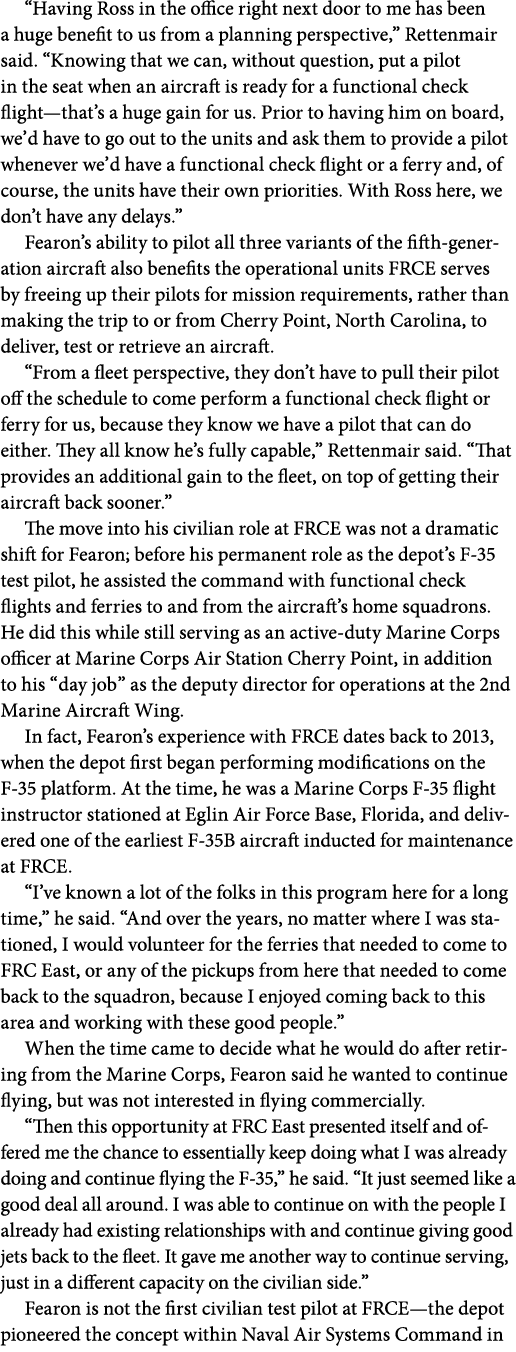






The
Mission
is the
Same
Retired Marine F-35 Pilot Finds New Way to Serve at FRCE
By Heather Wilburn
After soaring through two decades as a Marine Corps fighter pilot, Ross Fearon was not quite ready to hang up his flight suit. Instead, he embarked on a new mission after retiring from the Corps, trading combat maneuvers for flight testing on the cutting-edge F-35 Lightning II aircraft service at Fleet Readiness Center East (FRCE).
In his new role as an F-35 maintenance test pilot, Fearon ensures the nation’s warfighters receive flight-ready aircraft after they are modified or repaired at the depot.
Now, as a civilian flying the nation’s newest military fighter jet, Fearon is a member of a group that includes just a handful of individuals. And, as a civilian F-35 test pilot at a military aircraft maintenance facility, he is the sole member of a very exclusive club of one.
“It definitely still surprises me sometimes when I think, ‘Wow, I’m going to jump into a $100 million airplane today and make sure everything works properly,’” Fearon said. “And, if all goes well, I’ll jump in it again tomorrow and take it across the country to deliver it to its home station. It’s a little wild that I’m still able to do this as a civilian, and I’m fortunate to have this opportunity.”
According to FRCE F-35 Branch Head Ike Rettenmair, employing a full-time civilian pilot was an innovative concept that has resulted in reduced modification turnaround times because it removes the potential for pilot scheduling conflicts. Fearon is readily available to conduct aircraft pickups and deliveries (also known as ferries) and functional check flights, which determine whether an aircraft’s airframe, engines, accessories and equipment are functioning according to standard.
“Having Ross in the office right next door to me has been a huge benefit to us from a planning perspective,” Rettenmair said. “Knowing that we can, without question, put a pilot in the seat when an aircraft is ready for a functional check flight—that’s a huge gain for us. Prior to having him on board, we’d have to go out to the units and ask them to provide a pilot whenever we’d have a functional check flight or a ferry and, of course, the units have their own priorities. With Ross here, we don’t have any delays.”
Fearon’s ability to pilot all three variants of the fifth-generation aircraft also benefits the operational units FRCE serves by freeing up their pilots for mission requirements, rather than making the trip to or from Cherry Point, North Carolina, to deliver, test or retrieve an aircraft.
“From a fleet perspective, they don’t have to pull their pilot off the schedule to come perform a functional check flight or ferry for us, because they know we have a pilot that can do either. They all know he’s fully capable,” Rettenmair said. “That provides an additional gain to the fleet, on top of getting their aircraft back sooner.”
The move into his civilian role at FRCE was not a dramatic shift for Fearon; before his permanent role as the depot’s F-35 test pilot, he assisted the command with functional check flights and ferries to and from the aircraft’s home squadrons. He did this while still serving as an active-duty Marine Corps officer at Marine Corps Air Station Cherry Point, in addition to his “day job” as the deputy director for operations at the 2nd Marine Aircraft Wing.
In fact, Fearon’s experience with FRCE dates back to 2013, when the depot first began performing modifications on the F-35 platform. At the time, he was a Marine Corps F-35 flight instructor stationed at Eglin Air Force Base, Florida, and delivered one of the earliest F-35B aircraft inducted for maintenance at FRCE.
“I’ve known a lot of the folks in this program here for a long time,” he said. “And over the years, no matter where I was stationed, I would volunteer for the ferries that needed to come to FRC East, or any of the pickups from here that needed to come back to the squadron, because I enjoyed coming back to this area and working with these good people.”
When the time came to decide what he would do after retiring from the Marine Corps, Fearon said he wanted to continue flying, but was not interested in flying commercially.
“Then this opportunity at FRC East presented itself and offered me the chance to essentially keep doing what I was already doing and continue flying the F-35,” he said. “It just seemed like a good deal all around. I was able to continue on with the people I already had existing relationships with and continue giving good jets back to the fleet. It gave me another way to continue serving, just in a different capacity on the civilian side.”
Fearon is not the first civilian test pilot at FRCE—the depot pioneered the concept within Naval Air Systems Command in 2021 by hiring a retired Marine Corps UH-1N helicopter pilot to support its UH-1N detachment at the North Carolina Global TransPark in Kinston. The idea has proven successful in both instances, so much so that Rettenmair said he would like to see the approach spread within the broader military aviation maintenance, repair and overhaul community.
“I think the biggest gain, enterprise-wide, would be that having a civilian pilot available alleviates the fleet demand of giving up a pilot to travel, conduct a functional check flight and ferry the aircraft back home—regardless of what platform it is,” Rettenmair said. “Hopefully more organizations are able to get on board and reap the benefits as we move forward.”
After about six months in the position, Fearon said his favorite aspect of the job is his team.
“I know it sounds surprising, because everyone expects it to be the flying,” he said. “But honestly, the most rewarding aspect is seeing everyone work together to overcome the challenges we may face to get those airplanes out the door and back to the parent units—whether it’s parts availability or tight timelines for units that are needing to deploy.
“It’s a little different from the civilian side than it was on active duty, in that people don’t expect a civilian pilot to be dropping off an airplane, and it does take some folks by surprise,” he said. “But as far as getting airplanes back to the fleet squadrons, there is no difference in the mission—it’s just unique to be able to do it as a civilian. There are only a handful of us who get that opportunity.”
Growing up in a military family, Fearon knew he wanted to fly. After graduating high school in Alaska, he set off for college at the University of North Carolina at Chapel Hill, where he earned his bachelor’s degree on a Navy ROTC scholarship.
“I was always obsessed with airplanes and knew from an early age that’s what I wanted to pursue,” he said. “I was fascinated with taking off and landing on aircraft carriers, which is what drove me to pursue the Navy ROTC scholarship. You could say that for me, those two paths—aviation and military service—were always intertwined.
“Once I was in college and learned more about Marine Corps aviation—my grandfather was a career Marine artillery officer—the fact that Marine squadrons also frequently deploy shipboard basically sealed the deal,” he said. “The Marines I knew were always super squared away and seemed a cut above, so that’s what I was looking for.”
Fearon commissioned into the Marine Corps following graduation and stationed at Cherry Point after completing officer training and flight school as an AV-8B Harrier pilot.
In 2013, Fearon was among the first groups of Marine Corps pilots to transition from flying the Harrier to the F-35B. He went on to become an F-35B flight instructor and served in that role for seven years. A brief posting at Marine Corps Air Station Miramar, California, and a final tour at Cherry Point followed before he retired from service in 2024.
An early adopter of the platform, piloting the F-35 even before the Marine Corps declared initial operational capability in 2015, Fearon said he has seen the airplane mature and change quite a bit over the 12 years he has flown it.
“I’ve seen that progression occur, with all of the different software and hardware upgrades, and the capability upgrades that have come over the years,” he said. “It’s like this airplane and I have grown up together in a way.”
Fearon’s familiarity with the aircraft has proven helpful in the aircraft modification process, Rettenmair said.
“He is engaged with production and there are gains to be made just from his knowledge of the F-35 platform and his experience with it, because the aircraft is so unique,” Rettenmair said. “We absolutely value his input; he’s flown these things for 12 years, so when he can provide a pilot’s perspective after flying an aircraft, it’s valuable feedback for our artisans.”
Because of his work as both a pilot and instructor in the F-35 community, Fearon also has existing relationships with many of the Marine Corps’ F-35 pilots. That, too, has proven helpful in providing world-class service to the fleet squadrons FRCE supports, Rettenmair said.
“We have a pretty great relationship with the units that we work with, but the rapport that Ross has with them is on a different level,” Rettenmair said. “He’s speaking to the same guys he used to talk to when he was in uniform. He can go and talk to other pilots and really get an understanding of any questions or concerns they have because he speaks their language. They know him, they’ve worked with him and he is 100 percent a trusted agent—that’s invaluable in terms of supporting the fleet.”
Fearon said his familiarity with the pilots flying the aircraft serviced at FRCE makes his work even more meaningful.
“Because I was an instructor for seven years, I know most of the guys in those fleet squadrons,” he said. “I saw almost all of them come through as students at one point or another. And now I get to interact with them in a different way: ‘Hey, I’m testing your airplane, and I’m bringing it to you tomorrow.’ It’s very cool.
“It’s a great feeling to know that I’m helping keep them safe,” Fearon said. “I have confidence in the work that we do here, and to be able to provide quality airplanes back to the fleet so that they can do their work-ups, their deployments, their training cycles … it’s important. I’m happy to be part of that mission.”
FRCE is the lead site for depot-level maintenance on the F-35B Lightning II and has conducted modifications and repairs on the Marine Corps’ short takeoff and vertical landing variant of the aircraft since 2013. The depot also performs work on the F-35C carrier variant and the Air Force’s conventional takeoff and landing F-35A variant.
Heather Wilburn is a public affairs specialist with Fleet Readiness Center East. 
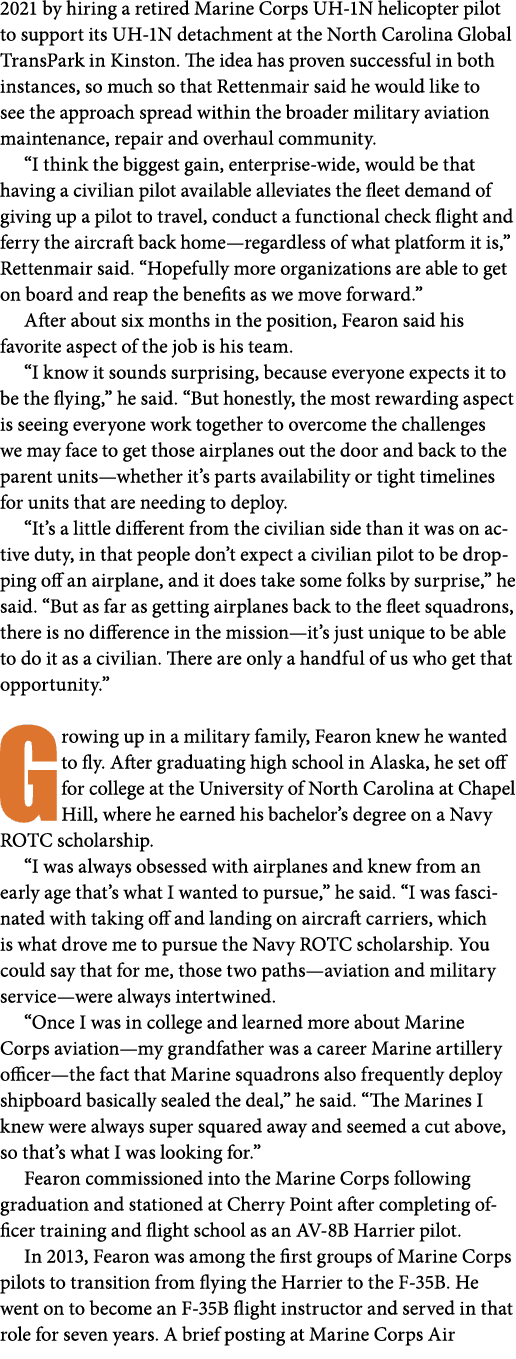
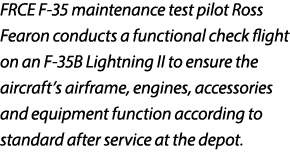
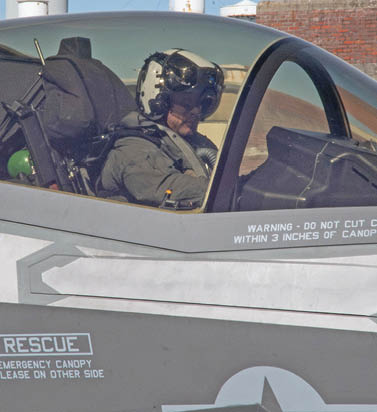

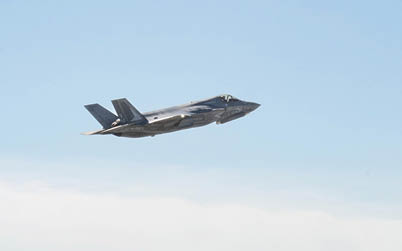




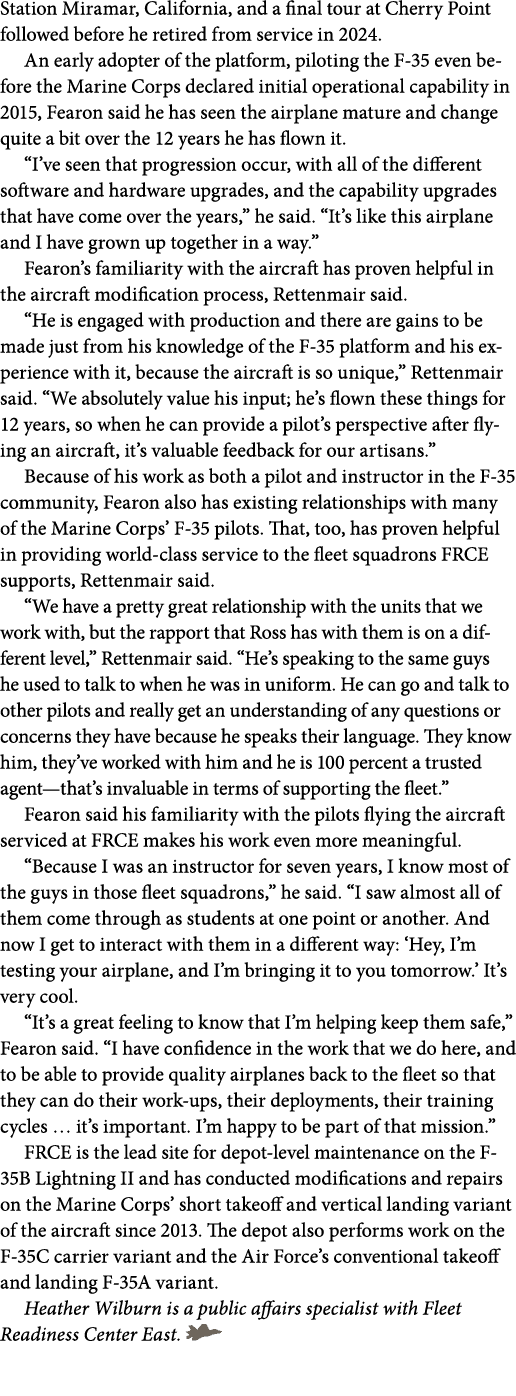










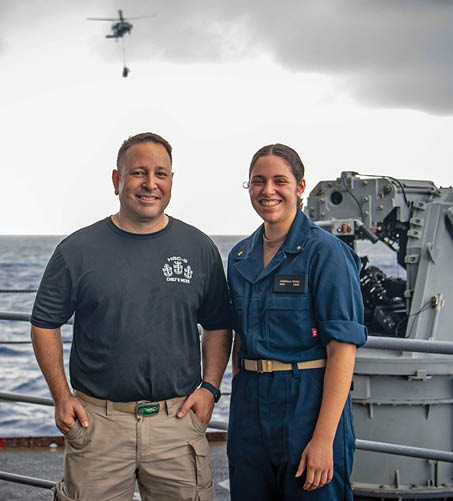



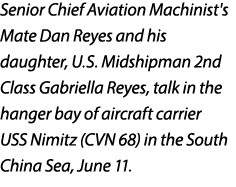
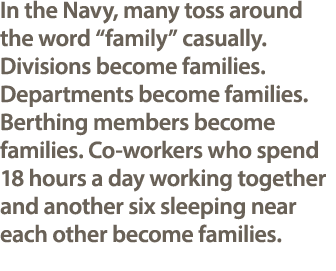
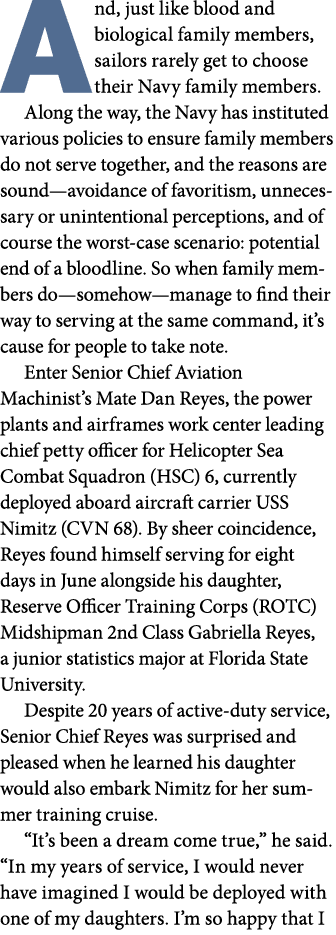


Bring Your Daughter to Work Day—Aircraft Carrier Edition
By Senior Chief Petty Officer Andrew McCord
In the Navy, many toss around the word “family” casually.Divisions become families. Departments become families. Berthing members become families. Co-workers who spend 18 hours a day working together and another six sleeping near each other become families.
And, just like blood and biological family members, sailors rarely get to choose their Navy family members.
Along the way, the Navy has instituted various policies to ensure family members do not serve together, and the reasons are sound—avoidance of favoritism, unnecessary or unintentional perceptions, and of course the worst-case scenario: potential end of a bloodline. So when family members do—somehow—manage to find their way to serving at the same command, it’s cause for people to take note.
Enter Senior Chief Aviation Machinist’s Mate Dan Reyes, the power plants and airframes work center leading chief petty officer for Helicopter Sea Combat Squadron (HSC) 6, currently deployed aboard aircraft carrier USS Nimitz (CVN 68). By sheer coincidence, Reyes found himself serving for eight days in June alongside his daughter, Reserve Officer Training Corps (ROTC) Midshipman 2nd Class Gabriella Reyes, a junior statistics major at Florida State University.
Despite 20 years of active-duty service, Senior Chief Reyes was surprised and pleased when he learned his daughter would also embark Nimitz for her summer training cruise.
“It’s been a dream come true,” he said. “In my years of service, I would never have imagined I would be deployed with one of my daughters. I’m so happy that I was able to share with her and her fellow midshipmen what we do while deployed.”
During the course of their studies—whether through ROTC or the U.S. Naval Academy—it is traditional for midshipmen to embark naval vessels during the summer to experience different Navy communities and decide what they want to do after graduation. For her part, Midshipman Reyes found her time aboard to be multifaceted.
“Coming aboard, I didn’t know what to expect,” she said. “The first few days, I felt welcomed by everyone on the ship. I wanted to come here, of course, to see my dad, but I had the goal to learn during my time here as well. Everyone I have come across has helped me with that goal, whether it be sharing their advice on leadership or explaining their roles on the ship.”
For many servicemembers, it is a cut-and-dried decision to steer their children toward the military to help them gain funds for college, acquire mortgage benefits and establish a lifestyle of service. For Senior Chief Reyes, however, this wasn’t necessarily the case, though the outcome was ultimately serendipitous.
“When [my children] graduated from high school, I asked them what they wanted to do,” he said. “I presented the choices, and they wanted to go to college. While in college, they chose Navy ROTC.”
Recognizing the military lifestyle can be difficult, Senior Chief Reyes also observed it wasn’t necessarily a surprise Midshipman Reyes and her twin sister—also a midshipman—chose the Navy path.
“All they know of me is being a sailor,” he said, noting his daughters were born after he had joined the Navy. “It’s an honor knowing that my daughters are following my footsteps in the Navy, and they’ll be continuing the defense of freedom and democracy.”
Midshipman Reyes echoed her father’s sentiments, and added his service and experiences caused her to want that for herself.
“My dad’s service has most definitely impacted my life,” she said. “Growing up, all I knew was being a military child which, of course, meant moving around a lot. Along with that, I got to see how his time in the Navy has shaped him as a person. I was inspired by that and wanted to see that change in myself.”
She also noted her leadership style was, in a sense, inspired by witnessing her father’s experiences while moving through the ranks.
“Both in and outside of the Navy, he has been a guiding force that I learn from,” she said. “Through his experiences, I was able to gain insight on the different leadership styles and from that choose how I want to lead.”
Though their paths may not be the same—enlisting versus commissioning—Senior Chief Reyes sees similarities in their choices.
“I don’t feel it’s a different path—it’s a path I’ve taken of serving honorably in the Navy and our country,” he said. “Whether enlisted or commissioned, everyone should serve and give back in the best capacity possible, and [my daughters] understood that.”
In less than two weeks aboard, the father/daughter duo ran the gamut of naval at-sea experiences, from observing flight deck operations, working—and sweating—together during a replenishment-at-sea, visiting the Chief’s Mess for words of wisdom, sharing multiple shipboard meals and viewing the maintenance movement evolutions.
Successful? Probably.
Insightful? Definitely.
“Hearing about [life and work at sea] is different than experiencing it,” said Midshipman Reyes. “While aboard, I got to experience what it’s like to live in a berthing and eat at the mess. I’m still missing out on the long hours of hard work, but I can recognize from the sailors around the ship that it is intense and demanding.”
Her time aboard also gave her a better understanding and appreciation of how her father came to be the way he is.
“Seeing [him in this element] has put the picture together in seeing how hard he works,” she said. “I do see both his roles as a senior chief and as a father meshing together. He deals tough love but always wants the best, and that’s what he works towards.”
Senior Chief Petty Officer Andrew McCord serves aboard USS Nimitz
(CVN 68). 




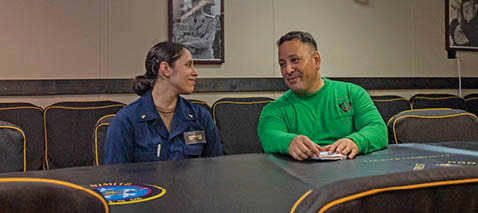
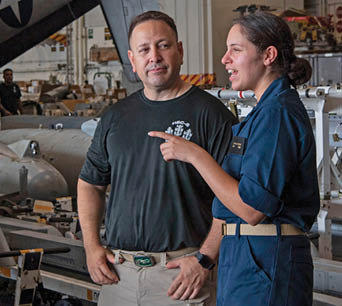




Bring Your Daughter to Work Day—Aircraft Carrier Edition
By Senior Chief Petty Officer Andrew McCord
In the Navy, many toss around the word “family” casually.Divisions become families. Departments become families. Berthing members become families. Co-workers who spend 18 hours a day working together and another six sleeping near each other become families.
And, just like blood and biological family members, sailors rarely get to choose their Navy family members.
Along the way, the Navy has instituted various policies to ensure family members do not serve together, and the reasons are sound—avoidance of favoritism, unnecessary or unintentional perceptions, and of course the worst-case scenario: potential end of a bloodline. So when family members do—somehow—manage to find their way to serving at the same command, it’s cause for people to take note.
Enter Senior Chief Aviation Machinist’s Mate Dan Reyes, the power plants and airframes work center leading chief petty officer for Helicopter Sea Combat Squadron (HSC) 6, currently deployed aboard aircraft carrier USS Nimitz (CVN 68). By sheer coincidence, Reyes found himself serving for eight days in June alongside his daughter, Reserve Officer Training Corps (ROTC) Midshipman 2nd Class Gabriella Reyes, a junior statistics major at Florida State University.
Despite 20 years of active-duty service, Senior Chief Reyes was surprised and pleased when he learned his daughter would also embark Nimitz for her summer training cruise.
“It’s been a dream come true,” he said. “In my years of service, I would never have imagined I would be deployed with one of my daughters. I’m so happy that I was able to share with her and her fellow midshipmen what we do while deployed.”
During the course of their studies—whether through ROTC or the U.S. Naval Academy—it is traditional for midshipmen to embark naval vessels during the summer to experience different Navy communities and decide what they want to do after graduation. For her part, Midshipman Reyes found her time aboard to be multifaceted.
“Coming aboard, I didn’t know what to expect,” she said. “The first few days, I felt welcomed by everyone on the ship. I wanted to come here, of course, to see my dad, but I had the goal to learn during my time here as well. Everyone I have come across has helped me with that goal, whether it be sharing their advice on leadership or explaining their roles on the ship.”
For many servicemembers, it is a cut-and-dried decision to steer their children toward the military to help them gain funds for college, acquire mortgage benefits and establish a lifestyle of service. For Senior Chief Reyes, however, this wasn’t necessarily the case, though the outcome was ultimately serendipitous.
“When [my children] graduated from high school, I asked them what they wanted to do,” he said. “I presented the choices, and they wanted to go to college. While in college, they chose Navy ROTC.”
Recognizing the military lifestyle can be difficult, Senior Chief Reyes also observed it wasn’t necessarily a surprise Midshipman Reyes and her twin sister—also a midshipman—chose the Navy path.
“All they know of me is being a sailor,” he said, noting his daughters were born after he had joined the Navy. “It’s an honor knowing that my daughters are following my footsteps in the Navy, and they’ll be continuing the defense of freedom and democracy.”
Midshipman Reyes echoed her father’s sentiments, and added his service and experiences caused her to want that for herself.
“My dad’s service has most definitely impacted my life,” she said. “Growing up, all I knew was being a military child which, of course, meant moving around a lot. Along with that, I got to see how his time in the Navy has shaped him as a person. I was inspired by that and wanted to see that change in myself.”
She also noted her leadership style was, in a sense, inspired by witnessing her father’s experiences while moving through the ranks.
“Both in and outside of the Navy, he has been a guiding force that I learn from,” she said. “Through his experiences, I was able to gain insight on the different leadership styles and from that choose how I want to lead.”
Though their paths may not be the same—enlisting versus commissioning—Senior Chief Reyes sees similarities in their choices.
“I don’t feel it’s a different path—it’s a path I’ve taken of serving honorably in the Navy and our country,” he said. “Whether enlisted or commissioned, everyone should serve and give back in the best capacity possible, and [my daughters] understood that.”
In less than two weeks aboard, the father/daughter duo ran the gamut of naval at-sea experiences, from observing flight deck operations, working—and sweating—together during a replenishment-at-sea, visiting the Chief’s Mess for words of wisdom, sharing multiple shipboard meals and viewing the maintenance movement evolutions.
Successful? Probably.
Insightful? Definitely.
“Hearing about [life and work at sea] is different than experiencing it,” said Midshipman Reyes. “While aboard, I got to experience what it’s like to live in a berthing and eat at the mess. I’m still missing out on the long hours of hard work, but I can recognize from the sailors around the ship that it is intense and demanding.”
Her time aboard also gave her a better understanding and appreciation of how her father came to be the way he is.
“Seeing [him in this element] has put the picture together in seeing how hard he works,” she said. “I do see both his roles as a senior chief and as a father meshing together. He deals tough love but always wants the best, and that’s what he works towards.”
Senior Chief Petty Officer Andrew McCord serves aboard USS Nimitz
(CVN 68). 





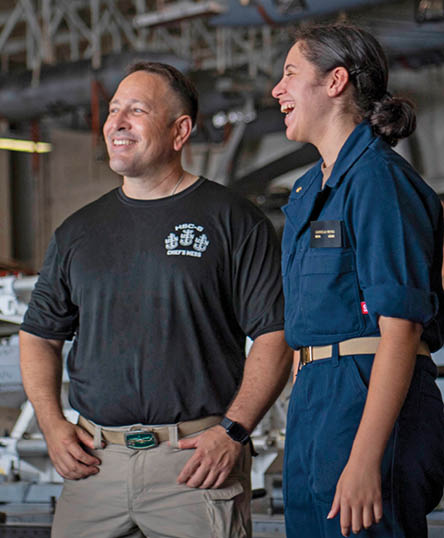
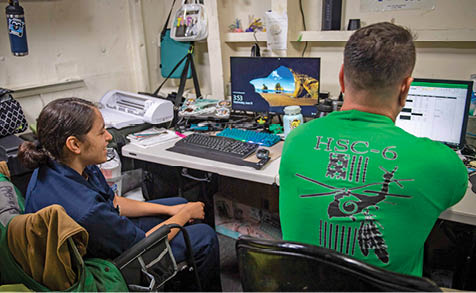
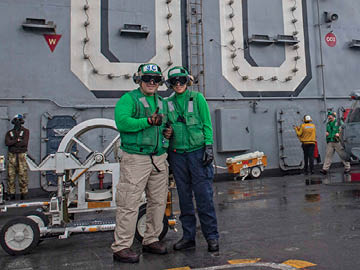











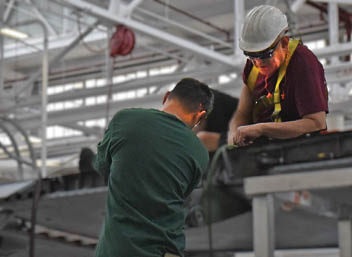



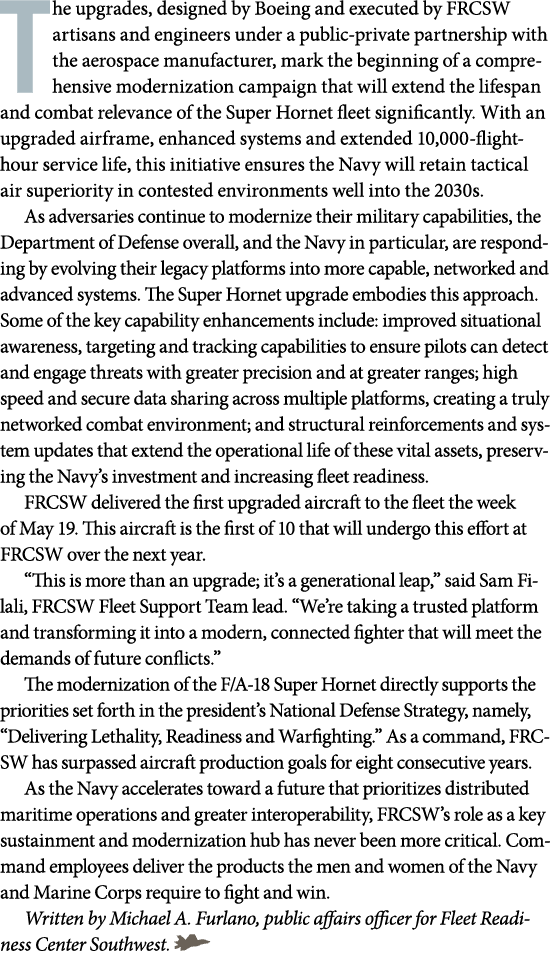

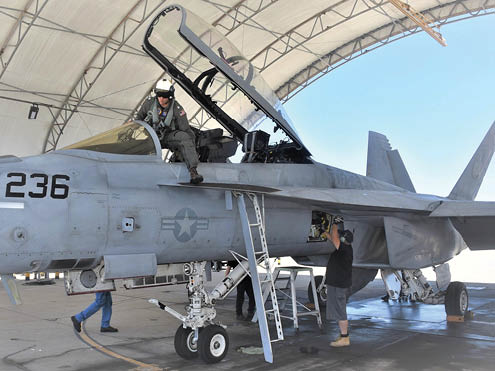


FRCSW Begins
F/A-18 Super Hornet Modernization Upgrades
In a landmark achievement that aligns directly with the 2025 National Defense Strategy’s call for a modernized and lethal Joint Force, Fleet Readiness Center Southwest (FRCSW) has adopted a transformative approach to upgrading the F/A-18 Super Hornet, a critical milestone in continuous capability enhancements.
The upgrades, designed by Boeing and executed by FRCSW artisans and engineers under a public-private partnership with the aerospace manufacturer, mark the beginning of a comprehensive modernization campaign that will extend the lifespan and combat relevance of the Super Hornet fleet significantly. With an upgraded airframe, enhanced systems and extended 10,000-flight-hour service life, this initiative ensures the Navy will retain tactical air superiority in contested environments well into the 2030s.
As adversaries continue to modernize their military capabilities, the Department of Defense overall, and the Navy in particular, are responding by evolving their legacy platforms into more capable, networked and advanced systems. The Super Hornet upgrade embodies this approach. Some of the key capability enhancements include: improved situational awareness, targeting and tracking capabilities to ensure pilots can detect and engage threats with greater precision and at greater ranges; high speed and secure data sharing across multiple platforms, creating a truly networked combat environment; and structural reinforcements and system updates that extend the operational life of these vital assets, preserving the Navy’s investment and increasing fleet readiness.
FRCSW delivered the first upgraded aircraft to the fleet the week of May 19. This aircraft is the first of 10 that will undergo this effort at FRCSW over the next year.
“This is more than an upgrade; it’s a generational leap,” said Sam Filali, FRCSW Fleet Support Team lead. “We’re taking a trusted platform and transforming it into a modern, connected fighter that will meet the demands of future conflicts.”
The modernization of the F/A-18 Super Hornet directly supports the priorities set forth in the president’s National Defense Strategy, namely, “Delivering Lethality, Readiness and Warfighting.” As a command, FRCSW has surpassed aircraft production goals for eight consecutive years.
As the Navy accelerates toward a future that prioritizes distributed maritime operations and greater interoperability, FRCSW’s role as a key sustainment and modernization hub has never been more critical. Command employees deliver the products the men and women of the Navy and Marine Corps require to fight and win.
Written by Michael A. Furlano, public affairs officer for Fleet Readiness Center Southwest. 


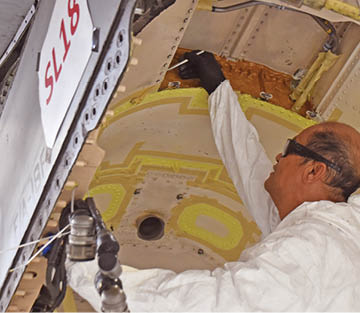
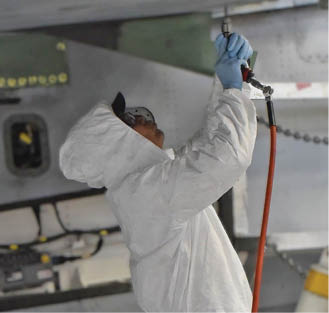








FRCSW Begins
F/A-18 Super Hornet Modernization Upgrades
In a landmark achievement that aligns directly with the 2025 National Defense Strategy’s call for a modernized and lethal Joint Force, Fleet Readiness Center Southwest (FRCSW) has adopted a transformative approach to upgrading the F/A-18 Super Hornet, a critical milestone in continuous capability enhancements.
The upgrades, designed by Boeing and executed by FRCSW artisans and engineers under a public-private partnership with the aerospace manufacturer, mark the beginning of a comprehensive modernization campaign that will extend the lifespan and combat relevance of the Super Hornet fleet significantly. With an upgraded airframe, enhanced systems and extended 10,000-flight-hour service life, this initiative ensures the Navy will retain tactical air superiority in contested environments well into the 2030s.
As adversaries continue to modernize their military capabilities, the Department of Defense overall, and the Navy in particular, are responding by evolving their legacy platforms into more capable, networked and advanced systems. The Super Hornet upgrade embodies this approach. Some of the key capability enhancements include: improved situational awareness, targeting and tracking capabilities to ensure pilots can detect and engage threats with greater precision and at greater ranges; high speed and secure data sharing across multiple platforms, creating a truly networked combat environment; and structural reinforcements and system updates that extend the operational life of these vital assets, preserving the Navy’s investment and increasing fleet readiness.
FRCSW delivered the first upgraded aircraft to the fleet the week of May 19. This aircraft is the first of 10 that will undergo this effort at FRCSW over the next year.
“This is more than an upgrade; it’s a generational leap,” said Sam Filali, FRCSW Fleet Support Team lead. “We’re taking a trusted platform and transforming it into a modern, connected fighter that will meet the demands of future conflicts.”
The modernization of the F/A-18 Super Hornet directly supports the priorities set forth in the president’s National Defense Strategy, namely, “Delivering Lethality, Readiness and Warfighting.” As a command, FRCSW has surpassed aircraft production goals for eight consecutive years.
As the Navy accelerates toward a future that prioritizes distributed maritime operations and greater interoperability, FRCSW’s role as a key sustainment and modernization hub has never been more critical. Command employees deliver the products the men and women of the Navy and Marine Corps require to fight and win.
Written by Michael A. Furlano, public affairs officer for Fleet Readiness Center Southwest. 


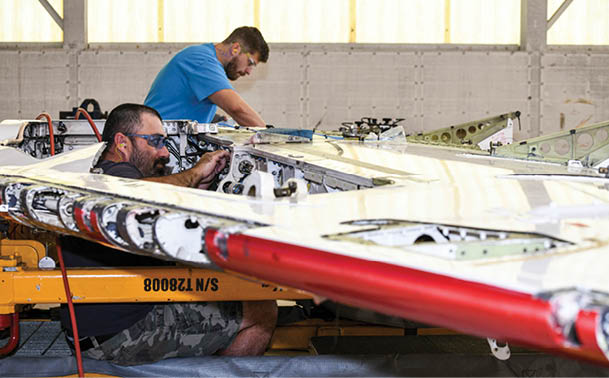



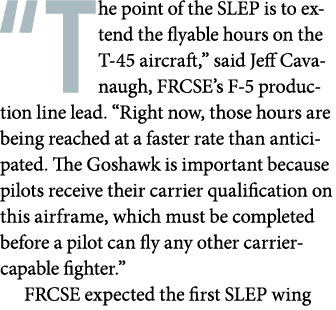
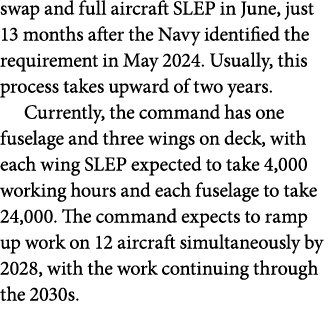
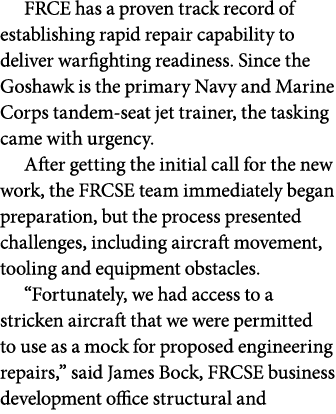


FRCSE Establishes New T-45 Repair Capability
Fleet Readiness Center Southeast (FRCSE) stood up a repair capability November 2024 for a T-45 Goshawk service life extension program (SLEP) production line supporting the Naval Undergraduate Flight Training Systems Program Office.
“The point of the SLEP is to extend the flyable hours on the T-45 aircraft,” said Jeff Cavanaugh, FRCSE’s F-5 production line lead. “Right now, those hours are being reached at a faster rate than anticipated. The Goshawk is important because pilots receive their carrier qualification on this airframe, which must be completed before a pilot can fly any other carrier-capable fighter.”
FRCSE expected the first SLEP wing swap and full aircraft SLEP in June, just 13 months after the Navy identified the requirement in May 2024. Usually, this process takes upward of two years.
Currently, the command has one fuselage and three wings on deck, with each wing SLEP expected to take 4,000 working hours and each fuselage to take 24,000. The command expects to ramp up work on 12 aircraft simultaneously by 2028, with the work continuing through the 2030s.
FRCE has a proven track record of establishing rapid repair capability to deliver warfighting readiness. Since the Goshawk is the primary Navy and Marine Corps tandem-seat jet trainer, the tasking came with urgency.
After getting the initial call for the new work, the FRCSE team immediately began preparation, but the process presented challenges, including aircraft movement, tooling and equipment obstacles.
“Fortunately, we had access to a stricken aircraft that we were permitted to use as a mock for proposed engineering repairs,” said James Bock, FRCSE business development office structural and mechanical component lead. “However, we needed to make the aircraft mobile to transport it on public roads to our facility, which involved many logistical challenges. It was vital because having the fuselage onsite allowed us to create shoring that made concurrent work possible.”
Further, while FRCSE artisans use standard customary units for their tooling, the T-45 was built using metric measurements.
“Outside of moving the aircraft from Cecil Field, the first challenge was identifying the type of tooling we needed,” Cavanaugh said. “We’ve created metric kits to use while we build up our comprehensive toolboxes.”
Understanding the challenges, tight timeline and complexity of the SLEP tasking, the team divided the initial depot capability (IDC) into phases.
“To provide the most positive impact back to the fleet, we came up with an incremental approach,” Bock said. “During phase one, or IDC, we trucked in three wings and performed SLEP on all three to get ahead of the process. With a backlog of wings, it’s easier to transition to IDC phase two, which allows aircraft to fly into FRCSE and swap their wings with ones that have already undergone SLEP. Finally, we have full depot capability, where we will see aircraft getting the full scope of SLEP work.”
To perform most of the work on the T-45 wing, the command had to obtain a flip jig, a piece of equipment that allows the artisans to work on the wing’s underside. The jig turns over, or flips, the approximately 2,000-pound wing so artisans can make repairs safely and ergonomically.
“The majority of the work on the wing is done on the bottom, so being able to acquire the flip jig, or the device we use to flip the wing, was vital so that artisans don’t have to conduct this work over their heads or upside-down,” Cavanaugh said.
“Our T-45 team’s ability to urgently answer the Navy’s call without compromising quality is a testament to their commitment and expertise,” said Capt. Mike Windom, FRCSE commanding officer. “This accomplishment highlights not only their resolve, but also FRCSE’s commitment to getting capability into the hands of warfighters faster.” 

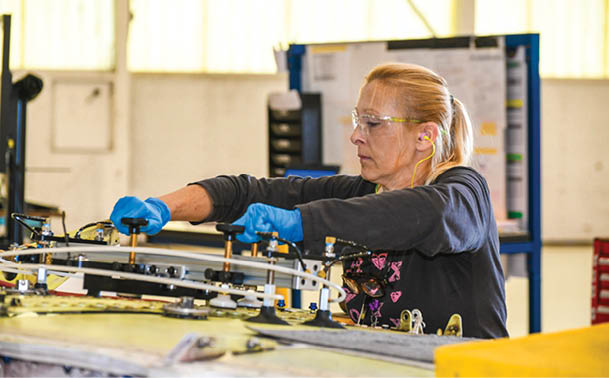





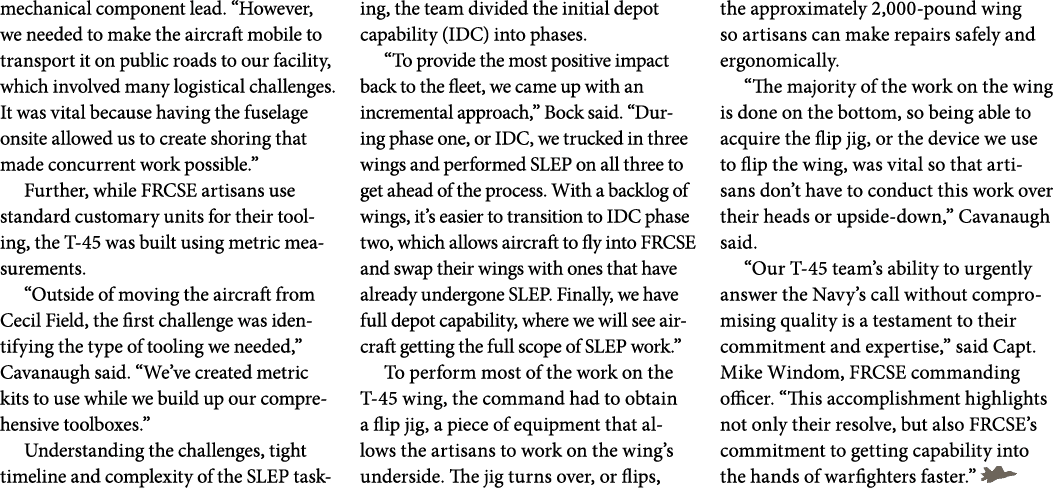


FRCSE Establishes New T-45 Repair Capability
Fleet Readiness Center Southeast (FRCSE) stood up a repair capability November 2024 for a T-45 Goshawk service life extension program (SLEP) production line supporting the Naval Undergraduate Flight Training Systems Program Office.
“The point of the SLEP is to extend the flyable hours on the T-45 aircraft,” said Jeff Cavanaugh, FRCSE’s F-5 production line lead. “Right now, those hours are being reached at a faster rate than anticipated. The Goshawk is important because pilots receive their carrier qualification on this airframe, which must be completed before a pilot can fly any other carrier-capable fighter.”
FRCSE expected the first SLEP wing swap and full aircraft SLEP in June, just 13 months after the Navy identified the requirement in May 2024. Usually, this process takes upward of two years.
Currently, the command has one fuselage and three wings on deck, with each wing SLEP expected to take 4,000 working hours and each fuselage to take 24,000. The command expects to ramp up work on 12 aircraft simultaneously by 2028, with the work continuing through the 2030s.
FRCE has a proven track record of establishing rapid repair capability to deliver warfighting readiness. Since the Goshawk is the primary Navy and Marine Corps tandem-seat jet trainer, the tasking came with urgency.
After getting the initial call for the new work, the FRCSE team immediately began preparation, but the process presented challenges, including aircraft movement, tooling and equipment obstacles.
“Fortunately, we had access to a stricken aircraft that we were permitted to use as a mock for proposed engineering repairs,” said James Bock, FRCSE business development office structural and mechanical component lead. “However, we needed to make the aircraft mobile to transport it on public roads to our facility, which involved many logistical challenges. It was vital because having the fuselage onsite allowed us to create shoring that made concurrent work possible.”
Further, while FRCSE artisans use standard customary units for their tooling, the T-45 was built using metric measurements.
“Outside of moving the aircraft from Cecil Field, the first challenge was identifying the type of tooling we needed,” Cavanaugh said. “We’ve created metric kits to use while we build up our comprehensive toolboxes.”
Understanding the challenges, tight timeline and complexity of the SLEP tasking, the team divided the initial depot capability (IDC) into phases.
“To provide the most positive impact back to the fleet, we came up with an incremental approach,” Bock said. “During phase one, or IDC, we trucked in three wings and performed SLEP on all three to get ahead of the process. With a backlog of wings, it’s easier to transition to IDC phase two, which allows aircraft to fly into FRCSE and swap their wings with ones that have already undergone SLEP. Finally, we have full depot capability, where we will see aircraft getting the full scope of SLEP work.”
To perform most of the work on the T-45 wing, the command had to obtain a flip jig, a piece of equipment that allows the artisans to work on the wing’s underside. The jig turns over, or flips, the approximately 2,000-pound wing so artisans can make repairs safely and ergonomically.
“The majority of the work on the wing is done on the bottom, so being able to acquire the flip jig, or the device we use to flip the wing, was vital so that artisans don’t have to conduct this work over their heads or upside-down,” Cavanaugh said.
“Our T-45 team’s ability to urgently answer the Navy’s call without compromising quality is a testament to their commitment and expertise,” said Capt. Mike Windom, FRCSE commanding officer. “This accomplishment highlights not only their resolve, but also FRCSE’s commitment to getting capability into the hands of warfighters faster.” 




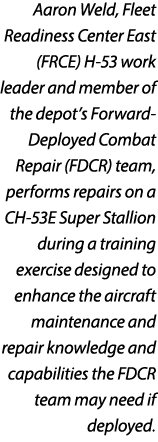
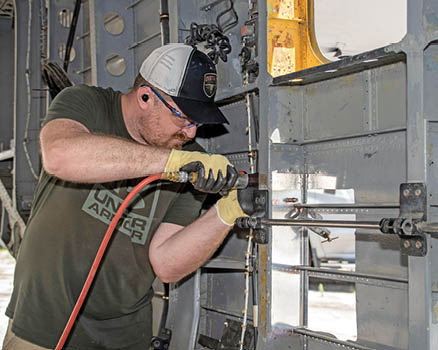

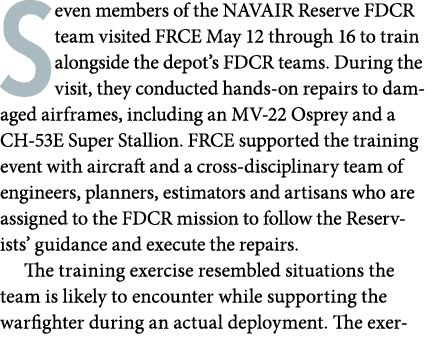
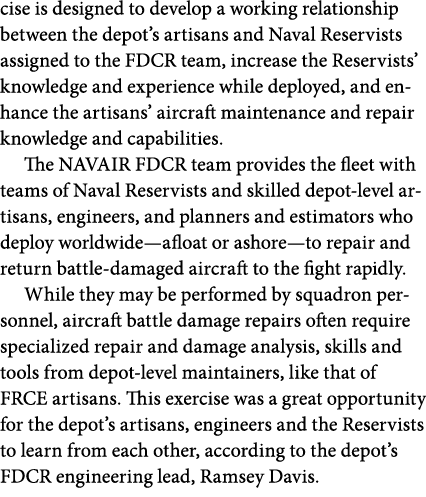


FRCE Hosts Navy Reservists for Readiness Training
Fleet Readiness Center East (FRCE) recently hosted a training exercise designed to sharpen the skills of a Naval Air Systems Command (NAVAIR) Forward-Deployed Combat Repair (FDCR) team that travels to deployed and combat locations and repairs battle-damaged military aircraft.
Seven members of the NAVAIR Reserve FDCR team visited FRCE May 12 through 16 to train alongside the depot’s FDCR teams. During the visit, they conducted hands-on repairs to damaged airframes, including an MV-22 Osprey and a CH-53E Super Stallion. FRCE supported the training event with aircraft and a cross-disciplinary team of engineers, planners, estimators and artisans who are assigned to the FDCR mission to follow the Reservists’ guidance and execute the repairs.
The training exercise resembled situations the team is likely to encounter while supporting the warfighter during an actual deployment. The exercise is designed to develop a working relationship between the depot’s artisans and Naval Reservists assigned to the FDCR team, increase the Reservists’ knowledge and experience while deployed, and enhance the artisans’ aircraft maintenance and repair knowledge and capabilities.
The NAVAIR FDCR team provides the fleet with teams of Naval Reservists and skilled depot-level artisans, engineers, and planners and estimators who deploy worldwide—afloat or ashore—to repair and return battle-damaged aircraft to the fight rapidly.
While they may be performed by squadron personnel, aircraft battle damage repairs often require specialized repair and damage analysis, skills and tools from depot-level maintainers, like that of FRCE artisans. This exercise was a great opportunity for the depot’s artisans, engineers and the Reservists to learn from each other, according to the depot’s FDCR engineering lead, Ramsey Davis.
“The FCDR Team may not know what they are fixing until they get there—that’s why this training is so beneficial,” Davis said. “They’ll get there and must complete the necessary repairs in a foreign environment with limited resources and tools.”
During deployment, the Reservists act as a liaison between the active-duty service members who need aircraft battle damage support and the depot-level engineers and artisans who deploy to complete the repairs. Lt. Matthew Hill, a Reservist on NAVAIR’s FDCR Team, said the exercise gave the Reservists practice overcoming potential obstacles that may arise while deployed.
“The Reserve FDCR instructor developed the scenario, adding in last-minute things that could go wrong while deployed,” Hill said. “The sailors had to figure out how to adapt to them and guide the artisans in what they should be doing. This scenario also gave the sailors experience working with the civilians, which is something they don’t normally do. It’s helpful because these artisans are the ones coming with them if they’re deployed, so developing that relationship is important to mission success.”
Cmdr. Joseph Stewart, a reservist on the NAVAIR FDCR team, served as the training lead in the scenario and said exercises like this one are essential to maintaining fleet readiness.
“If there’s a conflict and they need more depot-level support in that theater, we all go,” Stewart said. “The officers and senior enlisted are training their people to get out there, remove any barriers, so FRC artisans can do depot-level work outside of their regular depot spaces.
“This fleet training exercise was the best forward-deployed combat repair training to date,” Stewart said. “We created an excellent, repeatable training scenario that allowed the team to effectively develop and install 10 safe structural repairs on two aircraft within a three-day timeframe. It was a huge success, and FRC East was instrumental in the success of this specialized training.” 







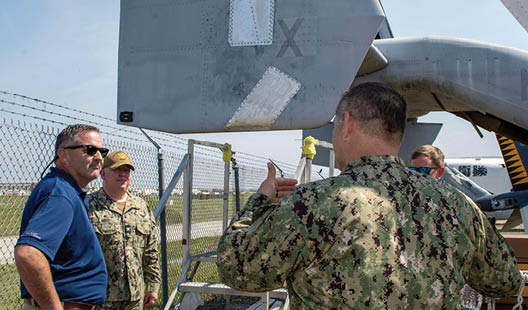

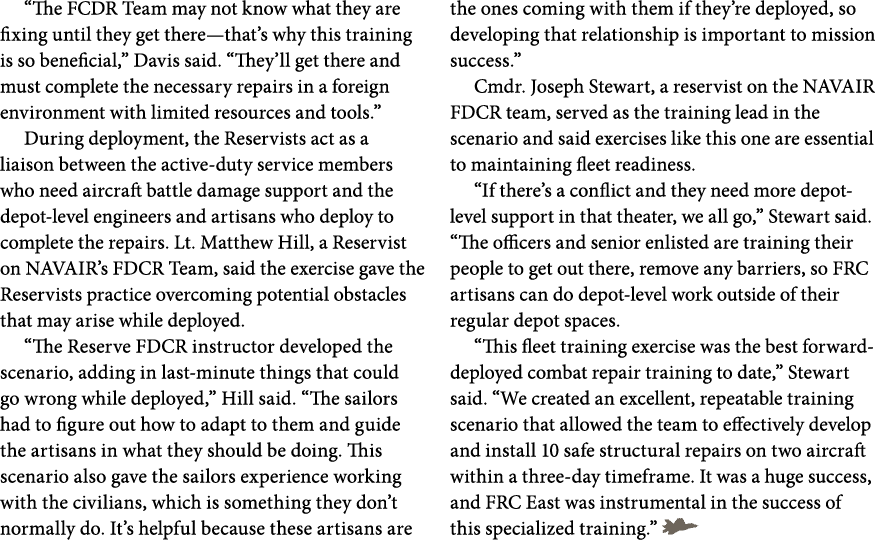


FRCE Hosts Navy Reservists for Readiness Training
Fleet Readiness Center East (FRCE) recently hosted a training exercise designed to sharpen the skills of a Naval Air Systems Command (NAVAIR) Forward-Deployed Combat Repair (FDCR) team that travels to deployed and combat locations and repairs battle-damaged military aircraft.
Seven members of the NAVAIR Reserve FDCR team visited FRCE May 12 through 16 to train alongside the depot’s FDCR teams. During the visit, they conducted hands-on repairs to damaged airframes, including an MV-22 Osprey and a CH-53E Super Stallion. FRCE supported the training event with aircraft and a cross-disciplinary team of engineers, planners, estimators and artisans who are assigned to the FDCR mission to follow the Reservists’ guidance and execute the repairs.
The training exercise resembled situations the team is likely to encounter while supporting the warfighter during an actual deployment. The exercise is designed to develop a working relationship between the depot’s artisans and Naval Reservists assigned to the FDCR team, increase the Reservists’ knowledge and experience while deployed, and enhance the artisans’ aircraft maintenance and repair knowledge and capabilities.
The NAVAIR FDCR team provides the fleet with teams of Naval Reservists and skilled depot-level artisans, engineers, and planners and estimators who deploy worldwide—afloat or ashore—to repair and return battle-damaged aircraft to the fight rapidly.
While they may be performed by squadron personnel, aircraft battle damage repairs often require specialized repair and damage analysis, skills and tools from depot-level maintainers, like that of FRCE artisans. This exercise was a great opportunity for the depot’s artisans, engineers and the Reservists to learn from each other, according to the depot’s FDCR engineering lead, Ramsey Davis.
“The FCDR Team may not know what they are fixing until they get there—that’s why this training is so beneficial,” Davis said. “They’ll get there and must complete the necessary repairs in a foreign environment with limited resources and tools.”
During deployment, the Reservists act as a liaison between the active-duty service members who need aircraft battle damage support and the depot-level engineers and artisans who deploy to complete the repairs. Lt. Matthew Hill, a Reservist on NAVAIR’s FDCR Team, said the exercise gave the Reservists practice overcoming potential obstacles that may arise while deployed.
“The Reserve FDCR instructor developed the scenario, adding in last-minute things that could go wrong while deployed,” Hill said. “The sailors had to figure out how to adapt to them and guide the artisans in what they should be doing. This scenario also gave the sailors experience working with the civilians, which is something they don’t normally do. It’s helpful because these artisans are the ones coming with them if they’re deployed, so developing that relationship is important to mission success.”
Cmdr. Joseph Stewart, a reservist on the NAVAIR FDCR team, served as the training lead in the scenario and said exercises like this one are essential to maintaining fleet readiness.
“If there’s a conflict and they need more depot-level support in that theater, we all go,” Stewart said. “The officers and senior enlisted are training their people to get out there, remove any barriers, so FRC artisans can do depot-level work outside of their regular depot spaces.
“This fleet training exercise was the best forward-deployed combat repair training to date,” Stewart said. “We created an excellent, repeatable training scenario that allowed the team to effectively develop and install 10 safe structural repairs on two aircraft within a three-day timeframe. It was a huge success, and FRC East was instrumental in the success of this specialized training.” 




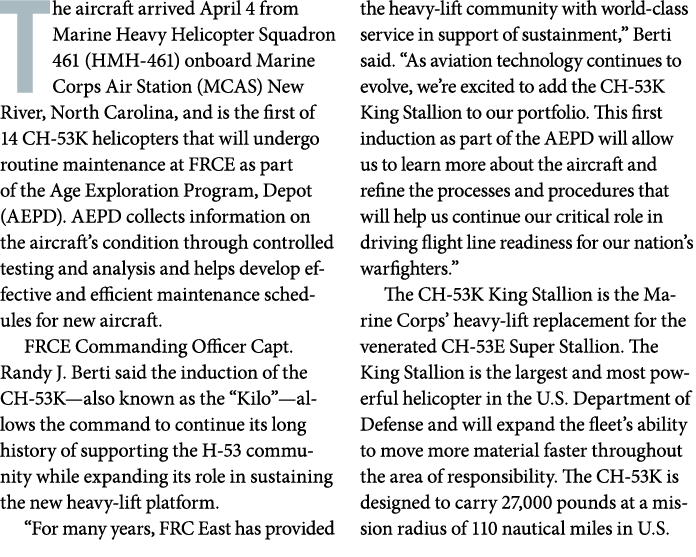

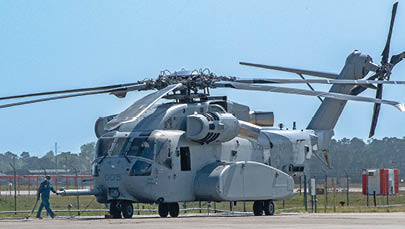



FRCE Inducts First CH-53K King Stallion for Maintenance
Fleet Readiness Center East (FRCE) began a new chapter in its support of Naval Aviation’s heavy-lift mission with the induction of a CH-53K King Stallion April 17, marking the first time the platform has been inducted for depot-level maintenance.
The aircraft arrived April 4 from Marine Heavy Helicopter Squadron 461 (HMH-461) onboard Marine Corps Air Station (MCAS) New River, North Carolina, and is the first of 14 CH-53K helicopters that will undergo routine maintenance at FRCE as part of the Age Exploration Program, Depot (AEPD). AEPD collects information on the aircraft’s condition through controlled testing and analysis and helps develop effective and efficient maintenance schedules for new aircraft.
FRCE Commanding Officer Capt. Randy J. Berti said the induction of the CH-53K—also known as the “Kilo”—allows the command to continue its long history of supporting the H-53 community while expanding its role in sustaining the new heavy-lift platform.
“For many years, FRC East has provided the heavy-lift community with world-class service in support of sustainment,” Berti said. “As aviation technology continues to evolve, we’re excited to add the CH-53K King Stallion to our portfolio. This first induction as part of the AEPD will allow us to learn more about the aircraft and refine the processes and procedures that will help us continue our critical role in driving flight line readiness for our nation’s warfighters.”
The CH-53K King Stallion is the Marine Corps’ heavy-lift replacement for the venerated CH-53E Super Stallion. The King Stallion is the largest and most powerful helicopter in the U.S. Department of Defense and will expand the fleet’s ability to move more material faster throughout the area of responsibility. The CH-53K is designed to carry 27,000 pounds at a mission radius of 110 nautical miles in U.S. Navy high/hot environments, which is almost triple the baseline of the CH-53E. Its maximum external lift capability is 36,000 pounds. It is also designed to have a smaller shipboard footprint, lower operating costs per aircraft and fewer direct maintenance man hours per flight hour.
The AEPD induction arrives after years of coordination between FRCE, the Fleet Support Team, the Naval Air Systems Command H-53 Heavy Lift Helicopters Program Office and the Marines who fly the Kilo.
“This first CH-53K induction into depot maintenance signifies the maturation of the platform and the readiness of our sustainment enterprise,” said Assistant Program Manager for Logistics Lt. Col. Matthew Russell. “The exceptional collaboration between [the program office], FRC East, Marine Aircraft Group 29 and the Fleet Support Team, which began over three years ago, has established a foundation for long-term support of the King Stallion’s heavy-lift capability.”
FRCE H-53 Branch Head Michael Paul said the arrival of the CH-53K in many ways represents a new horizon—both for the rotary-wing program at the depot and for the fleet.
“Simply put, it’s our future. The legacy platform, the CH-53E, has been there for 40-plus years and it’s slowly being phased out,” he said. “The MH-53E, the last few are in the plant right now—we have four left—and then that will be the end of our planned maintenance for the MH community, the Navy version of the aircraft. The CH variant flown by the Marine Corps is shrinking its footprint here, with just about five inductions per year.
“And so the future, not only for FRC East but also for the fleet, is the K-model program. It’s the newest generation helicopter out there, and so that means that this is the future for the next 20, 30 or 40 years, for the product team here.”
Jeff Warren, CH-53K capability establishment lead at FRCE, said the Kilo’s arrival at the depot also represents the future of the platform’s sustainment schedule. The 14 inductions under AEPD will help determine the aircraft’s planned maintenance interval (PMI) schedule, which is a period of time prescribed to execute a maintenance event.
“This aircraft’s induction corresponds with a specific number of flight hours, which has been set as a mark on the wall,” he said. “It will be inspected to see if there’s any major structural damage, along with the 13 more behind it. Their condition is going to dictate whether future aircraft PMI events need to happen at this number of flight hours or, if we’re not seeing any major structural issues or overall fatigue of the aircraft, whether the PMI event can be bumped out by an additional number of flight hours. It’s setting a precedent of what the future schedule will look like for depot-level maintenance.”
Warren said the depot’s findings during AEPD will have implications that stretch down to all levels of maintenance, from the heavy maintenance, repair and overhaul at the depot level (D-level) to the maintenance performed at the organizational level (O-level) by the squadrons flying the aircraft, and to the intermediate level (I-level) performed by the maintenance and logistics squadrons in between.
“The squadron’s already doing those O-level maintenance actions, but during AEPD, we’re performing O-level and I-level maintenance in conjunction with the depot level. We’re verifying processes and procedures,” Warren said. “This allows us to critique and refine the O- and I-level technical data, to red-line it, effectively, and then develop the depot-level tech data to assist with future depot requirements, because FRC East is the first ever to conduct depot-level maintenance on the CH-53K.”
Paul said his team on the H-53 line will perform approximately 800 inspections on the aircraft to assess its condition properly, a process that will take almost half of the planned AEPD cycle time.
“We developed a generic template for the inspect and repair phase using the CH-53E and MH-53 as a starting point, assuming the work on the Kilo will be like and similar,” Paul said. “However, this is the first time any K-model aircraft will be disassembled and inspected at this level, and there are differences. It’s computer-based, sensor-based, fly-by-wire, with more composite.
“We have some ideas of what we’re going to find, but there are going to be some areas we’re looking into that nobody has inspected before. We are physically putting our eyes on everything: framing, composite, flight controls, every wiring harness, all the wiring … everything has to be looked at,” Paul said. “We’re going to conduct these 800-plus inspections, gather the details of any discrepancies we find, correct those we know how to correct and refer to engineering for solutions [to] the ones we don’t have any knowledge of. Based on their solutions, we will implement those changes to correct those discrepancies. There are a lot of unknowns going in, but it’s an exciting time for the group here.”
Current labor estimates for the AEPD process are based on the PMI process for the CH-53E and MH-53E and only include work on the airframe itself, not the components that will eventually be routed to back shops once those capabilities are established. Until then, the team will remove components from the aircraft, visually assess them and exchange new components if replacement is required.
According to Warren, the depot plans to stand up its first batch of CH-53K component capabilities with the first engine capability established in early fall. All told, FRCE plans to establish capability on approximately 150 components and dynamic components for the Kilo.
The second CH-53K scheduled for AEPD induction should arrive at FRCE in late 2026, with the next two following within fiscal year 2027. FRCE will remain the only depot source of repair for the CH-53K until FRC Southwest on Naval Air Station North Island, California, establishes its King Stallion airframes capabilities, which is planned for the early 2030s, he said.
Heather Wilburn is a public affairs specialist with Fleet Readiness Center East. 







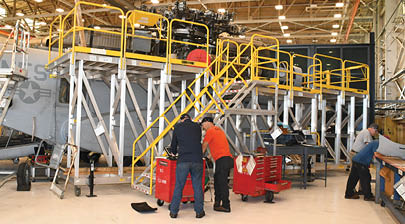


FRCE Inducts First CH-53K King Stallion for Maintenance
Fleet Readiness Center East (FRCE) began a new chapter in its support of Naval Aviation’s heavy-lift mission with the induction of a CH-53K King Stallion April 17, marking the first time the platform has been inducted for depot-level maintenance.
The aircraft arrived April 4 from Marine Heavy Helicopter Squadron 461 (HMH-461) onboard Marine Corps Air Station (MCAS) New River, North Carolina, and is the first of 14 CH-53K helicopters that will undergo routine maintenance at FRCE as part of the Age Exploration Program, Depot (AEPD). AEPD collects information on the aircraft’s condition through controlled testing and analysis and helps develop effective and efficient maintenance schedules for new aircraft.
FRCE Commanding Officer Capt. Randy J. Berti said the induction of the CH-53K—also known as the “Kilo”—allows the command to continue its long history of supporting the H-53 community while expanding its role in sustaining the new heavy-lift platform.
“For many years, FRC East has provided the heavy-lift community with world-class service in support of sustainment,” Berti said. “As aviation technology continues to evolve, we’re excited to add the CH-53K King Stallion to our portfolio. This first induction as part of the AEPD will allow us to learn more about the aircraft and refine the processes and procedures that will help us continue our critical role in driving flight line readiness for our nation’s warfighters.”
The CH-53K King Stallion is the Marine Corps’ heavy-lift replacement for the venerated CH-53E Super Stallion. The King Stallion is the largest and most powerful helicopter in the U.S. Department of Defense and will expand the fleet’s ability to move more material faster throughout the area of responsibility. The CH-53K is designed to carry 27,000 pounds at a mission radius of 110 nautical miles in U.S. Navy high/hot environments, which is almost triple the baseline of the CH-53E. Its maximum external lift capability is 36,000 pounds. It is also designed to have a smaller shipboard footprint, lower operating costs per aircraft and fewer direct maintenance man hours per flight hour.
The AEPD induction arrives after years of coordination between FRCE, the Fleet Support Team, the Naval Air Systems Command H-53 Heavy Lift Helicopters Program Office and the Marines who fly the Kilo.
“This first CH-53K induction into depot maintenance signifies the maturation of the platform and the readiness of our sustainment enterprise,” said Assistant Program Manager for Logistics Lt. Col. Matthew Russell. “The exceptional collaboration between [the program office], FRC East, Marine Aircraft Group 29 and the Fleet Support Team, which began over three years ago, has established a foundation for long-term support of the King Stallion’s heavy-lift capability.”
FRCE H-53 Branch Head Michael Paul said the arrival of the CH-53K in many ways represents a new horizon—both for the rotary-wing program at the depot and for the fleet.
“Simply put, it’s our future. The legacy platform, the CH-53E, has been there for 40-plus years and it’s slowly being phased out,” he said. “The MH-53E, the last few are in the plant right now—we have four left—and then that will be the end of our planned maintenance for the MH community, the Navy version of the aircraft. The CH variant flown by the Marine Corps is shrinking its footprint here, with just about five inductions per year.
“And so the future, not only for FRC East but also for the fleet, is the K-model program. It’s the newest generation helicopter out there, and so that means that this is the future for the next 20, 30 or 40 years, for the product team here.”
Jeff Warren, CH-53K capability establishment lead at FRCE, said the Kilo’s arrival at the depot also represents the future of the platform’s sustainment schedule. The 14 inductions under AEPD will help determine the aircraft’s planned maintenance interval (PMI) schedule, which is a period of time prescribed to execute a maintenance event.
“This aircraft’s induction corresponds with a specific number of flight hours, which has been set as a mark on the wall,” he said. “It will be inspected to see if there’s any major structural damage, along with the 13 more behind it. Their condition is going to dictate whether future aircraft PMI events need to happen at this number of flight hours or, if we’re not seeing any major structural issues or overall fatigue of the aircraft, whether the PMI event can be bumped out by an additional number of flight hours. It’s setting a precedent of what the future schedule will look like for depot-level maintenance.”
Warren said the depot’s findings during AEPD will have implications that stretch down to all levels of maintenance, from the heavy maintenance, repair and overhaul at the depot level (D-level) to the maintenance performed at the organizational level (O-level) by the squadrons flying the aircraft, and to the intermediate level (I-level) performed by the maintenance and logistics squadrons in between.
“The squadron’s already doing those O-level maintenance actions, but during AEPD, we’re performing O-level and I-level maintenance in conjunction with the depot level. We’re verifying processes and procedures,” Warren said. “This allows us to critique and refine the O- and I-level technical data, to red-line it, effectively, and then develop the depot-level tech data to assist with future depot requirements, because FRC East is the first ever to conduct depot-level maintenance on the CH-53K.”
Paul said his team on the H-53 line will perform approximately 800 inspections on the aircraft to assess its condition properly, a process that will take almost half of the planned AEPD cycle time.
“We developed a generic template for the inspect and repair phase using the CH-53E and MH-53 as a starting point, assuming the work on the Kilo will be like and similar,” Paul said. “However, this is the first time any K-model aircraft will be disassembled and inspected at this level, and there are differences. It’s computer-based, sensor-based, fly-by-wire, with more composite.
“We have some ideas of what we’re going to find, but there are going to be some areas we’re looking into that nobody has inspected before. We are physically putting our eyes on everything: framing, composite, flight controls, every wiring harness, all the wiring … everything has to be looked at,” Paul said. “We’re going to conduct these 800-plus inspections, gather the details of any discrepancies we find, correct those we know how to correct and refer to engineering for solutions [to] the ones we don’t have any knowledge of. Based on their solutions, we will implement those changes to correct those discrepancies. There are a lot of unknowns going in, but it’s an exciting time for the group here.”
Current labor estimates for the AEPD process are based on the PMI process for the CH-53E and MH-53E and only include work on the airframe itself, not the components that will eventually be routed to back shops once those capabilities are established. Until then, the team will remove components from the aircraft, visually assess them and exchange new components if replacement is required.
According to Warren, the depot plans to stand up its first batch of CH-53K component capabilities with the first engine capability established in early fall. All told, FRCE plans to establish capability on approximately 150 components and dynamic components for the Kilo.
The second CH-53K scheduled for AEPD induction should arrive at FRCE in late 2026, with the next two following within fiscal year 2027. FRCE will remain the only depot source of repair for the CH-53K until FRC Southwest on Naval Air Station North Island, California, establishes its King Stallion airframes capabilities, which is planned for the early 2030s, he said.
Heather Wilburn is a public affairs specialist with Fleet Readiness Center East. 


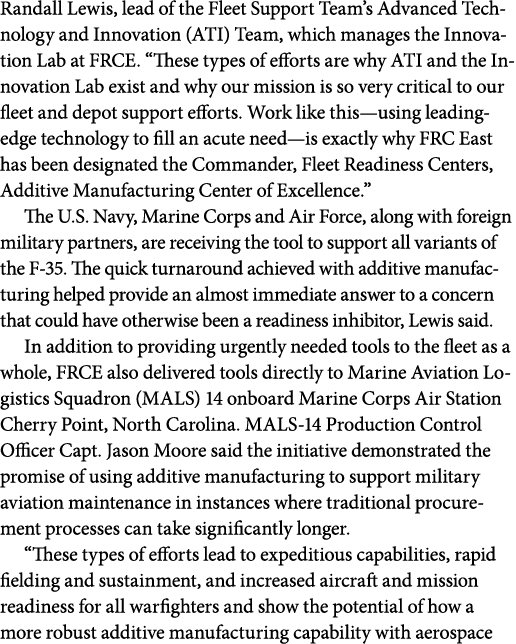
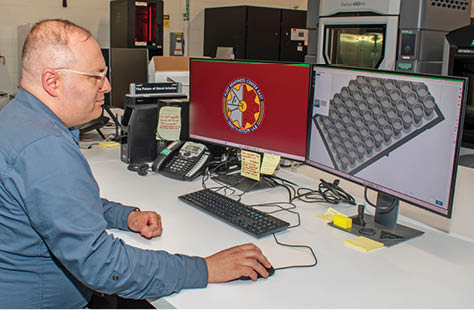


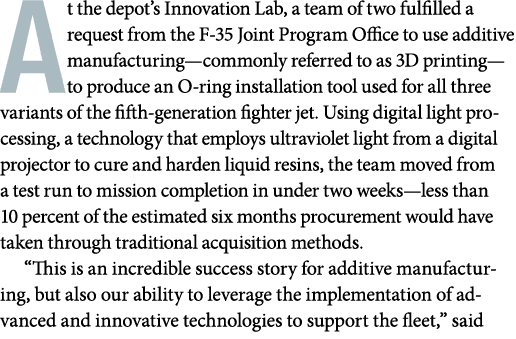


FRCE Innovation Lab Manufactures Quick Win
for F-35 Fleet
When a critical need for new tooling arose for the F-35 Lightning II combat aircraft, innovative thinking and forward-leaning technology at Fleet Readiness Center East (FRCE) helped fill the gap and put 2,000 tools in aircraft maintainers’ hands within days.
At the depot’s Innovation Lab, a team of two fulfilled a request from the F-35 Joint Program Office to use additive manufacturing—commonly referred to as 3D printing—to produce an O-ring installation tool used for all three variants of the fifth-generation fighter jet. Using digital light processing, a technology that employs ultraviolet light from a digital projector to cure and harden liquid resins, the team moved from a test run to mission completion in under two weeks—less than 10 percent of the estimated six months procurement would have taken through traditional acquisition methods.
“This is an incredible success story for additive manufacturing, but also our ability to leverage the implementation of advanced and innovative technologies to support the fleet,” said Randall Lewis, lead of the Fleet Support Team’s Advanced Technology and Innovation (ATI) Team, which manages the Innovation Lab at FRCE. “These types of efforts are why ATI and the Innovation Lab exist and why our mission is so very critical to our fleet and depot support efforts. Work like this—using leading-edge technology to fill an acute need—is exactly why FRC East has been designated the Commander, Fleet Readiness Centers, Additive Manufacturing Center of Excellence.”
The U.S. Navy, Marine Corps and Air Force, along with foreign military partners, are receiving the tool to support all variants of the F-35. The quick turnaround achieved with additive manufacturing helped provide an almost immediate answer to a concern that could have otherwise been a readiness inhibitor, Lewis said.
In addition to providing urgently needed tools to the fleet as a whole, FRCE also delivered tools directly to Marine Aviation Logistics Squadron (MALS) 14 onboard Marine Corps Air Station Cherry Point, North Carolina. MALS-14 Production Control Officer Capt. Jason Moore said the initiative demonstrated the promise of using additive manufacturing to support military aviation maintenance in instances where traditional procurement processes can take significantly longer.
“These types of efforts lead to expeditious capabilities, rapid fielding and sustainment, and increased aircraft and mission readiness for all warfighters and show the potential of how a more robust additive manufacturing capability with aerospace applications can continue to benefit the service,” Moore said. “This is a win-win for FRCE and the end users.”
Innovation Lab Lead Engineer Jeremy Bunting said when the initial request came in from the F-35 Joint Program Office, he and lab technician Ken Murphy began working immediately to fulfill the order; the first step was determining which of the lab’s additive manufacturing technologies offered the most cost- and time-efficient solution. Bunting said an examination of the tool’s configuration and application suggested it could be a good use case for digital light processing. The team produced an initial batch of 20 tools, and then the local F-35 Lightning Support Team at FRCE and the F-35 Joint Program Office began evaluating the product.
After the initial assessment, the team slightly modified the tool’s design, and the Lightning Support Team completed analysis and testing to confirm the printer’s resin medium would be chemical resistant and suitable for use in the tool’s intended environment. Now, it was time to print.
Traditional polymer additive manufacturing machines—what most people envision when they think of 3D printing, Bunting said—use melted plastic filament and lay that filament down into a pattern. The machine works one layer at a time, one part at a time. With digital light processing, however, the machine can cure an entire layer at once, whether there is one part or 20 on the build plate.
“With the traditional machines, if I have a part that takes two hours to build, then three of those parts takes six hours,” Bunting said. “With the digital light processing, I did a batch of 20 and it took an hour and 15 minutes; then I did a batch of 60, which was as many as would fit on the plate, and that also took an hour and 15 minutes. That makes it extremely scalable.”
Bunting said the single order of 2,000 parts almost matched the Innovation Lab’s entire output for fiscal year 2024, in terms of raw quantities; however, using cutting-edge technology to meet fleet needs is standard procedure at the Innovation Lab.
“This job was unusual because of the quantity, but the Innovation Lab does jobs like this every day,” he said. “The Innovation Lab exists to be quick-turn and solve problems, to be very agile with additive manufacturing. So, this job was unique in terms of the quantity and how we were able to leverage this newer technology, but in terms of our day-to-day business, it was just what we do.”
Demonstrating the ability to produce a product quickly and on a large scale successfully helps support the advancement of additive manufacturing as a routine solution within military aviation maintenance, repair and overhaul.
“Projects like this positively impact Naval Aviation’s capability, readiness and lethality by broadening the use of additive manufacturing as a capability in our maintenance activities,” said Robert Lessel, chief engineer and Fleet Support Teams senior executive at Commander, Fleet Readiness Centers.
“Wins like the manufacture of this O-ring installation tool produce meaningful outcomes for the fleet as we deliver aircraft material readiness faster at more affordable costs,” Lessel said. “The work is a powerful example of tackling a fleet problem with expertise and urgency. It’s all about warfighting and supporting our warfighters.”
Since its inception in 2020, the Innovation Lab has taken great strides to develop additive manufacturing as a capability that can be scaled up and used to address a variety of things. The goal is to continue applying additive manufacturing as a solution until it becomes as commonplace as traditional manufacturing is today, Bunting said.
“We already do a lot of local manufacturing at FRC East, with machining and sheet metal, and our additive manufacturing team has been working very closely with our production artisans to get them trained on this equipment,” he explained. “We want to be able to productionize additive manufacturing so we can quote it and work it just like any other job.
“My catch line is that we’re trying to make additive manufacturing ‘boring,’” Bunting continued. “It’s exciting and new right now, but I would like it to become much more routine—where additive manufacturing is just another thing an artisan works on as part of their job.” 







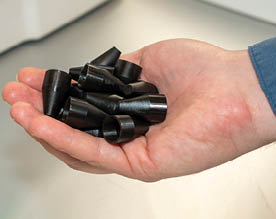



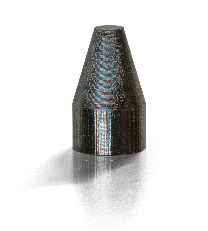


FRCE Innovation Lab Manufactures Quick Win
for F-35 Fleet
When a critical need for new tooling arose for the F-35 Lightning II combat aircraft, innovative thinking and forward-leaning technology at Fleet Readiness Center East (FRCE) helped fill the gap and put 2,000 tools in aircraft maintainers’ hands within days.
At the depot’s Innovation Lab, a team of two fulfilled a request from the F-35 Joint Program Office to use additive manufacturing—commonly referred to as 3D printing—to produce an O-ring installation tool used for all three variants of the fifth-generation fighter jet. Using digital light processing, a technology that employs ultraviolet light from a digital projector to cure and harden liquid resins, the team moved from a test run to mission completion in under two weeks—less than 10 percent of the estimated six months procurement would have taken through traditional acquisition methods.
“This is an incredible success story for additive manufacturing, but also our ability to leverage the implementation of advanced and innovative technologies to support the fleet,” said Randall Lewis, lead of the Fleet Support Team’s Advanced Technology and Innovation (ATI) Team, which manages the Innovation Lab at FRCE. “These types of efforts are why ATI and the Innovation Lab exist and why our mission is so very critical to our fleet and depot support efforts. Work like this—using leading-edge technology to fill an acute need—is exactly why FRC East has been designated the Commander, Fleet Readiness Centers, Additive Manufacturing Center of Excellence.”
The U.S. Navy, Marine Corps and Air Force, along with foreign military partners, are receiving the tool to support all variants of the F-35. The quick turnaround achieved with additive manufacturing helped provide an almost immediate answer to a concern that could have otherwise been a readiness inhibitor, Lewis said.
In addition to providing urgently needed tools to the fleet as a whole, FRCE also delivered tools directly to Marine Aviation Logistics Squadron (MALS) 14 onboard Marine Corps Air Station Cherry Point, North Carolina. MALS-14 Production Control Officer Capt. Jason Moore said the initiative demonstrated the promise of using additive manufacturing to support military aviation maintenance in instances where traditional procurement processes can take significantly longer.
“These types of efforts lead to expeditious capabilities, rapid fielding and sustainment, and increased aircraft and mission readiness for all warfighters and show the potential of how a more robust additive manufacturing capability with aerospace applications can continue to benefit the service,” Moore said. “This is a win-win for FRCE and the end users.”
Innovation Lab Lead Engineer Jeremy Bunting said when the initial request came in from the F-35 Joint Program Office, he and lab technician Ken Murphy began working immediately to fulfill the order; the first step was determining which of the lab’s additive manufacturing technologies offered the most cost- and time-efficient solution. Bunting said an examination of the tool’s configuration and application suggested it could be a good use case for digital light processing. The team produced an initial batch of 20 tools, and then the local F-35 Lightning Support Team at FRCE and the F-35 Joint Program Office began evaluating the product.
After the initial assessment, the team slightly modified the tool’s design, and the Lightning Support Team completed analysis and testing to confirm the printer’s resin medium would be chemical resistant and suitable for use in the tool’s intended environment. Now, it was time to print.
Traditional polymer additive manufacturing machines—what most people envision when they think of 3D printing, Bunting said—use melted plastic filament and lay that filament down into a pattern. The machine works one layer at a time, one part at a time. With digital light processing, however, the machine can cure an entire layer at once, whether there is one part or 20 on the build plate.
“With the traditional machines, if I have a part that takes two hours to build, then three of those parts takes six hours,” Bunting said. “With the digital light processing, I did a batch of 20 and it took an hour and 15 minutes; then I did a batch of 60, which was as many as would fit on the plate, and that also took an hour and 15 minutes. That makes it extremely scalable.”
Bunting said the single order of 2,000 parts almost matched the Innovation Lab’s entire output for fiscal year 2024, in terms of raw quantities; however, using cutting-edge technology to meet fleet needs is standard procedure at the Innovation Lab.
“This job was unusual because of the quantity, but the Innovation Lab does jobs like this every day,” he said. “The Innovation Lab exists to be quick-turn and solve problems, to be very agile with additive manufacturing. So, this job was unique in terms of the quantity and how we were able to leverage this newer technology, but in terms of our day-to-day business, it was just what we do.”
Demonstrating the ability to produce a product quickly and on a large scale successfully helps support the advancement of additive manufacturing as a routine solution within military aviation maintenance, repair and overhaul.
“Projects like this positively impact Naval Aviation’s capability, readiness and lethality by broadening the use of additive manufacturing as a capability in our maintenance activities,” said Robert Lessel, chief engineer and Fleet Support Teams senior executive at Commander, Fleet Readiness Centers.
“Wins like the manufacture of this O-ring installation tool produce meaningful outcomes for the fleet as we deliver aircraft material readiness faster at more affordable costs,” Lessel said. “The work is a powerful example of tackling a fleet problem with expertise and urgency. It’s all about warfighting and supporting our warfighters.”
Since its inception in 2020, the Innovation Lab has taken great strides to develop additive manufacturing as a capability that can be scaled up and used to address a variety of things. The goal is to continue applying additive manufacturing as a solution until it becomes as commonplace as traditional manufacturing is today, Bunting said.
“We already do a lot of local manufacturing at FRC East, with machining and sheet metal, and our additive manufacturing team has been working very closely with our production artisans to get them trained on this equipment,” he explained. “We want to be able to productionize additive manufacturing so we can quote it and work it just like any other job.
“My catch line is that we’re trying to make additive manufacturing ‘boring,’” Bunting continued. “It’s exciting and new right now, but I would like it to become much more routine—where additive manufacturing is just another thing an artisan works on as part of their job.” 




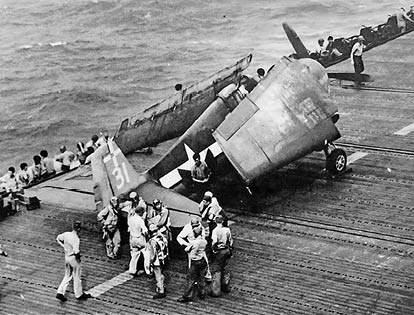

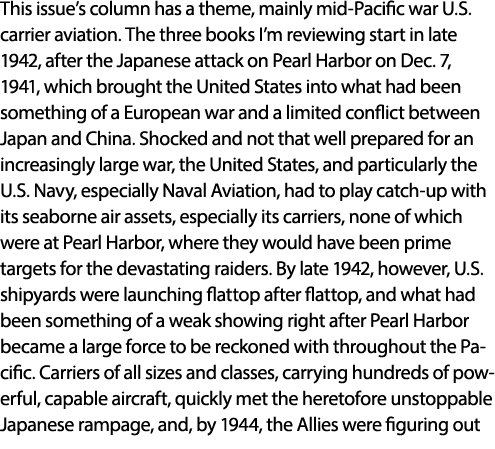




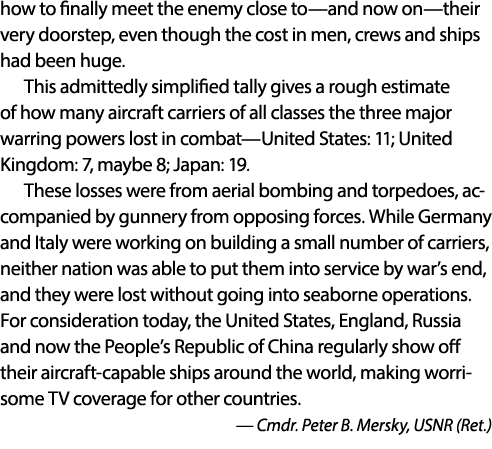
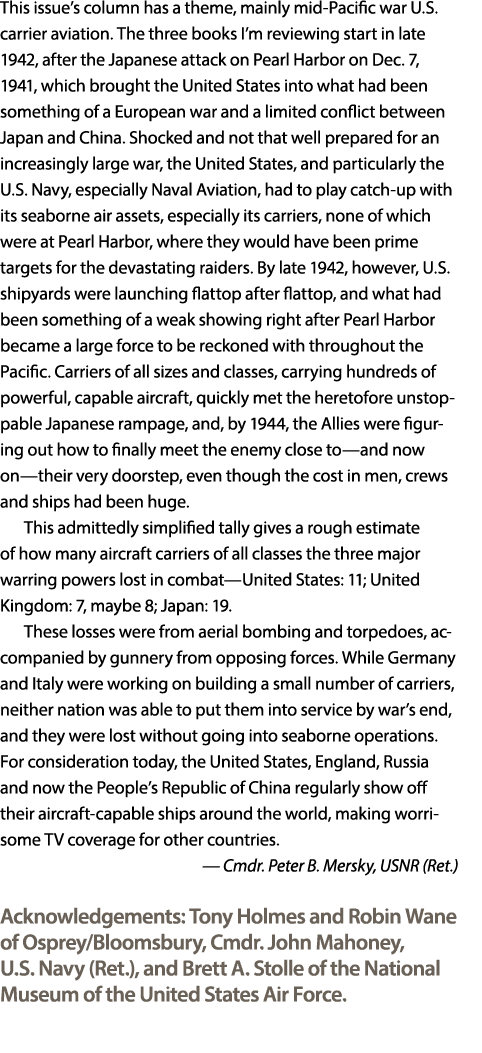


This issue’s column has a theme, mainly mid-Pacific war U.S. carrier aviation. The three books I’m reviewing start in late 1942, after the Japanese attack on Pearl Harbor on Dec. 7, 1941, which brought the United States into what had been something of a European war and a limited conflict between Japan and China. Shocked and not that well prepared for an increasingly large war, the United States, and particularly the U.S. Navy, especially Naval Aviation, had to play catch-up with its seaborne air assets, especially its carriers, none of which were at Pearl Harbor, where they would have been prime targets for the devastating raiders. By late 1942, however, U.S. shipyards were launching flattop after flattop, and what had been something of a weak showing right after Pearl Harbor became a large force to be reckoned with throughout the Pacific. Carriers of all sizes and classes, carrying hundreds of powerful, capable aircraft, quickly met the heretofore unstoppable Japanese rampage, and, by 1944, the Allies were figuring out how to finally meet the enemy close to—and now on—their very doorstep, even though the cost in men, crews and ships had been huge.
This admittedly simplified tally gives a rough estimate of how many aircraft carriers of all classes the three major warring powers lost in combat—United States: 11; United Kingdom: 7, maybe 8; Japan: 19.
These losses were from aerial bombing and torpedoes, accompanied by gunnery from opposing forces. While Germany and Italy were working on building a small number of carriers, neither nation was able to put them into service by war’s end, and they were lost without going into seaborne operations. For consideration today, the United States, England, Russia and now the People’s Republic of China regularly show off their aircraft-capable ships around the world, making worrisome TV coverage for other countries.
— Cmdr. Peter B. Mersky, USNR (Ret.)
Acknowledgements: Tony Holmes and Robin Wane of Osprey/Bloomsbury, Cmdr. John Mahoney, U.S. Navy (Ret.), and Brett A. Stolle of the National Museum of the United States Air Force.
Intrepid’s Fighting Squadron 18: Flying High with Harris’ Hellcats
By Mike Fink, Naval Institute Press, Annapolis, MD. 2024. 267 pp. Ill.
This book contains a highly detailed account of the high-scoring Grumman F6F-3 Hellcat squadron that flew from the light carrier USS Intrepid (CV 11) from 1943 to 1945. The subtitle refers to the score of 22 kills by Lt. Cecil E. Harris, with one more gained while flying the Hellcat’s predecessor, the F4F-4 Wildcat, while flying with Fighter Squadron (VF) 27—a squadron that by war’s end became the sixth highest-scoring Navy squadron with 176.5 kills. Harris became the second highest-scoring ace with 23 overall kills in the second VF-18 (in Hellcats). Indeed, the second VF-18 produced 13 aces during its short deployment in 1944.
The book remains a fairly well-written story that adds to the increasing number of full-length accounts of heretofore missing histories of this period of the Navy’s air war. The pivotal Battle of Leyte Gulf (Oct. 24-25, 1944) includes perhaps the greatest series of sea engagements of the war, if not of history, and is well covered in the detailed, enthusiastic descriptions of VF-18’s involvement.
Workups aboard escort carrier USS Nassau (CVE 16) include details of many pilots, flight crews and ship’s company assigned to its air wing.
On page 156, the author misidentifies a Japanese “Dinah” reconnaissance aircraft engaged by a VF-18 Combat Air Patrol (CAP) of F6F Hellcats, when its identity was actually a rather new, seldom-encountered P1Y Ginga, codenamed “Francis.” There are, however, several other references on all Japanese aircraft of the war—one even appears in the book’s bibliography.
Nevertheless, the account of the Battle of the Philippine Sea (June 1944) and the aerial free-for-all, called “The Great Marianas Turkey Shoot,” on June 19, 1944, add a lot to the overall story, as does the aerial action in Chapter 6 and the missions over the now-Republic of China (Taiwan), depending on which sources are consulted. Admittedly, the lack of a now-commonly accepted name can be confusing. 






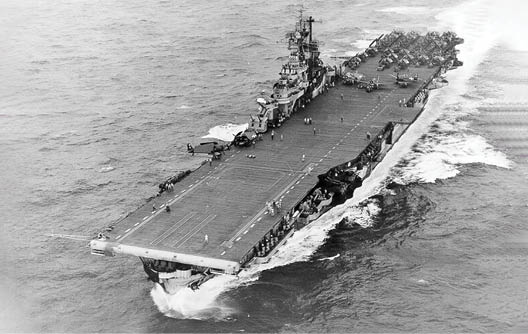



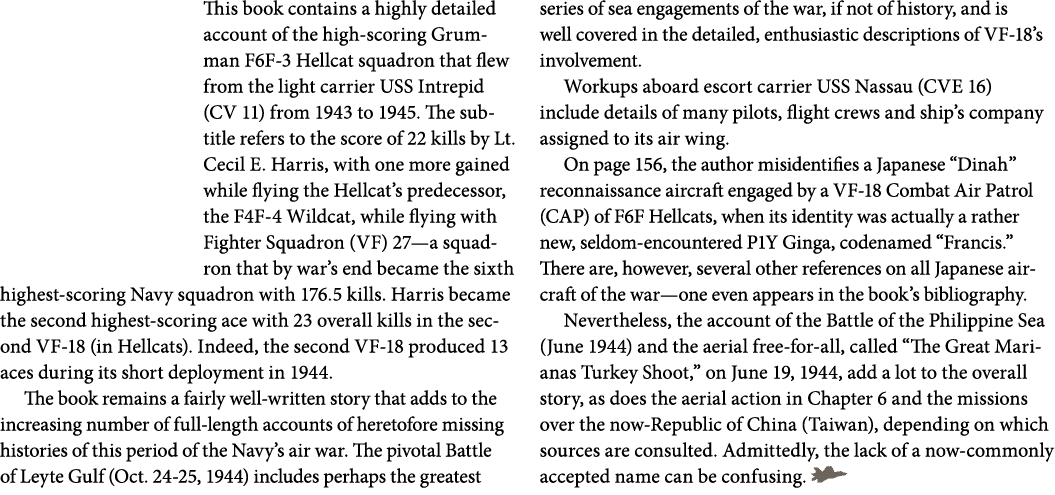


This issue’s column has a theme, mainly mid-Pacific war U.S. carrier aviation. The three books I’m reviewing start in late 1942, after the Japanese attack on Pearl Harbor on Dec. 7, 1941, which brought the United States into what had been something of a European war and a limited conflict between Japan and China. Shocked and not that well prepared for an increasingly large war, the United States, and particularly the U.S. Navy, especially Naval Aviation, had to play catch-up with its seaborne air assets, especially its carriers, none of which were at Pearl Harbor, where they would have been prime targets for the devastating raiders. By late 1942, however, U.S. shipyards were launching flattop after flattop, and what had been something of a weak showing right after Pearl Harbor became a large force to be reckoned with throughout the Pacific. Carriers of all sizes and classes, carrying hundreds of powerful, capable aircraft, quickly met the heretofore unstoppable Japanese rampage, and, by 1944, the Allies were figuring out how to finally meet the enemy close to—and now on—their very doorstep, even though the cost in men, crews and ships had been huge.
This admittedly simplified tally gives a rough estimate of how many aircraft carriers of all classes the three major warring powers lost in combat—United States: 11; United Kingdom: 7, maybe 8; Japan: 19.
These losses were from aerial bombing and torpedoes, accompanied by gunnery from opposing forces. While Germany and Italy were working on building a small number of carriers, neither nation was able to put them into service by war’s end, and they were lost without going into seaborne operations. For consideration today, the United States, England, Russia and now the People’s Republic of China regularly show off their aircraft-capable ships around the world, making worrisome TV coverage for other countries.
— Cmdr. Peter B. Mersky, USNR (Ret.)
Acknowledgements: Tony Holmes and Robin Wane of Osprey/Bloomsbury, Cmdr. John Mahoney, U.S. Navy (Ret.), and Brett A. Stolle of the National Museum of the United States Air Force.
Intrepid’s Fighting Squadron 18: Flying High with Harris’ Hellcats
By Mike Fink, Naval Institute Press, Annapolis, MD. 2024. 267 pp. Ill.
This book contains a highly detailed account of the high-scoring Grumman F6F-3 Hellcat squadron that flew from the light carrier USS Intrepid (CV 11) from 1943 to 1945. The subtitle refers to the score of 22 kills by Lt. Cecil E. Harris, with one more gained while flying the Hellcat’s predecessor, the F4F-4 Wildcat, while flying with Fighter Squadron (VF) 27—a squadron that by war’s end became the sixth highest-scoring Navy squadron with 176.5 kills. Harris became the second highest-scoring ace with 23 overall kills in the second VF-18 (in Hellcats). Indeed, the second VF-18 produced 13 aces during its short deployment in 1944.
The book remains a fairly well-written story that adds to the increasing number of full-length accounts of heretofore missing histories of this period of the Navy’s air war. The pivotal Battle of Leyte Gulf (Oct. 24-25, 1944) includes perhaps the greatest series of sea engagements of the war, if not of history, and is well covered in the detailed, enthusiastic descriptions of VF-18’s involvement.
Workups aboard escort carrier USS Nassau (CVE 16) include details of many pilots, flight crews and ship’s company assigned to its air wing.
On page 156, the author misidentifies a Japanese “Dinah” reconnaissance aircraft engaged by a VF-18 Combat Air Patrol (CAP) of F6F Hellcats, when its identity was actually a rather new, seldom-encountered P1Y Ginga, codenamed “Francis.” There are, however, several other references on all Japanese aircraft of the war—one even appears in the book’s bibliography.
Nevertheless, the account of the Battle of the Philippine Sea (June 1944) and the aerial free-for-all, called “The Great Marianas Turkey Shoot,” on June 19, 1944, add a lot to the overall story, as does the aerial action in Chapter 6 and the missions over the now-Republic of China (Taiwan), depending on which sources are consulted. Admittedly, the lack of a now-commonly accepted name can be confusing. 


Target Hong Kong: A True Story of U.S. Navy Pilots at War
By Steven K. Bailey,
Osprey Publishing, UK. 2024. 368 pp. Ill.
Although Osprey published one of its campaign books (No. 263) in 2014 on the Japanese taking Hong Kong right after their attack on Pearl Harbor in December 1941, the campaign detailed in this book remains a little-known part of the Pacific war, less so regarding the often-intense Pacific Air War. However, this heavily detailed, somewhat over-long book is crammed with information of the Japanese takeover of the British colony and other British subjects, and the imprisonment of many foreign nationals, including Americans, who were later released and repatriated. It takes a while to get to U.S. Navy plans for operations against the Japanese to retake Hong Kong, but the overall story is worth the time. There are lists of acronyms, place names and three well-drawn area maps that complement the single folio of photos, as well as endnotes and an index that help the reader.
The detailed account in Chapter 8 of Japanese convoy Hi-87 describes a new enemy fleet as it headed toward U.S. naval forces in the South China Sea. U.S. Army Air Force’s P-51s took reconnaissance photos of targets around Hong Kong as Adm. William F. Halsey’s Task Force (TF) 38 prepared to meet it. The American preparation takes a while to read but includes early P-51Bs in action in the Pacific. They and later Mustang models had already met the German Luftwaffe escorting increasing numbers of USAAF B-17s and B-24s over Europe.
U.S. Navy attacks on long-held Kong Hong kept up the pressure and eventually helped relieve the three-and-a-half years of increasing but almost constant battles between the U.S. Navy and the Imperial Japanese Navy. And by this time, we are not even halfway through the book.
Finally, Chapter 13 describes concerted attacks by U.S. Navy squadrons beginning on the island fortress that Hong Kong had become since 1941. Chapter 14 is one of the best descriptions of an intense and perhaps unsuccessful campaign over Hong Kong and surrounding enemy installations that American crews experienced against Japanese flak and defending fighters.
Halsey’s TF-38 contained a squadron of Hellcats (now fighter bombers) that swarmed outlying airfields and Hong Kong itself in daily efforts to wrest the British and Chinese territory from four years of Japanese rule.
In a way I have never seen, once it gets rolling, the book places the reader right into the daily routine of a carrier air group in World War II: the constant missions with all the exhilaration, dangers and thrills against a determined enemy—an enemy still bent on meeting opponents in combat, still determined to bear the place he has carved out for himself in the world and hold the territories that are now his. I say that without admiration because of the blood and people now under an enemy’s dominion. The author has deeply researched and described how Navy squadrons and crews met their enemy in daily combat, which is difficult to accomplish.
Bailey’s book has one great fault though, namely, the detailing of every day’s activity, strike and loss of every aircraft, Hellcat, Helldiver, Avenger and aircrew, to a degree I have never seen before, or in any account I have written myself. While I have noted the research is definitely fine, it sometimes seems to assume the identity of wanting to pad the text, if only to impress the reader and perhaps potential reviewers.
Chapter 27 and subsequent chapters have surprisingly lengthy stories of how several U.S. Navy pilots and their crewmen met their end or their time as PoWs at the hands of vindictive Japanese captors while attacking Hong Kong facilities and surrounding fields that often contained long-held European and American prisoners unable to escape the 1941 takeover. A few examples would certainly get the point across, but not eight chapters and 69 pages.
The book’s final chapters detail the unusual activities to post-Japanese surrender (August 1945), including payments for various claims for damages from U.S. Navy attacks on different properties, as well as the unusual roundup and repatriation of long-held British and U.S. Navy PoWs, or how their remains were found after the surrender in August and September 1945. Another unusual ending to such a highly detailed account of these war years.
I cannot think of a more unusually written book on such an unknown campaign that actually lasted the length of the Pacific war itself. 



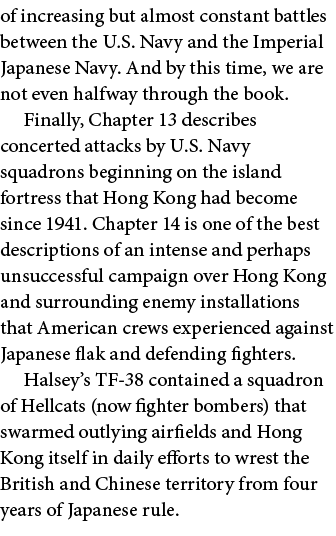
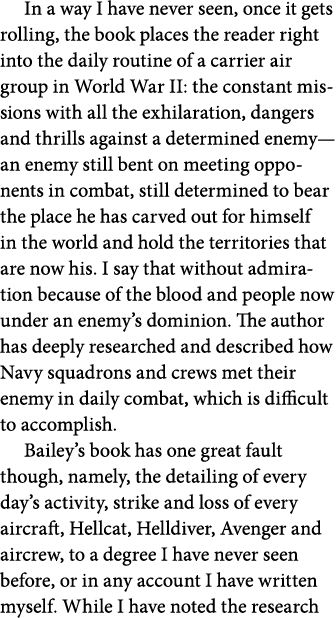
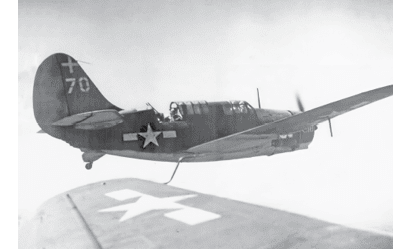

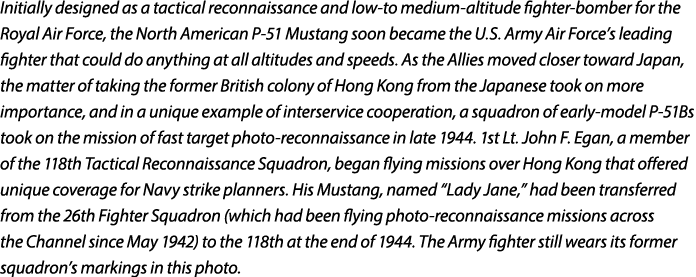
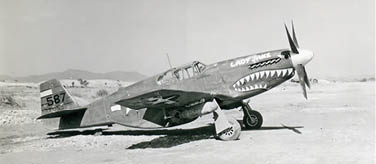







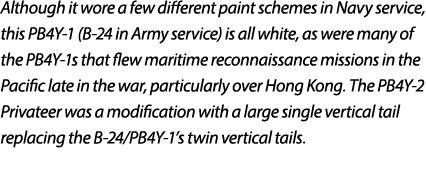


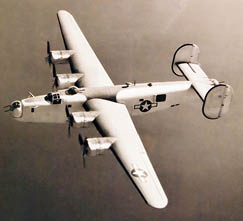




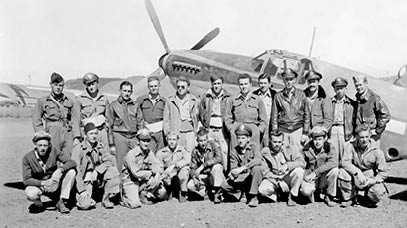





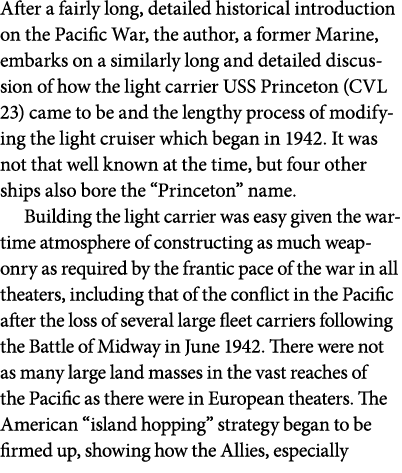

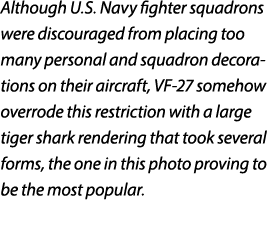

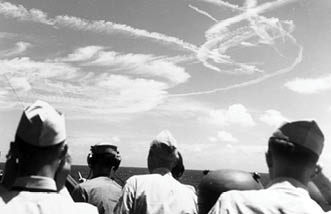



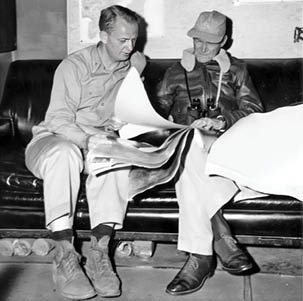



USS Princeton: The Life and Loss of ‘Sweet P’ By David R. Leick, Osprey Publishing, UK. 2024. 304 pp. Ill.
After a fairly long, detailed historical introduction on the Pacific War, the author, a former Marine, embarks on a similarly long and detailed discussion of how the light carrier USS Princeton (CVL 23) came to be and the lengthy process of modifying the light cruiser which began in 1942. It was not that well known at the time, but four other ships also bore the “Princeton” name.
Building the light carrier was easy given the wartime atmosphere of constructing as much weaponry as required by the frantic pace of the war in all theaters, including that of the conflict in the Pacific after the loss of several large fleet carriers following the Battle of Midway in June 1942. There were not as many large land masses in the vast reaches of the Pacific as there were in European theaters. The American “island hopping” strategy began to be firmed up, showing how the Allies, especially the U.S.—which took over the lead of prosecuting the war—were going to find or build appropriate air bases from which to launch strategic air strikes against Japanese targets—especially on the “Home Islands” themselves, to achieve victory faster. A fleet of small but capable aircraft carriers were needed to populate the huge ocean as the frantic pace of the war quickened. The goal of reaching a more advantageous geographic position was growing more possible.
It took some time for newly completed CVLs and their air wings to become an effective addition to the Navy’s combat capabilities, along with those of the smaller fleet of British carriers.
Operation Flintlock (Jan. 31-Feb. 3, 1944) against Kwajalein and other tiny islets brought the U.S. fleet closer to the Japanese main land. Page 114 describes Princeton’s first anniversary, by which time the light carrier had been involved in combat—this chapter being almost a book by itself—detailing its service with Task Force 58 under seasoned Vice Adm. Marc Mitscher as it moved ever closer to Japan.
The brief discussion on page 54 of new U.S. Navy aircraft is quite informative and unique, while page 57 describes Princeton’s first actions on Aug. 18, 1943.
The last pages of Chapter 3, “A Time for Battle,” discuss the loss of U.S. submarines by Imperial Japanese Navy (IJN) submarines during Operation Galvanic, Nov. 20-23, 1943, which was a bit off the book’s main topic about the Princeton, but covers the incredibly bloody landing on Tarawa’s Betio Island, which became part of Marine Corps battle legend.
Indeed, the chapter is fairly long, describing in great detail continued fighting in and around northern New Guinea as TF-58, including the Princeton, remained constantly on the prowl for individual Mitsubishi G4M (known as “Betty”) bombers, now snoopers, most of which were intercepted by the Princeton’s Hellcats.
Chapter 5 describes the Princeton’s most active squadron, Fighter Squadron (VF) 27, which had first fought in Operation Torch, the invasion of North Africa on Nov. 8, 1942, as a focused, concentrated operation against Vichy, France—the setting for the Oscar-winning movie “Casablanca.”
Details of Operation Forager against the Marianas repeat the misidentification of a Francis P1Y also described in the VF-18 book.
As the great American admirals took control of Forager and other operations against the oncoming IJN task forces, the Pacific War began to accelerate toward Japan. The author never wavers in showing his research into this account. It is truly amazing that three years after Pearl Harbor, when the U.S. Navy seemed to be at the bottom of the sea and only a long, steep climb was the course, America had to take the ultimate victory over a determined and highly dangerous enemy. Terrible, costly confrontations in men and material still lay ahead in the coming months.
On page 166, this late in the book, the author takes time to describe in detail the long fight of Hellcat ace Lt. Dick Stambook, during which he shot down four Zeros and one Judy dive bomber, with judicious quotes from him.
Over Formosa, there was a lot of aerial action with U.S. Navy squadrons claiming large numbers of kills opposed by the same big IJN and IJA pilots flying newly-introduced types like the Nakaima Jill torpedo bombers and Francis bombers, as well as the powerful Nakaima Ki. 44 “Tojo.”
The book continues to its inevitable conclusion: the loss of the Princeton in heavy combat. I have included a few photos that show that action.
A typical day—if any day aboard an aircraft carrier in almost daily combat can be called “typical”—eight VF-27 Hellcats were returning from an early launch to escort nine VT-27 Avengers. Before clearing the fighters to land, the Avengers were moved below to the hangar deck, after which 10 F6Fs were recovered, eight of which had to be refueled along with six TBMs, each armed with a single torpedo.
All of this activity took time that resulted in the Avenger TBMs never being launched, because lookouts on USS Essex (CV 9) signaled a “possible bogey” accompanied by another bogey approaching.
The two “bogeys” soon turned out to be two Yokosuka D4Y Susei (Comet) “Judy” dive bombers, now only a possible 25 miles away. Descendants of the Aichi D3Y “Val” fixed landing-gear dive bombers that ravaged Pearl Harbor on Dec. 7, 1941, they now had retractable gear and an inline engine instead of the early radial power plant, and carried a single 551-pound bomb on a centerline mount.
The two dive bombers soon released their bombs over the Princeton, but while one bomb missed, the second aircraft’s bomb made a classic hit right between the ship’s two elevators, penetrating the flight deck and exploding in the highly vulnerable hangar deck crammed with other Hellcats and Avengers. It was a perfect hit along the carrier’s centerline.
The blast could be heard and felt throughout the ship, but especially on the bridge. It was obvious Princeton was in serious trouble as every crewman, officer and enlisted, turned to in constantly-rehearsed defensive actions to save her.
The enemy bomb went through the wooden flight deck to the hangar deck, exploding and creating a huge fire fed by gasoline needed to fuel waiting aircraft and spread to cause more explosions that ultimately doomed the ship.
Although the light cruiser Birmingham (CL 62) came close to help fight the fires during the afternoon, there was no hope to save the Princeton. With the explosion and 229 of her crew dead, Birmingham pulled away from the badly damaged carrier, by which time the order had been given to abandon ship, leaving the destroyer USS Irwin (DD 794) to try to pick up the survivors, some between the two ships. The light cruiser Reno (CLAA 96) sent two torpedoes into the Princeton, scuttling her. Finally, at 15:49 (5:49 p.m.), the valiant young carrier sank.
Among the Princeton’s wounded was Capt. John M. Hoskins, who was aboard to relieve the current captain. The Judy’s bomb’s blast had mangled his right foot to the extent the ship’s doctor had to amputate it, even as the wounded officer exhorted his future crew to save the carrier. He would survive to command another USS Princeton (CV-37).
The author continues his incredible, detailed account with analysis of what probably happened in various spaces as the carrier fought for her life, all while her reduced crew dealt with continued Japanese assaults as the burning, smoking hulk refused to sink. However, as “Sweet P” finally did sink, the men of TF-38, led by Adm. William Halsey, continued to fight the numbers of IJN ships that kept coming toward them, still very much a potent and determined force to be reckoned with. Indeed, three destroyers, and two more U.S. Navy carriers were sunk, but her remaining sister ships and crews stayed in the fight.
There is more, but I will leave it to the readers to find a copy of this author’s biography of a fighting ship to see what follows the Princeton’s demise. An excellent account of perhaps not one of America’s best-known ships of World War II, but one worthy of attention in every way. 





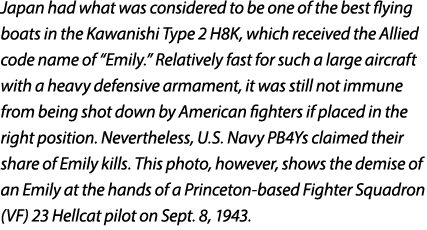


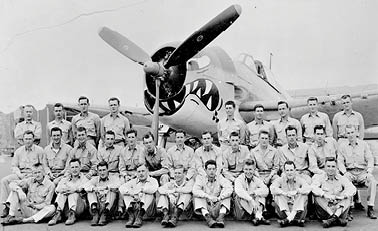

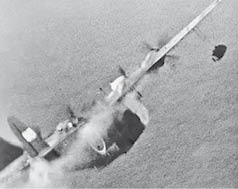



USS Princeton: The Life and Loss of ‘Sweet P’ By David R. Leick, Osprey Publishing, UK. 2024. 304 pp. Ill.
After a fairly long, detailed historical introduction on the Pacific War, the author, a former Marine, embarks on a similarly long and detailed discussion of how the light carrier USS Princeton (CVL 23) came to be and the lengthy process of modifying the light cruiser which began in 1942. It was not that well known at the time, but four other ships also bore the “Princeton” name.
Building the light carrier was easy given the wartime atmosphere of constructing as much weaponry as required by the frantic pace of the war in all theaters, including that of the conflict in the Pacific after the loss of several large fleet carriers following the Battle of Midway in June 1942. There were not as many large land masses in the vast reaches of the Pacific as there were in European theaters. The American “island hopping” strategy began to be firmed up, showing how the Allies, especially the U.S.—which took over the lead of prosecuting the war—were going to find or build appropriate air bases from which to launch strategic air strikes against Japanese targets—especially on the “Home Islands” themselves, to achieve victory faster. A fleet of small but capable aircraft carriers were needed to populate the huge ocean as the frantic pace of the war quickened. The goal of reaching a more advantageous geographic position was growing more possible.
It took some time for newly completed CVLs and their air wings to become an effective addition to the Navy’s combat capabilities, along with those of the smaller fleet of British carriers.
Operation Flintlock (Jan. 31-Feb. 3, 1944) against Kwajalein and other tiny islets brought the U.S. fleet closer to the Japanese main land. Page 114 describes Princeton’s first anniversary, by which time the light carrier had been involved in combat—this chapter being almost a book by itself—detailing its service with Task Force 58 under seasoned Vice Adm. Marc Mitscher as it moved ever closer to Japan.
The brief discussion on page 54 of new U.S. Navy aircraft is quite informative and unique, while page 57 describes Princeton’s first actions on Aug. 18, 1943.
The last pages of Chapter 3, “A Time for Battle,” discuss the loss of U.S. submarines by Imperial Japanese Navy (IJN) submarines during Operation Galvanic, Nov. 20-23, 1943, which was a bit off the book’s main topic about the Princeton, but covers the incredibly bloody landing on Tarawa’s Betio Island, which became part of Marine Corps battle legend.
Indeed, the chapter is fairly long, describing in great detail continued fighting in and around northern New Guinea as TF-58, including the Princeton, remained constantly on the prowl for individual Mitsubishi G4M (known as “Betty”) bombers, now snoopers, most of which were intercepted by the Princeton’s Hellcats.
Chapter 5 describes the Princeton’s most active squadron, Fighter Squadron (VF) 27, which had first fought in Operation Torch, the invasion of North Africa on Nov. 8, 1942, as a focused, concentrated operation against Vichy, France—the setting for the Oscar-winning movie “Casablanca.”
Details of Operation Forager against the Marianas repeat the misidentification of a Francis P1Y also described in the VF-18 book.
As the great American admirals took control of Forager and other operations against the oncoming IJN task forces, the Pacific War began to accelerate toward Japan. The author never wavers in showing his research into this account. It is truly amazing that three years after Pearl Harbor, when the U.S. Navy seemed to be at the bottom of the sea and only a long, steep climb was the course, America had to take the ultimate victory over a determined and highly dangerous enemy. Terrible, costly confrontations in men and material still lay ahead in the coming months.
On page 166, this late in the book, the author takes time to describe in detail the long fight of Hellcat ace Lt. Dick Stambook, during which he shot down four Zeros and one Judy dive bomber, with judicious quotes from him.
Over Formosa, there was a lot of aerial action with U.S. Navy squadrons claiming large numbers of kills opposed by the same big IJN and IJA pilots flying newly-introduced types like the Nakaima Jill torpedo bombers and Francis bombers, as well as the powerful Nakaima Ki. 44 “Tojo.”
The book continues to its inevitable conclusion: the loss of the Princeton in heavy combat. I have included a few photos that show that action.
A typical day—if any day aboard an aircraft carrier in almost daily combat can be called “typical”—eight VF-27 Hellcats were returning from an early launch to escort nine VT-27 Avengers. Before clearing the fighters to land, the Avengers were moved below to the hangar deck, after which 10 F6Fs were recovered, eight of which had to be refueled along with six TBMs, each armed with a single torpedo.
All of this activity took time that resulted in the Avenger TBMs never being launched, because lookouts on USS Essex (CV 9) signaled a “possible bogey” accompanied by another bogey approaching.
The two “bogeys” soon turned out to be two Yokosuka D4Y Susei (Comet) “Judy” dive bombers, now only a possible 25 miles away. Descendants of the Aichi D3Y “Val” fixed landing-gear dive bombers that ravaged Pearl Harbor on Dec. 7, 1941, they now had retractable gear and an inline engine instead of the early radial power plant, and carried a single 551-pound bomb on a centerline mount.
The two dive bombers soon released their bombs over the Princeton, but while one bomb missed, the second aircraft’s bomb made a classic hit right between the ship’s two elevators, penetrating the flight deck and exploding in the highly vulnerable hangar deck crammed with other Hellcats and Avengers. It was a perfect hit along the carrier’s centerline.
The blast could be heard and felt throughout the ship, but especially on the bridge. It was obvious Princeton was in serious trouble as every crewman, officer and enlisted, turned to in constantly-rehearsed defensive actions to save her.
The enemy bomb went through the wooden flight deck to the hangar deck, exploding and creating a huge fire fed by gasoline needed to fuel waiting aircraft and spread to cause more explosions that ultimately doomed the ship.
Although the light cruiser Birmingham (CL 62) came close to help fight the fires during the afternoon, there was no hope to save the Princeton. With the explosion and 229 of her crew dead, Birmingham pulled away from the badly damaged carrier, by which time the order had been given to abandon ship, leaving the destroyer USS Irwin (DD 794) to try to pick up the survivors, some between the two ships. The light cruiser Reno (CLAA 96) sent two torpedoes into the Princeton, scuttling her. Finally, at 15:49 (5:49 p.m.), the valiant young carrier sank.
Among the Princeton’s wounded was Capt. John M. Hoskins, who was aboard to relieve the current captain. The Judy’s bomb’s blast had mangled his right foot to the extent the ship’s doctor had to amputate it, even as the wounded officer exhorted his future crew to save the carrier. He would survive to command another USS Princeton (CV-37).
The author continues his incredible, detailed account with analysis of what probably happened in various spaces as the carrier fought for her life, all while her reduced crew dealt with continued Japanese assaults as the burning, smoking hulk refused to sink. However, as “Sweet P” finally did sink, the men of TF-38, led by Adm. William Halsey, continued to fight the numbers of IJN ships that kept coming toward them, still very much a potent and determined force to be reckoned with. Indeed, three destroyers, and two more U.S. Navy carriers were sunk, but her remaining sister ships and crews stayed in the fight.
There is more, but I will leave it to the readers to find a copy of this author’s biography of a fighting ship to see what follows the Princeton’s demise. An excellent account of perhaps not one of America’s best-known ships of World War II, but one worthy of attention in every way. 



